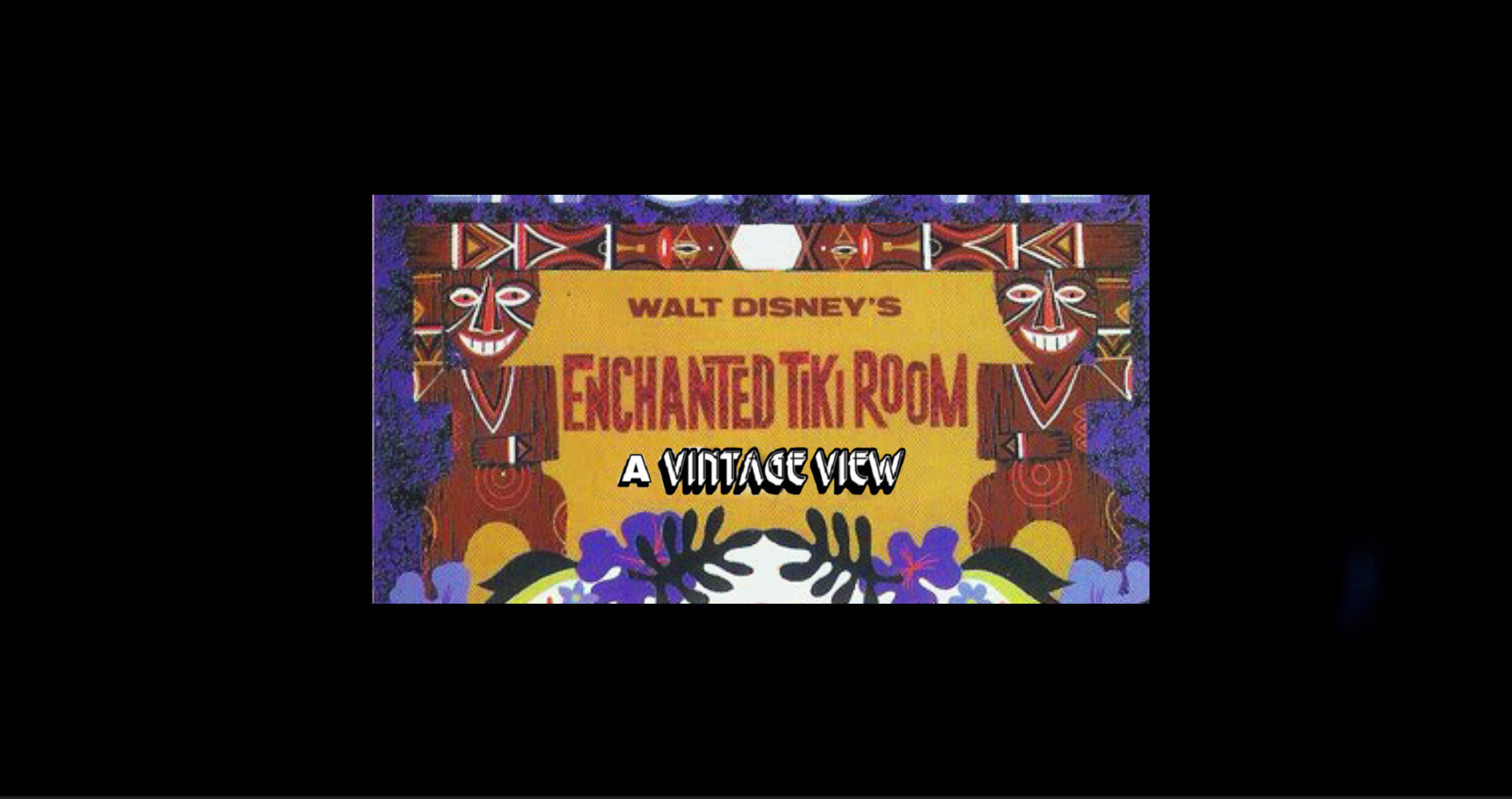WALT DISNEY’S ENCHANTED TIKI ROOM
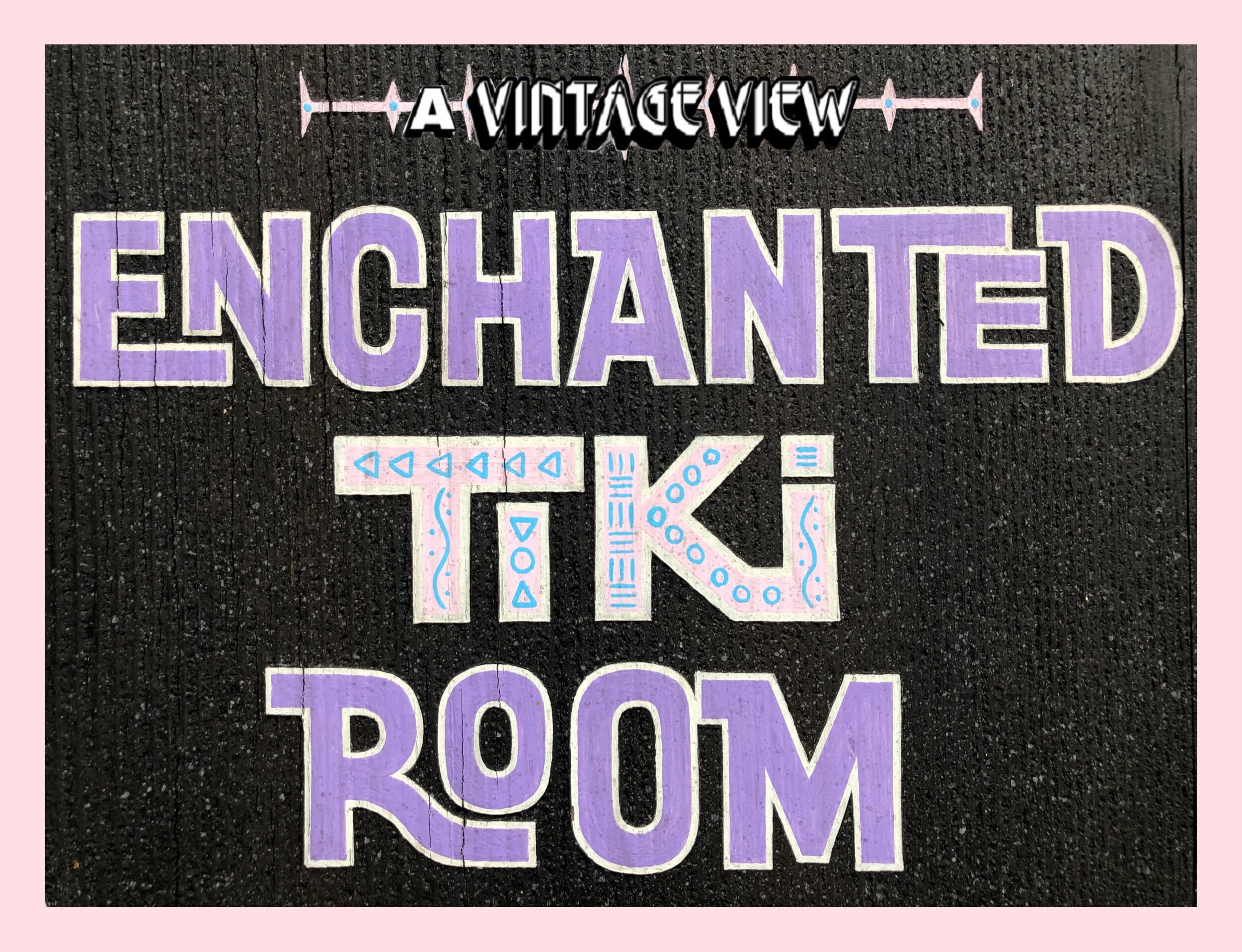
(June 15, 1963* - present)
*Sources: “The Disneyland Story” (1963) and the “Disneyland Admission Media Rides and Attractions Report” (1971).
Walt Disney’s Enchanted Tiki Room was the first, musical Audio-Animatronics show at Disneyland. Here, animated birds, flowers, and tiki gods perform in a musical island celebration.
“Prologue - From Cams and Levers, to Confucius, to United States Presidents”
Cams and Levers - Early developments in the history of Audio-Animatronics date to twelve years before the debut of Walt Disney’s Enchanted Tiki Room. Back in 1951, four years before Disneyland premiered to audiences, Roger Broggie (a humble Walt Disney Studio Camera Repair Department machinist who had assisted with the fabrication of Walt’s Carolwood Pacific Lilly Belle engine) and Wathel Rogers (an animator with technical skill) fashioned the first ever “cam and lever” Audio-Animatronics figure. This Imagineering milestone led to the development of two human figures.
Automatons - “Walt was on vacation in New Orleans when he found an antique birdcage that featured a mechanical bird that would sing and move its beak. Upon returning, bird cage in hand (in truth he bought two, one he would keep for his miniature collection), Walt brought one bird to WED. He immediately had Imagineer Wathel Rogers take apart the bird and figure out the way they moved-Walt reasoned that he and his staff had done animation on film for years, but it would be fun to try to do three-dimensional animation.”
Masterplanning an Audio-Animatronics Chinese Restaurant - Roger Broggie remembered “the first primitive attempt at creating a life-size Audio-Animatronics figure, long before the days of computers and electronics. ‘Our idea,’ said Broggie, ‘was to have a Confucius-type character in a restaurant, who could answer questions from the audience, mixed with his own sayings, all orchestrated by a live emcee.’ Broggie and Wathel Rogers taxed their remarkable mechanical abilities to the limit, finding ways to stuff the head with enough controls to provide mouth movements and eye movements and blinks. At one point they installed gag false teeth that could be wound up to clack. The ‘brains’ consisted of a solenoid, a cylindrical coil of wire that created a magnetic field to activate the controls. Finally, the head was covered with a flexible latex rubber for its skin.” Crude as it was, the Chinese head created a sensation, according to Ken Anderson. He had been invited to an office wing where the head was dis-played, where he found a creature that might have come from a classic horror movie. “‘I couldn't see any wire,’ said Anderson. ‘Here was this head with its eyes closed, propped up on the table. A button was pushed and it came to life and started to talk to you. It was spooky… as spooky as anything I'd ever seen before.’”
By September 28, 1958, the related Disneyland, Inc. job 4062-500 (Chinese Arcade Area) was in development at a cost of $812. Wally Boag recalled (in “Homecoming Destination Disneyland” by Carlene Thie): “At one time Walt was thinking of putting a Chinese restaurant on Main Street with a Confucius theme. We were working on some wonderful bits of business for the animated dragon we were going to have there. It didn't work out for a number of reasons.” Meanwhile (in 1958), Walt had also commissioned a Mr. Lincoln Audio-Animatronic figure prototype. However, that project was not completed, and Lincoln was shelved for five more years, while other Disneyland projects were attended to.
By 1958, Disneyland had plenty of animated animals (owning to Roger Broggie’s “cam-lever” technology) - in Nature’s Wonderland and the Jungle Rivers of the World regions of Disneyland! As crude as the technology was in these “static” and “simple” figures, “The term ‘Audio-Animatronics’ was first used to describe the bears and beavers in Nature's Wonderland.” There were also figures inside The Timex Shop on Main Street, U.S.A. which featured a “Bird Watch”, made in 1770 by Jacob Friscard. The watch contained a tiny bird nestled in a mound of multicolored gold that sang as it moved its bill, wings, tail, and body. By 1960, WED Imagineering had moved to 800 Sonora and work proceeded on another show starring an Audio-Animatronics cast.
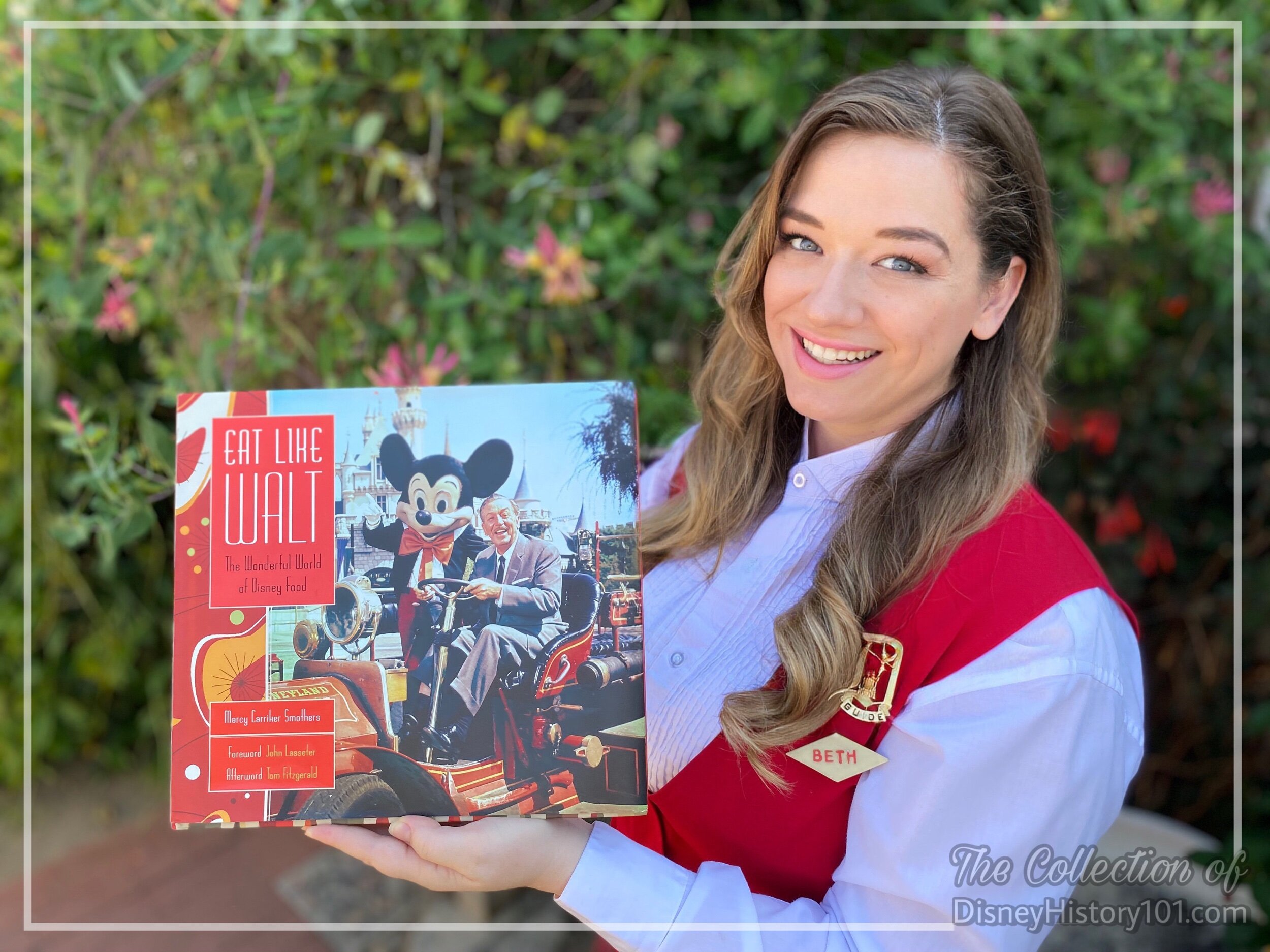
“The Birth of Walt Disney's Enchanted Tiki Room”
Audio-Animatronics® technology was developed by Walt Disney Imagineering. Inspired by early 1900s technology, the highly sophisticated WED patented technology (electronically synchronizing voice, sound effects and music with Animatronic movement) was a brand new force of life - the first of its kind in 1960. Walt would introduce this brand new technology within his Magic Kingdom in Anaheim, amidst a $7 million Park expansion, which began in 1962.
According to Dave Smith (Chief Archivist Emeritus of The Walt Disney Archives), “From checking the materials in the Walt Disney Archives, it appears that the name of the attraction came first - memos in the file use it at least as early as the Fall of 1962.” [Disney Facts Revealed by Dave Smith, 2016] By 1962, the concept of “Walt Disney’s Enchanted Tiki Room” was intended to be “a third new Stouffer Restaurant… the Park’s only ‘by reservation only’ restaurant” featuring “shows put on by tikis and tropical flowers that actually ‘come to life!’” [Vacationland, Fall of 1962] “Walt envisioned a restaurant where animatronic birds would perform for Guests as they dined, but it was soon decided that a show would allow more Guests to see these true wonders of their time.”
If you would like to read more about this “chapter” of Walt Disney’s Enchanted Tiki Room, I highly recommend adding Marcy Smothers’ “Eat Like Walt - The Wonderful World of Disney Food” to your personal Disney Home Library! Therein, Marcy has extensively researched and finely crafted a small section of a chapter dedicated to “Walt Disney’s Disneyland - Adventureland” If you would like to bring the magic of Disneyland restaurants and concessions to your dining room table, “please step this way” toward www.eatlikewalt.com where Marcy has shared a few recipes for memorable Disneyland menu options, so you too can “Eat Like Walt.”
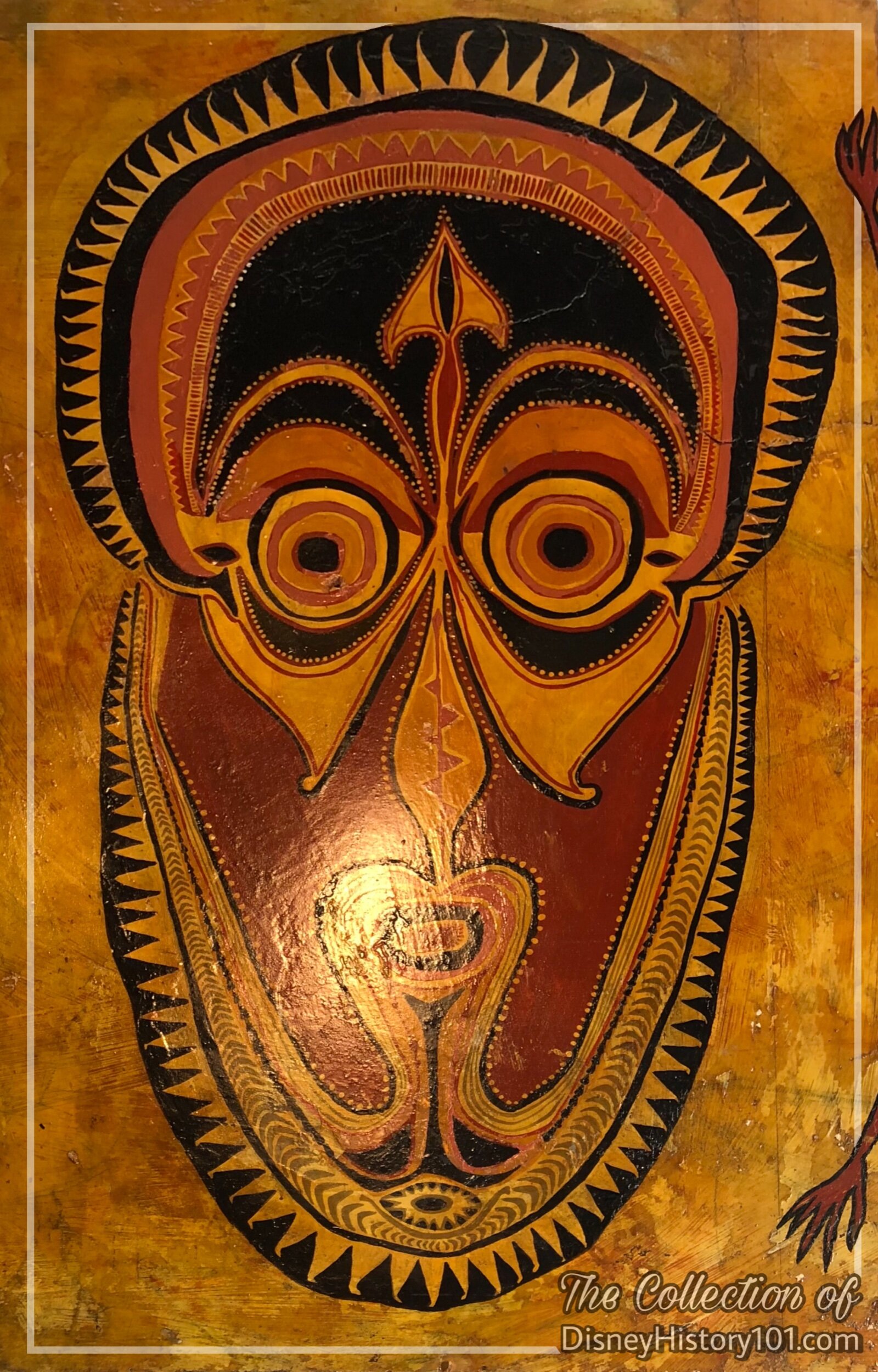
Polynesian Study by Rolly Crump, 1962.
“WED Imagineering Design and Blue Sky for Tikis”
By 1962, John Hench was attached to the project, his hands giving life to some of the earliest concept artwork. By 1962, Roland Crump also created some of his first Polynesian cultural studies (pictured above) which would develop into the designs of the tikis, masks and shields of Walt Disney’s Enchanted Tiki Room and Lanai. Artists like Bob Sewell and Marc Davis would also contribute much to the project. Marc created many concept sketches of tiki poles and birds (pictured below). Collin Campbell had been reassigned to WED (now Walt Disney Imagineering), to work full time on designing for Disneyland. Collin’s first assignment was to work with the WED team on “Walt Disney’s Enchanted Tiki Room,” helping it evolve from a restaurant with floorshow to a theatrical extravaganza. In “One Little Spark! Mickey’s Ten Commandments and The Road to Imagineering,” Marty Sklar who was involved in the development recalled: “Yes, there were great philosophers on our early Imagineering teams - just as there are today. Yet no understanding of the Imagineers and their successes around the world is possible without recognizing that the achievements of the Imagineers are not those of brilliant individuals acting alone - it’s all about the blending of talents. In a word, its teamwork.”
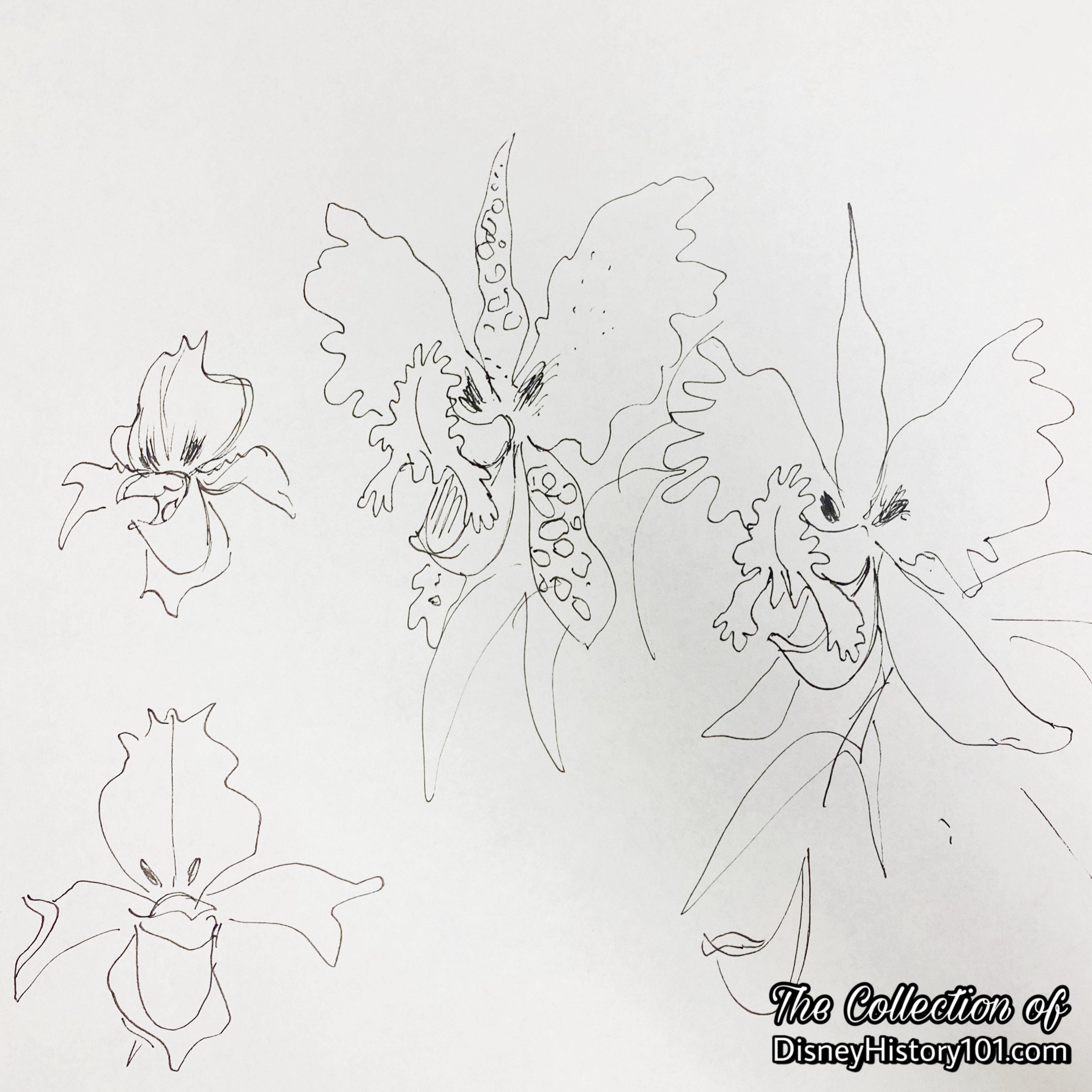
A concept for crooning flowers by Marc Davis.
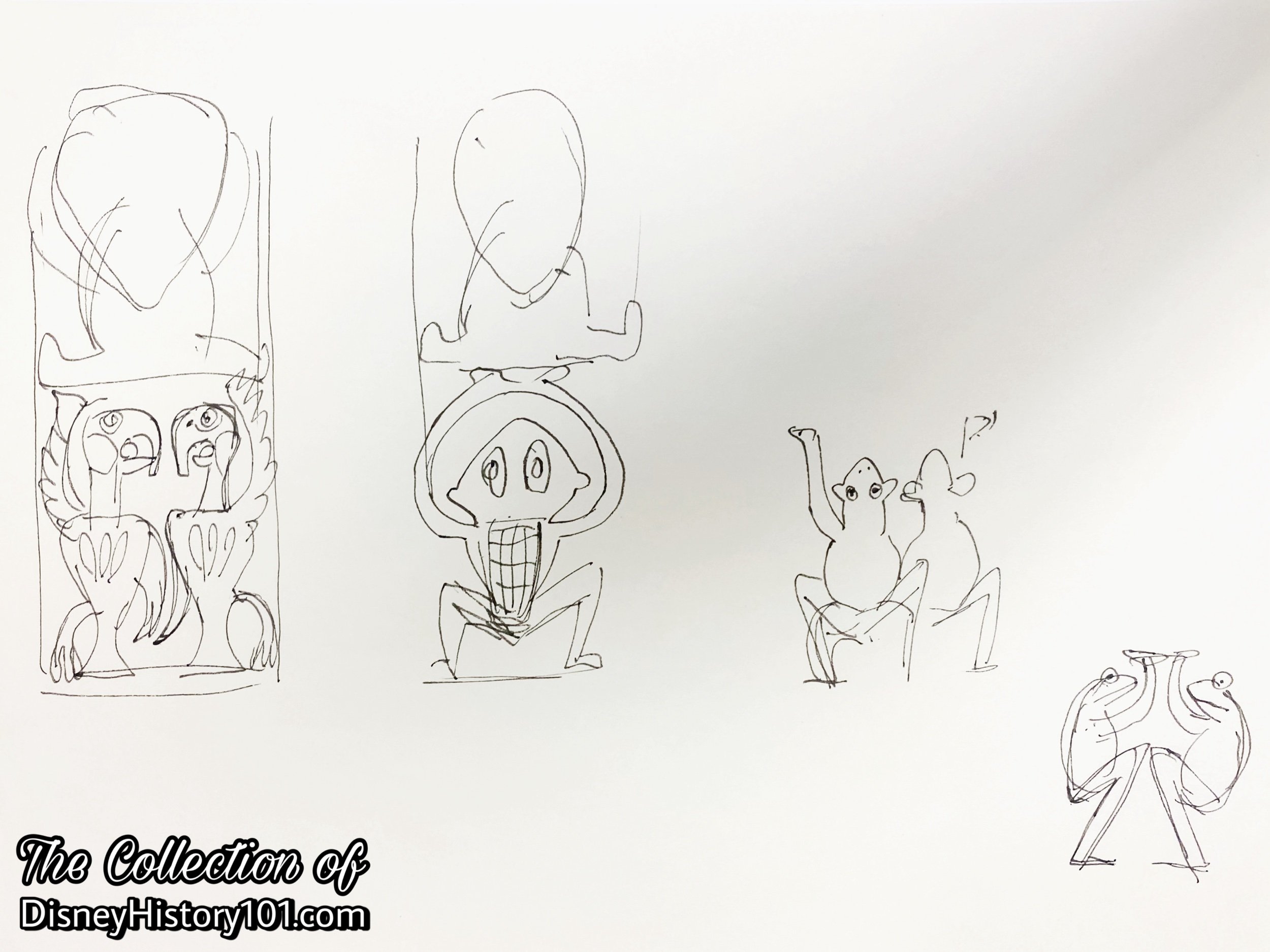
A concept for Enchanted Tikis by Marc Davis.
Tiki Design - After being assigned to WED and this project by Walt Disney himself, Roland decided to research Polynesian culture and art. One of his first paintings was a Polynesian face which was recreated on one of the attraction’s exterior decorations. Roland Crump also designed the South Seas tikis of Walt Disney’s Enchanted Tiki Room and Lanai. “‘Walt wanted everyone working in three dimensions,’ Rolly says, explaining how the model shop came to be the core of WED Enterprises. ‘He didn't trust flat illustrations and thought they could lie.’ As Walt's plans for Disneyland Park grew, so did his first group of ‘dimensional designers.”

Tiki Room Dialogue and Lyrics.
“‘Tiki Birds’ Begin to Vocalize”
Wally Boag once recalled (in Homecoming: Destination Disneyland): “Fulton Burley and I developed a script for those crazy birds and then we voiced them.” According to Dave Smith (previous Chief Archivist Emeritus of the Walt Disney Archives), “Wally Boag, the comedian at the Golden Horseshoe, wrote the script for the Enchanted Tiki Room and he happened to be bald. One of the funniest parts of the show was when Wally removed his toupee.” [Disney Facts Revealed by Dave Smith, 2016] This may be the reason why it is said, that “Herr Schmidt… has no hair.”
“You Stay Off of My Bach - Music of Walt Disney’s Enchanted Tiki Room”
According to “THE DISNEY THEME SHOW - an introduction to the art of Disney outdoor entertainment”: “Important are the sounds which permeate the scene, for without them, the theme show is a silent movie . . . but with them it is a symphony of music, effects, and natural sounds that the finest stereo system in the world can't duplicate. These sights and sounds are provided not only by imagineered attractions and shows, but also through the multi-talented efforts of live entertainers . . . in special musical groups . . . in parades and pageants . . . providing an everchanging backdrop to virtually every area in the theme show.”
The songwriting duo of Richard M. and Robert B. Sherman were tasked with creating the score and lyrics for the entire South Seas revue. As a sidelight, it is worth noting as with many attractions during Walt’s era (and slightly beyond), the attraction featured an original show song. According to Dave Smith (Chief Archivist Emeritus of The Walt Disney Archives), “The name of the song is actually ‘The Tiki Tiki Tiki Room,’ copyrighted in 1963. The attraction opened in June 1963.” [Disney Facts Revealed by Dave Smith, 2016]

Acetate recordings of “scratch tracks” (rough sound recordings, usually of dialogue), were produced.
“In May of 1962, Bruns conducted a 24-piece orchestra and 15 vocalists through the twelve musical cues he'd devised for the loosely structured presentation. After a brief opening arpeggio, the birds were to twitter and tweet their way through Jacques Offenbach's ‘Barcarolle,’ famed for its later use in his 1881 Les Contes d'Hoffmann (The Tales of Hoffmann) but actually introduced by a chorus of elves in 1864's unsuccessful (and until 2002, ‘lost’) Die Rheinnixen (The Nymphs of the Rhine). Next, harp glissades to accompany a magical fountain as it coaxed the show's lovely chorines to descend from the ceiling in a cage. The ladies would lead the digesting guests in a sing-along of ‘Let's All Sing Like the Birdies Sing,’ a 1932 hit with words by Robert Hargreaves and Stanley Damerell and music by Tolchard Evans and Henry Tilsley-the same quartet behind that favorite of accordionists, ‘Lady of Spain.’ As a finale: an English-language version of ‘The Hawaiian War Chant,’ Johnny Noble’s 1936 tune based upon an 1860 melody by Hawaiï's Prince Leleiohaku (popularized in the 1940s as a lightning-paced rhythm number by Spike Jones and his comedic City Slickers), and a choral rendition of Princess Liliuokalani's 1878 ‘Aloha Oe.’” [50th ANNIVERSARY: Sounds of Disneyland®]

A crooning Bird of Paradise.
“WED and MAPO - From Concept to Production”
WED Enterprises, Inc. and MAPO would work together to produce the Disneyland Show. WED Enterprises, Inc. would master-plan, design, and engineer the concepts. MAPO, Inc. would take those plans and fabricate, assemble, and test the show’s prototype systems and components (including those of the Audio-Animatronics figures).
“From My Limbs, Let New Life Fall - Building Birds and Tikis”
“Developing Enchanted Tikis” - Blaine Gibson had been with the Disney organization since 1939, and had since joined WED (in 1954) as a Sculpture Designer, only to sculpt many human figures and other full-size figures of all kinds. He would be instrumental in developing character sculpts. Rolland Crump also recalled, “I sculpted about 80% of all the Tiki. I had never sculpted before in my life, but Walt believed in all of us and we did things that had never been done before by anyone.”
Bob Sewell, former WED Employee remembered, “Many of us in the Model Shop carved the Tiki Gods roughly in styrofoam. Then we covered them with clay and textured them to look like wood carving. The Disneyland Staff Shop made molds and cast them in fiberglass and sent them back to us for final painting.” Bob also recalled how “Jack Ferges did a great deal of of work on the Tiki Room, especially the dramatic descending fountain, and the giant singing Tiki Gods."
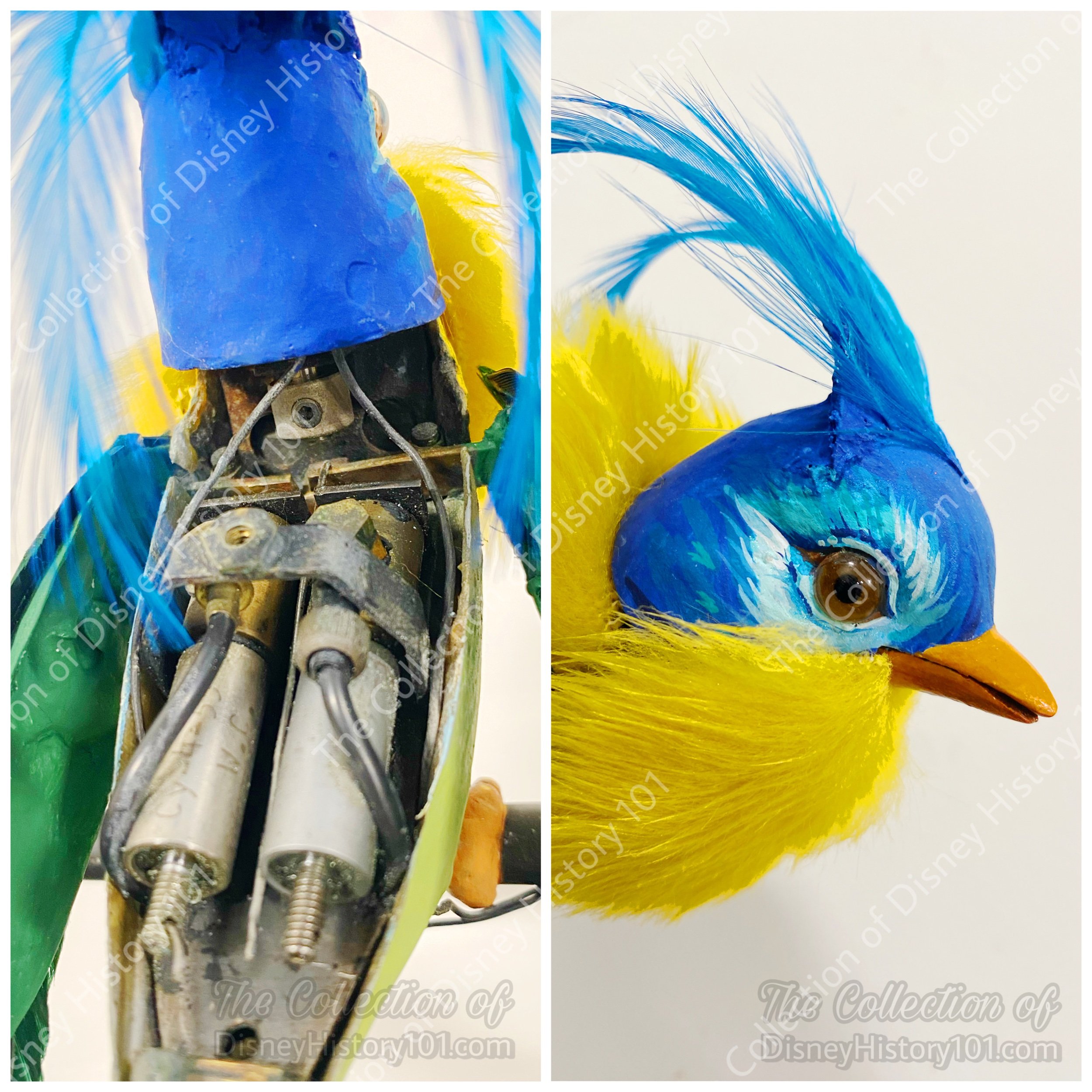
An Audio-Animatronics Enchanted Tiki Bird
“Developing Enchanted Tiki Birds” - Apprentice artist Maggie Elliot began her career with the Model Shop when they were working on Walt Disney’s Enchanted Tiki Room. Harriet Burns (who had previously designed and built the Mickey Mouse Club “Mouse Clubhouse” for the television series and been assigned to every Disneyland project that debuted in 1955) crafted the colorful plumage of the birds for Walt Disney’s Enchanted Tiki Room. After noticing the movement of a cashmere sweater that Walt was wearing, Harriet Burns had the idea to add cashmere to the chest, increasing the Show Quality of the bird’s breathing.
“Programming the Show”
Wathel Rogers (an animator with technical skill) developed the Audio-Animatronics system for the birds (alongside Roger Broggie). An Animator’s Console was used for programming the movements of the Audio-Animatronics® figures. Bill Justice recalled that the early birds in the Enchanted Tiki Room, the first Audio-Animatronics show at Disneyland, “were programmed with a simple handle which resembled a shortened control stick from a fighter plane. Movements were transferred to the birds by moving the stick… the figures were so simple - head turns, beak open and close, body up and down - this system could only be used for the Tiki Room.” [“Justice for Disney”, page 75]
Magnetic tape was the storage and replay medium. According to “E” Ticket Magazine (Winter 1996), the “complex control systems devised for the… shows began as notched platters and light-sensitive photo cells, then magnetic tape.” The show electronically combined and synchronized voices, music, and sound effects with movements of animated performers in the Enchanted Tiki Room operated by one-inch magnetic tape with 14 channels controls 438 separate actions. Now, there existed a Disney-patented technique of electronically synchronizing voices, music and sound effects to animated figures and objects.
A few years later this system became know as DACS, an acronym for the Disney Animation Control System. “Developed by WED and MAPO around 1968, the system was developed to program the movements of Audio-Animatronics using computer disks as opposed to the more mechanical-based system of programming and then saving the information on magnetic tape.” The animation testing area located in the MAPO building was nicknamed “Pelican Alley” due to the testing of the various birds used in the development of the Enchanted Tiki Room. Soon, Walt Disney Imagineers employed Audio-Animatronics® - the Disney-designed system that combines sound, mechanics and electronics for three-dimensional animation to animate birds of the show including “Side Macaw #17” (the most versatile bird in the show), the “Boys in the Back,” the Cockatoo Chorus Girls, and the Barker Bird.
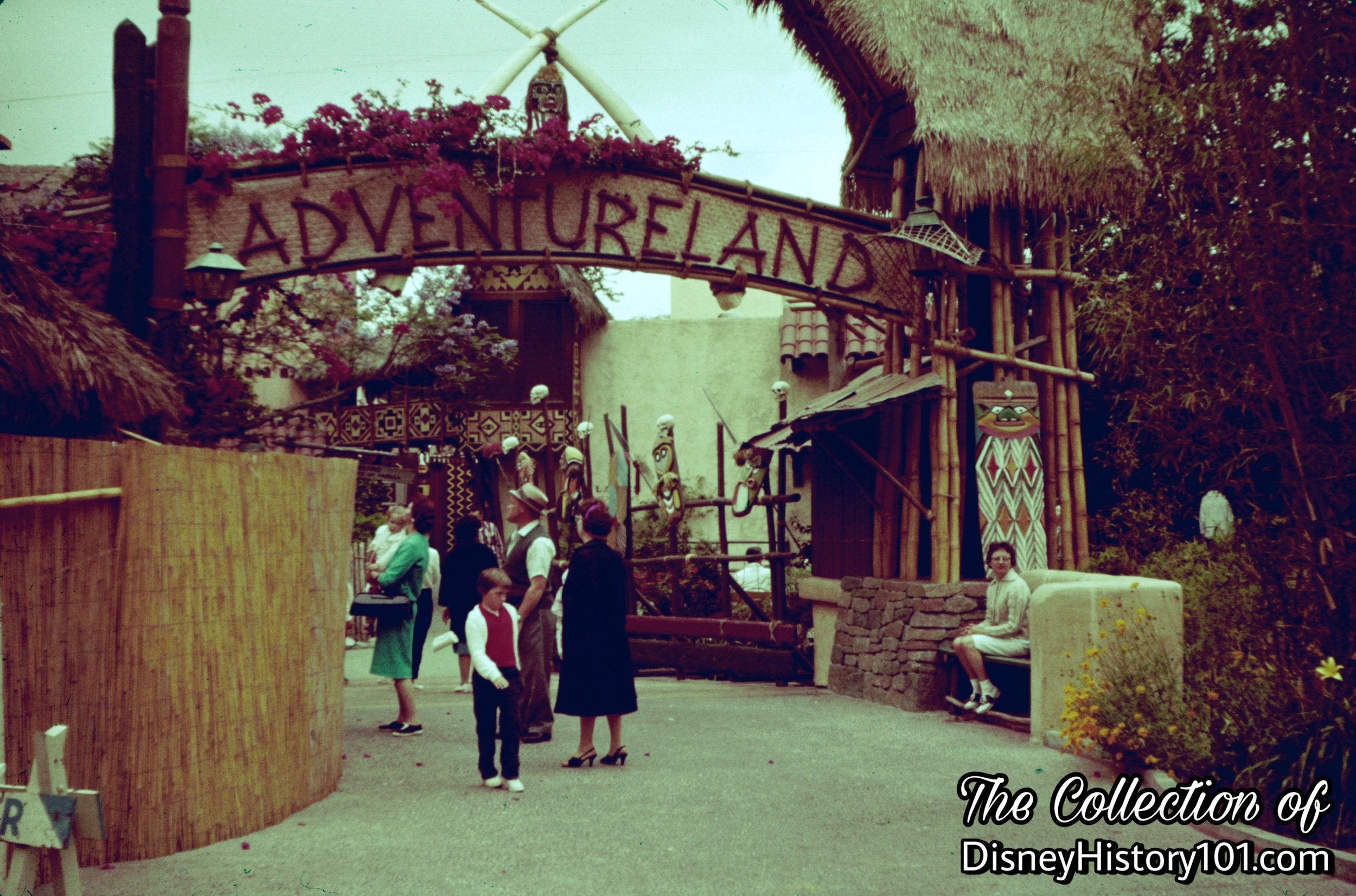
A mysterious new adventure - Walt Disney's Enchanted Tiki Room - is coming together at the Gateway to Adventureland..
“Installation”
Walt Disney’s Enchanted Tiki Room was constructed near the entrance of Adventureland during 1963. Once the major construction activities were completed, a project team installed props, chairs, light bulbs, and more. The installation of Walt Disney’s Enchanted Tiki Room was headed by recent Walt Disney Imagineering hire Orlando Ferrante (who had played football with both Dick Nunis and Ron Miller at USC). He would work with Disneyland Sound Shop Technician Jerry White and others for the installation.
Rolly remembered adding one final touch to the drummers.“When the drummers were beating the drums, it was kind of dull when you looked up there. I took little reflective disks—like you see on Sparkletts trucks—and I screwed them into their eyes so that when the drummers beat, their eyes would sparkle. That was something I did after the show was running, after it was in Disneyland.”
“Control Room”
The control room for the sequences of Audio-Animatronics figures, audio effects, and visual effects was located beneath the attraction. There, the entire timed sequences of the show “including music, lighting, dialogue, sound effects and the animation of all performers” were actuated by signals from a master tape recording. This “elaborate system of signals, amplifiers, switches, cams and solenoid air valves… feed specific orders through electrical wiring and thin plastic tubes to every element of the show. The result is a remote control, push-button production, on-cue from start to finish.” [“Walt Disney Disneyland,” pages 51 & 52, printed by Officine Grafiche Arnoldo Mondadori - Verona; first published 1964]
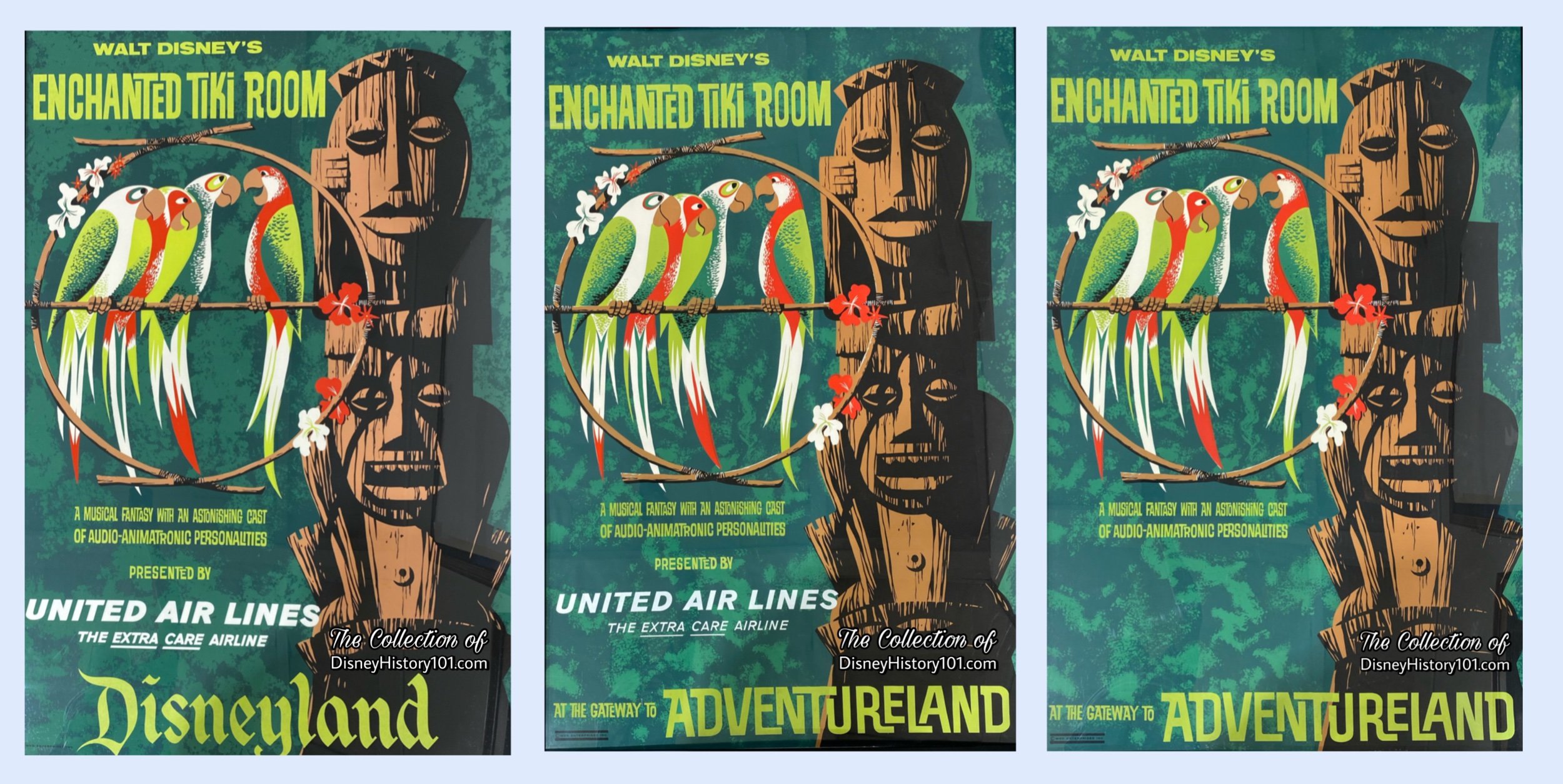
All art work, posters, etc. created by the Walt Disney Studios.
“Participant Sponsors”
The “musical luau” was presented by sponsor United Airlines (now “the official airline of Disneyland”), which offered high flying jets to the most U.S. vacation areas (from Hawaii to Los Angeles) by the time of Disneyland’s Tencennial Celebration in 1965! According to the Tencennial Newsletter: “United Air Lines -- The Official Air Lines of Disneyland will be carrying Julie Reihm to many points of the Nation throughout 1965, including an eight-city trip tied in with promotion of the January 3 ‘Wonderful World of Color’ show.”
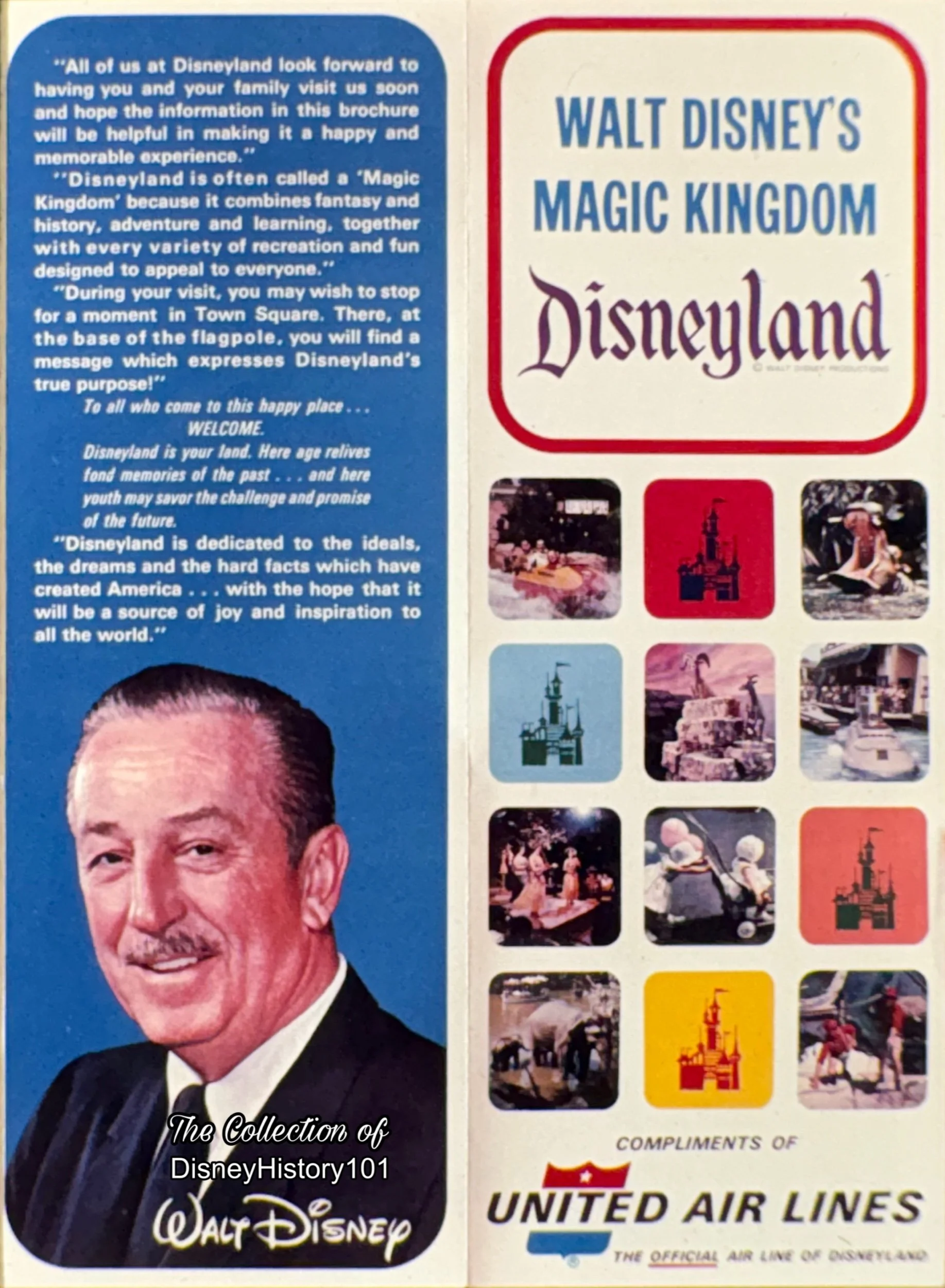
A contemporaneous brochure touts Disneyland Partner United Airlines.
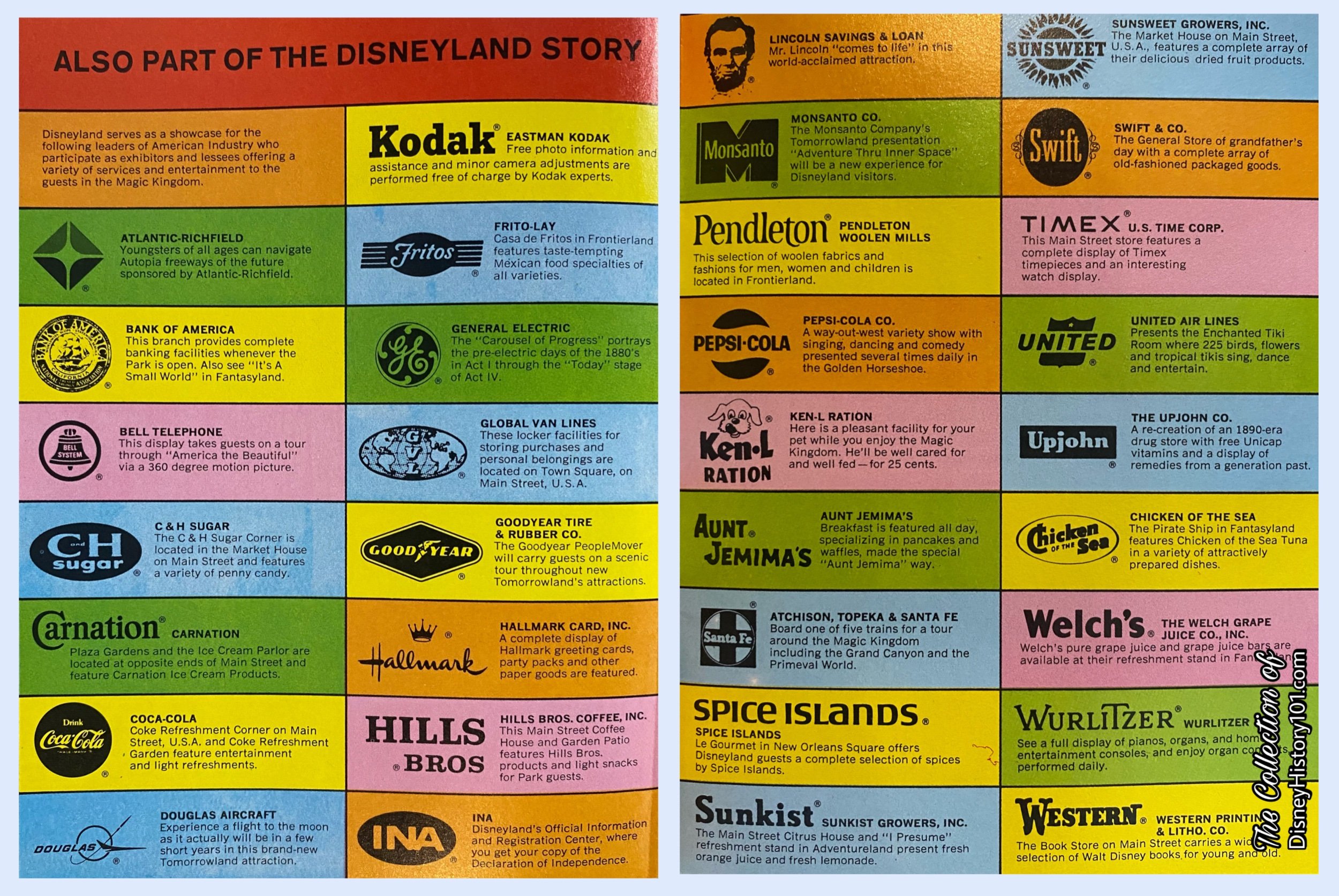
United Airlines was a Disneyland Participant and thus “part of the Disneyland story according to this “Disneyland ‘67” Excerpt.
Beginning in During January of 1976, Castle & Cooke Inc. (or, “Dole Pineapple”) became a Disneyland Corporate Participant, sponsoring Walt Disney’s Enchanted Tiki Room.
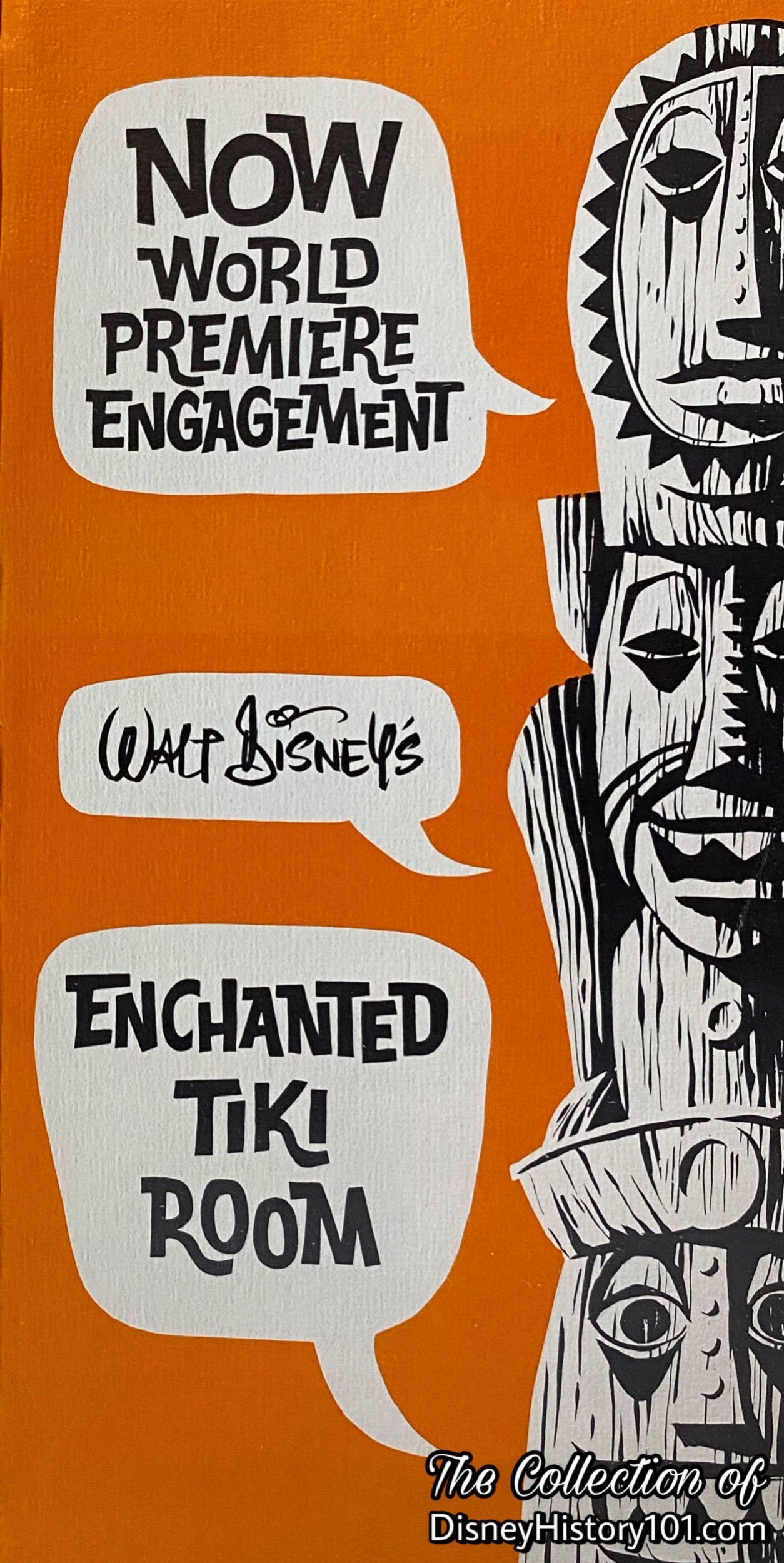
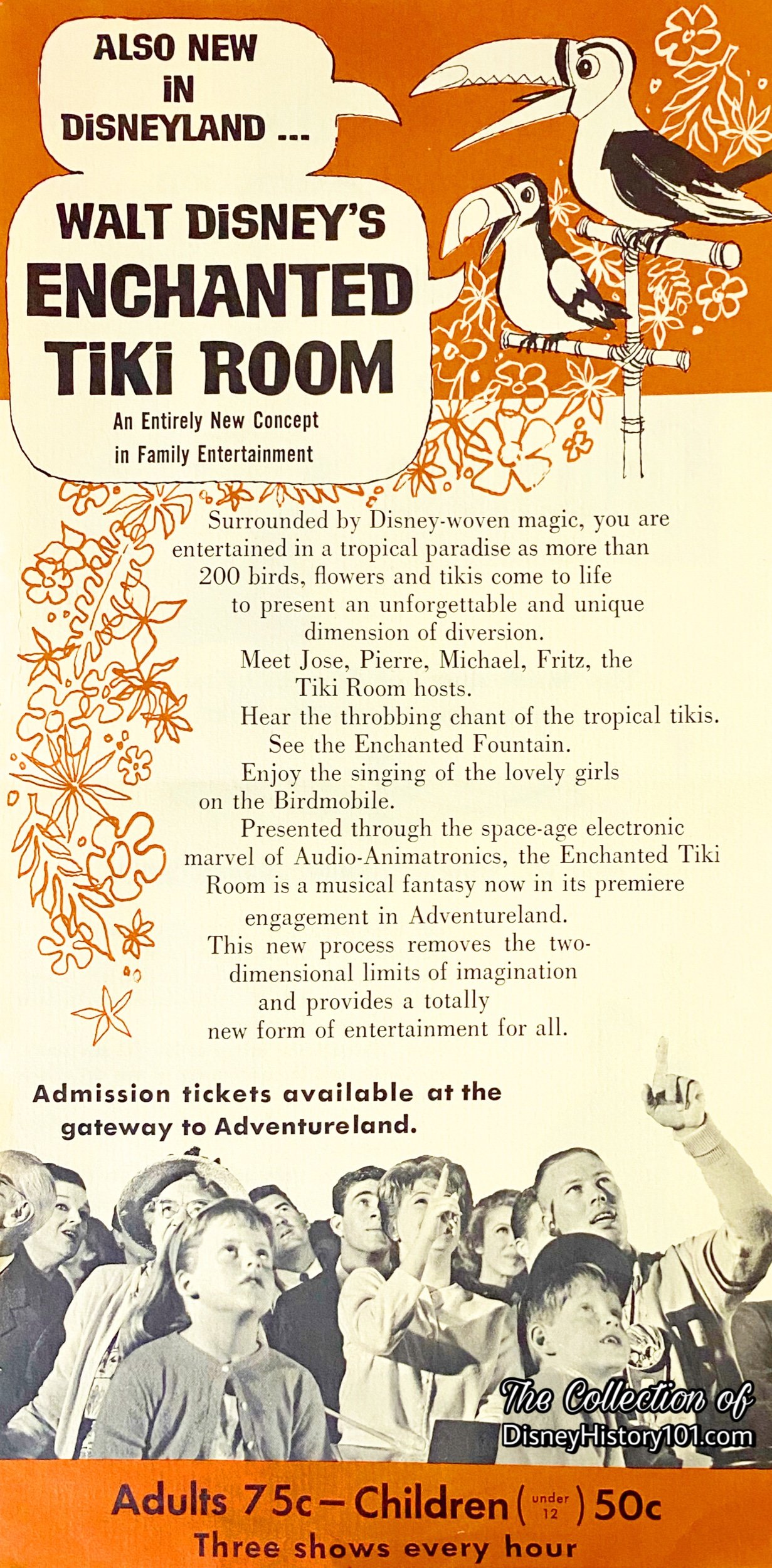
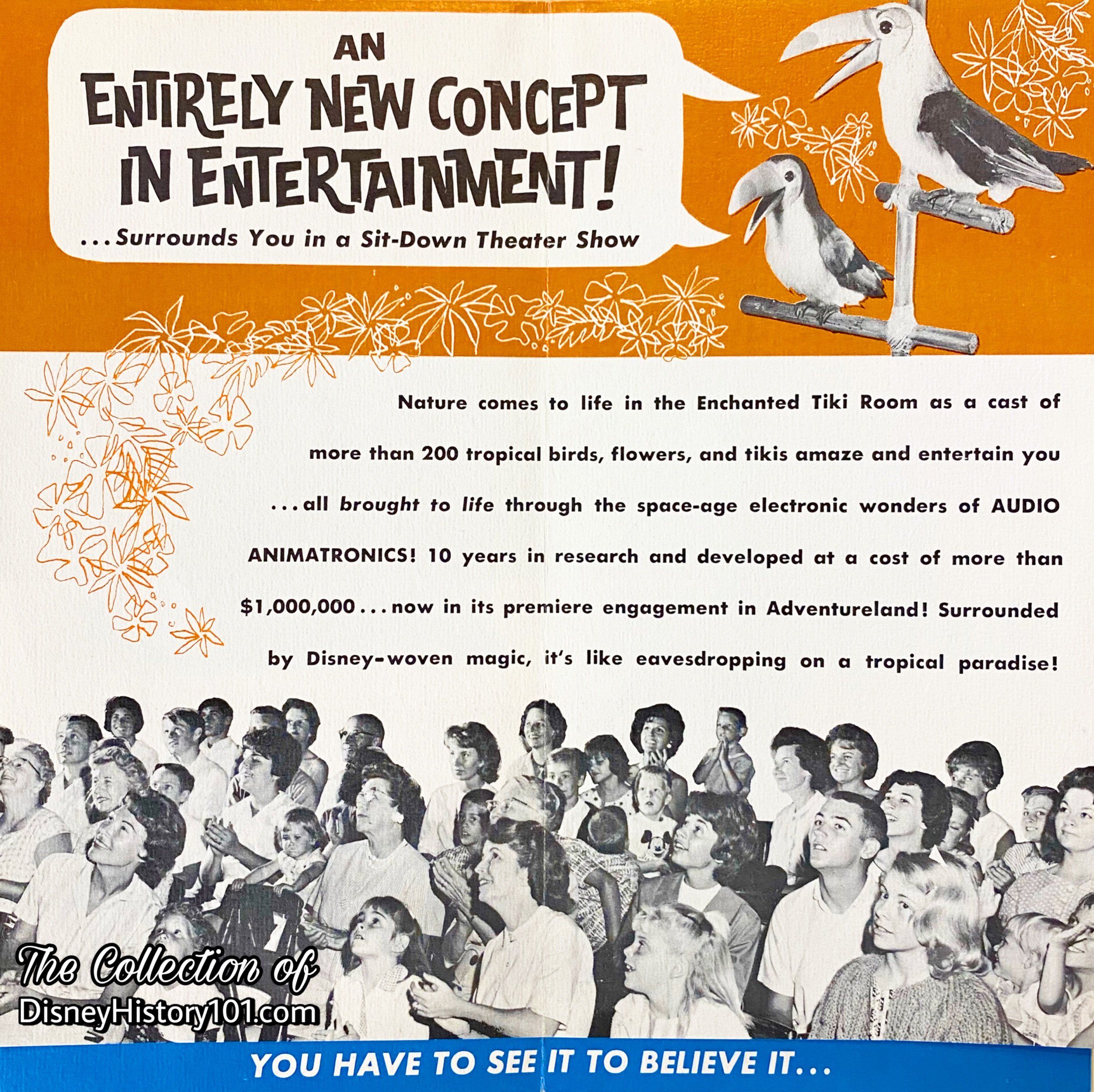
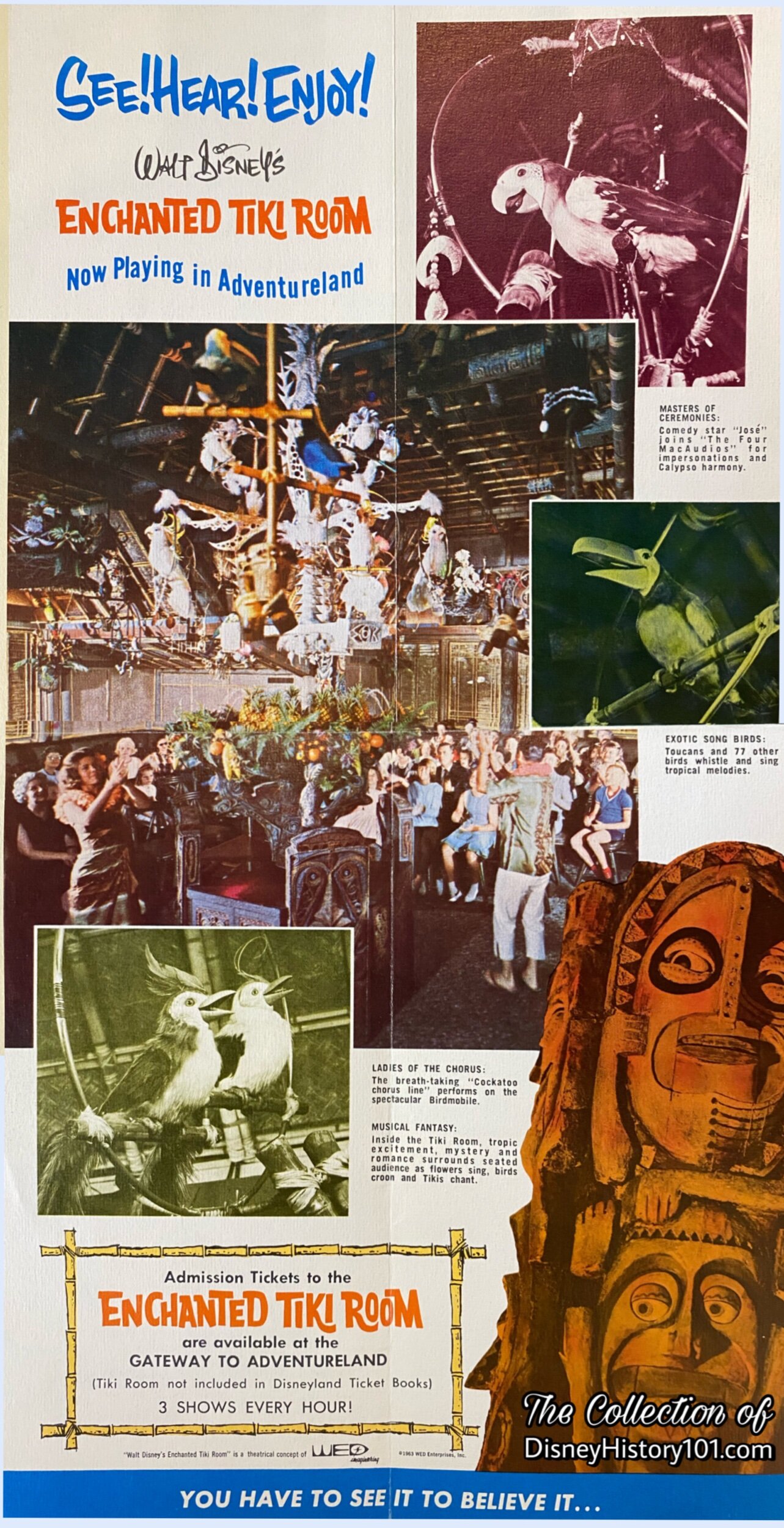
“Press Preview Day”
A Press Preview event was held in June, and then (on June 23rd, 1960), Disneyland guests were beckoned toward the lanai of Walt Disney’s Enchanted Tiki Room by a barker bird perched over the “A-frame” attraction entrance, and just left of the Gateway to Adventureland. Tickets were purchased there. WED Imagineer Harriet Burns (who had single-handedly designed and feathered dozens of the birds) recalled inviting a group of friends down to Disneyland to see her handy-work, and she was forced to buy a 75¢ ticket for each of them.
“The Pre-Show Tiki Garden”
While waiting to enter, guests could enjoy a Pre-Show in the Tiki Garden. Before entering the thatched grass hut setting, “tiki gods and goddesses tell exciting legends of the South Seas,” according to the “Disneyland Dictionary” (compiled by WED Enterprises, Inc. and WED Public Relations Department, c. 1968). Guests were introduced to Hina Kuluua (goddess of rain), Koro (Midnight Dancer), Maui (god of time), Ngendei (Earth balancer), Pele (goddess of fire and volcanoes), Rongo (god of agriculture), Tangaroa, (father of all gods and goddesses), and Tangarora-ru (goddess of East Wind).
“The Main Show”
Once inside this Polynesian paradise, a total of 225 characters (*200 according to the “Disneyland News,” 1963, Vol.1, No. 2) - 75 birds (in addition to the four MacAudios), orchids and other flowers in four hanging canoes, and tropical tikis, drummer statues, and tiki poles was prepared to entertain audiences. Once inside the theater, guests are directed to their seats : “Welcome to The Enchanted Tiki Room. Better seating will be found toward the rear of the theater ; However, since the performance takes place entirely above you, it makes no difference where you sit. Please move down to the end of each aisle, and do not leave vacant seats between yourself and the person next to you. Thank you.”
The Hostess gives one last announcement to the Kanes and Wahines before the show begins : “One small reminder before our show begins : the performers are very temperamental, so please refrain from eating, drinking, smoking, or the use of flash photography during their performance. Thank you.”
“The Four MacAudios” - Jose (the macaw M.C.; voiced by Wally Boag), and macaw Hosts Fritz (Thurl Ravenscroft), Pierre (voiced by Ernie Newton), and Michael (voiced by Fulton Burley) - begin to lead the show with impersonations and Calypso “barmony” in their respective Spanish, German, French, and Irish accents. They are soon joined by toucans and 77 crooning “birds of paradise and other ‘tropical imports’” in welcoming guests to Walt Disney’s Enchanted Tiki Room! Some of these backup birds were vocalized by noted avian voice actors Clarence “Ducky” Nash, and the understated and underrated Purv “Dr. Horatio Q. Birdbath” Pullen who vocalized birdsong for Walt Disney’s Snow White and the Seven Dwarfs, Cinderella, and Sleeping Beauty in addition to numerous early Mickey Mouse short films. The spectacular Birdmobile lowers from the ceiling, as a breath-taking Cockatoo chorus line “decked out in dazzling jewels, vocalize Let’s All Sing Like the Birdies Sing, in French accents.” The South Seas tikis chant and play the drums, harmonizing with a medley of flowers in “flower boats” that supply the base notes for a chorus of the Hawaiian War Chant. Before the end of the performance, “there is an ‘enchanted fountain’ sparkling under multi-colored lights, and a tropical storm that culminates in thunder, lightning and pouring rain.” [“Walt Disney Disneyland,” pages 56, printed by Officine Grafiche Arnoldo Mondadori - Verona; first published 1964]
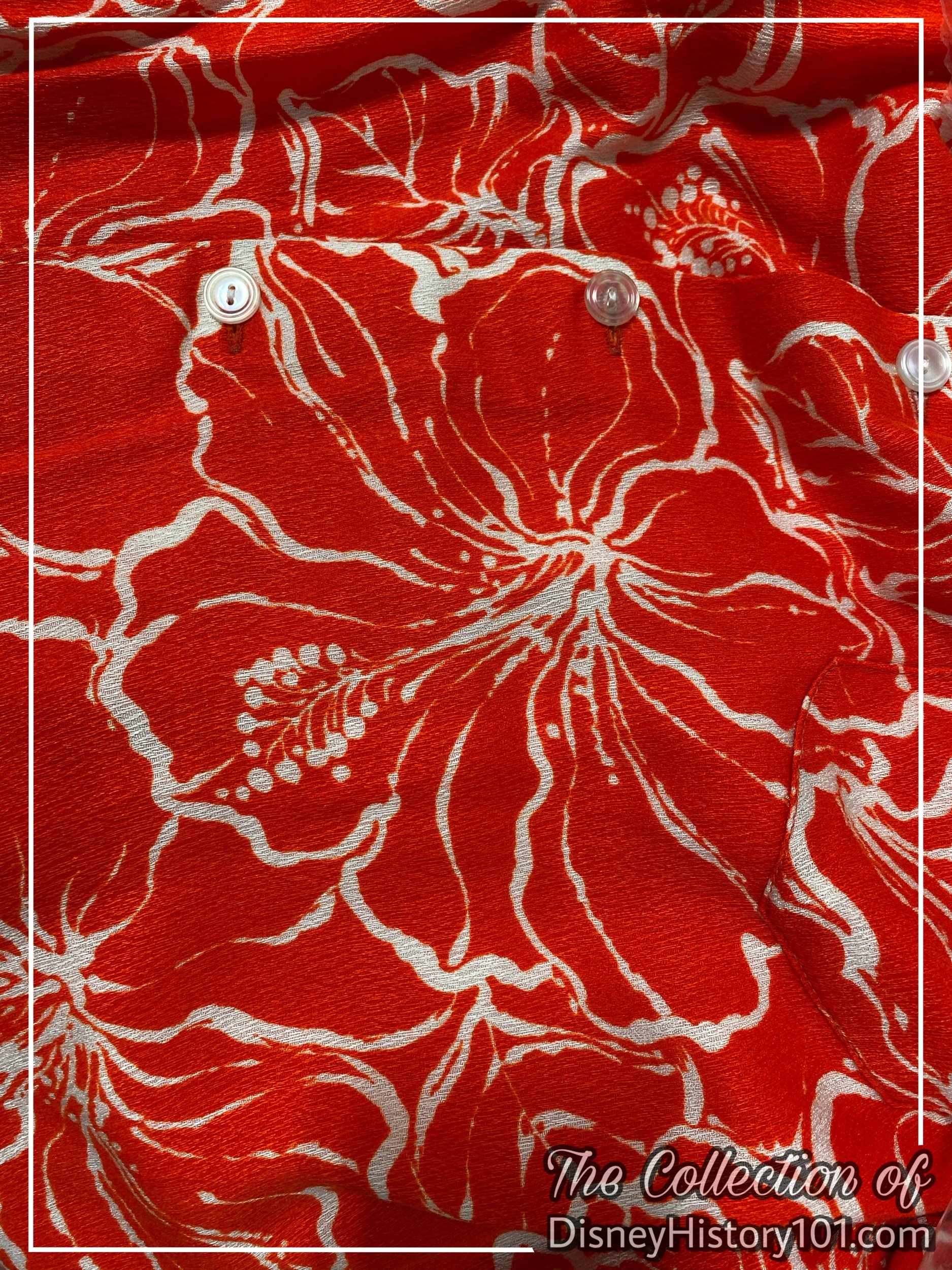
Walt Disney's Enchanted Tiki Room Hostess Costume Swatch.
“Attractions Hosts, Hostesses and Operators”
Many Attractions Hostesses supported the earliest shows, like Diani Lao and Terri Kakuda (both depicted with Walt in a June 1963 newspaper photo). Many other Disneylanders operated the Tiki Room, like Hank Block.
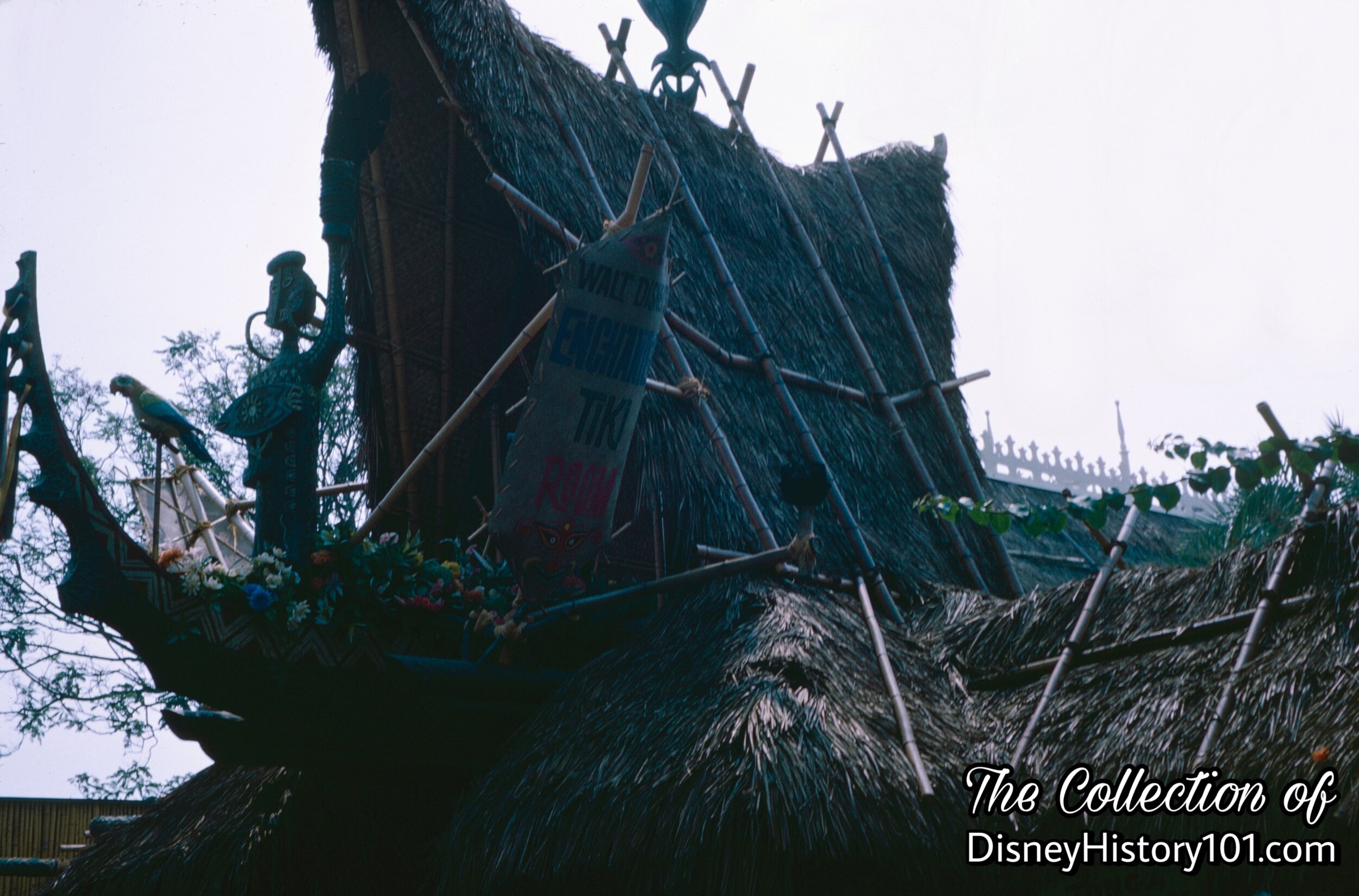
Juan the Barker Bird (no hat or cane) above the "A" Frame Entrance to Walt Disney's Enchanted Tiki Room.
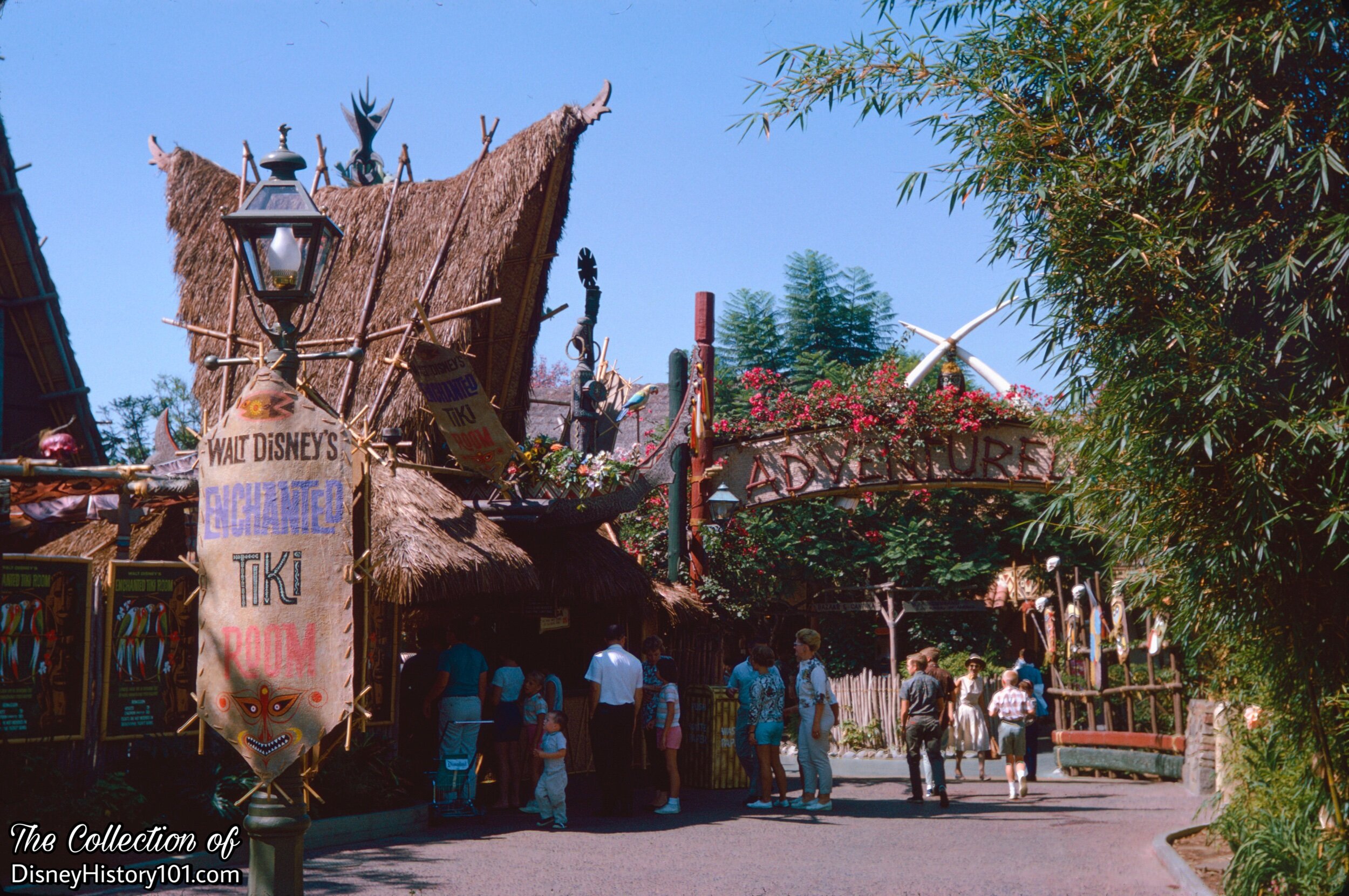
Juan the Barker Bird above the "A" Frame Entrance to Walt Disney's Enchanted Tiki Room; 1963.
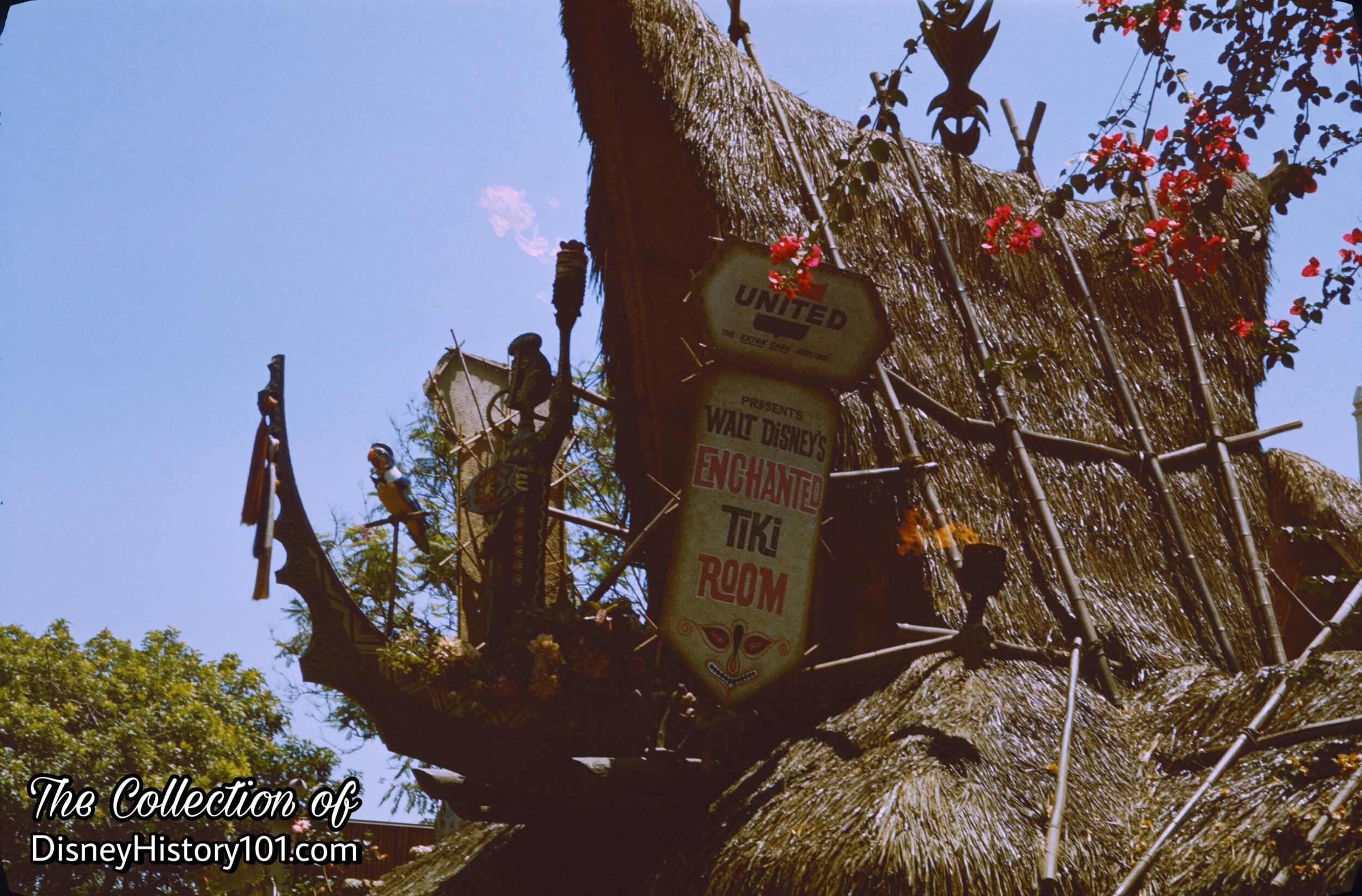
Juan the Barker Bird above the "A" Frame Entrance to Walt Disney's Enchanted Tiki Room; July, 1966.
“Juan the Barker Bird”
Many guests might remember seeing Juan the Barker Bird (with blue, green and yellow feathers) sitting perched beneath Uti (goddess of fishing) lighting the path during the first decade of the attraction. Juan was no “tawdry ‘carney’ barker,” but a complex Audio-Animatronic Cast Member, with magnificent plumage originally applied by Harriet Burns.
In 1990, one “Disneyland - A Treasure Chest of Trivia” document prepared by Walt Disney Productions identified this macaw as “Jose the Macaw, star of the Enchanted Tiki Room,” stating that he “used to sit on a perch above the entrance to Adventureland greeting guests.” The publication continues: “But he was soon removed because he proved too popular and created congestion at the entrance.” According to A Walk in Walt's Footsteps, “June 23, 1963, Jose the Macaw stood atop a perch near the Adventureland entrance beckoning Guests to see birds and flowers and, of course, tiki-gods sing.”
We all know what happened to Rosita. But whatever happened to Juan?
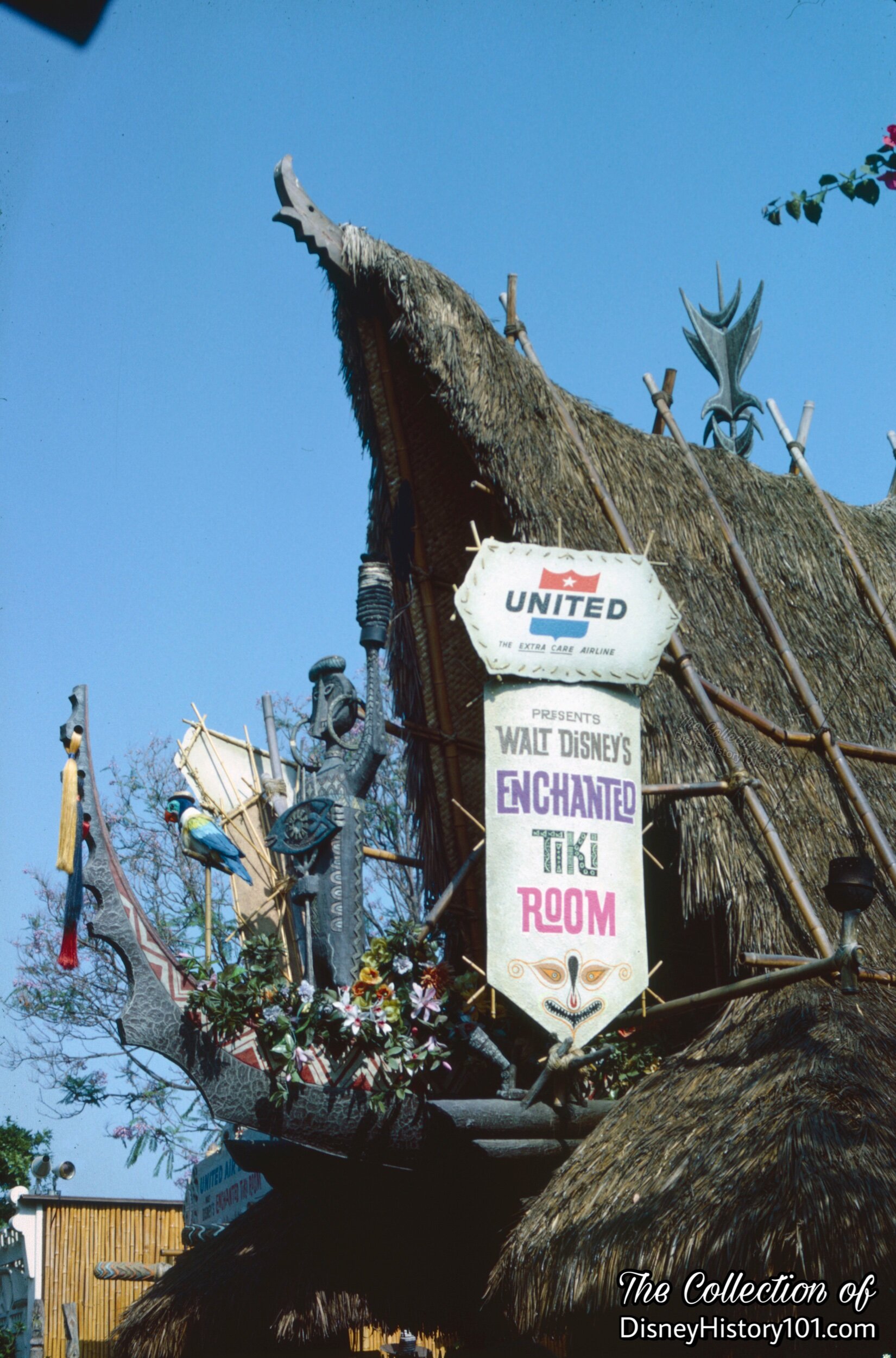
Juan the Barker Bird above the "A" Frame Entrance to Walt Disney's Enchanted Tiki Room
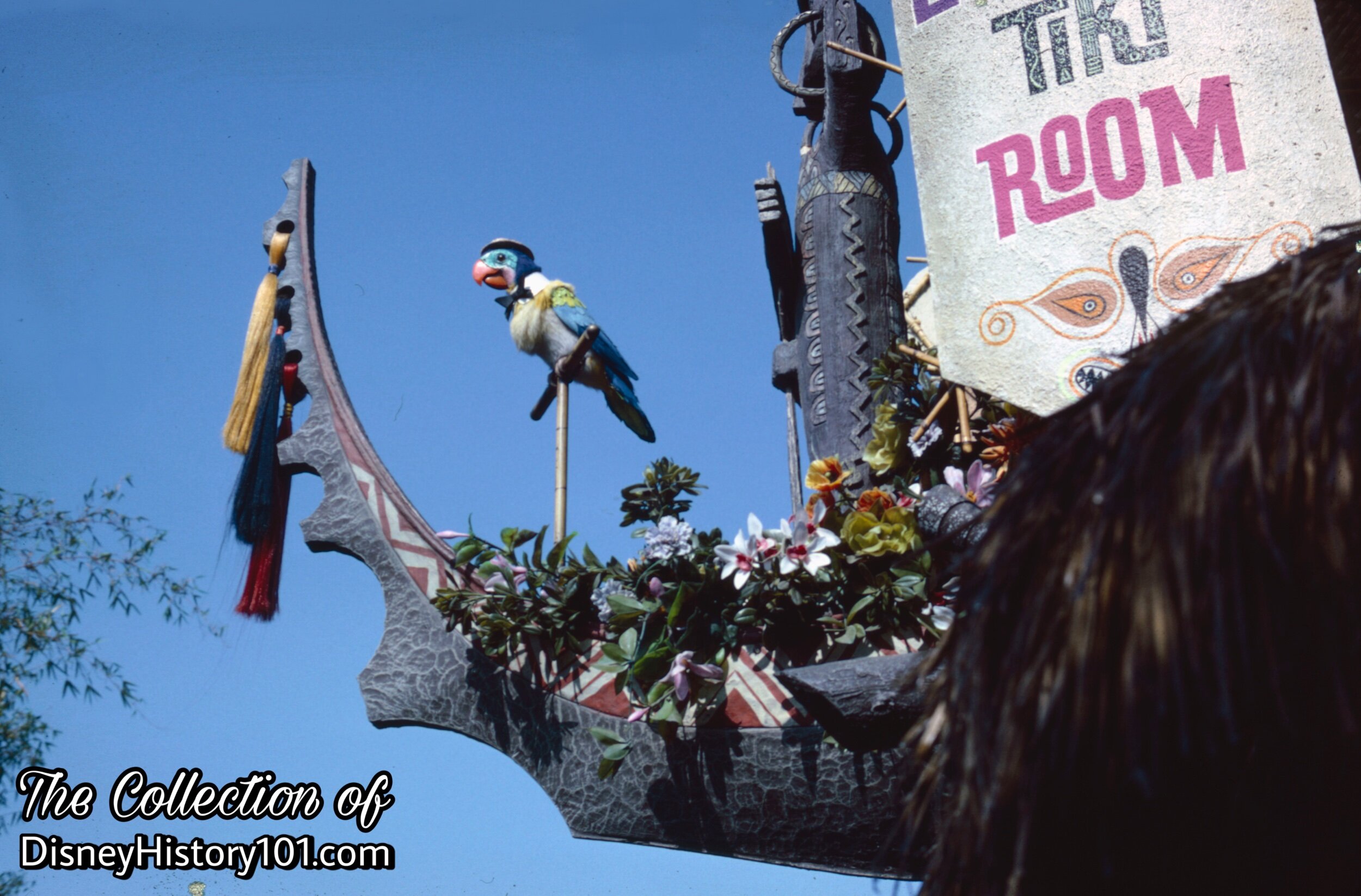
Juan the Barker Bird above the "A" Frame Entrance to Walt Disney's Enchanted Tiki Room
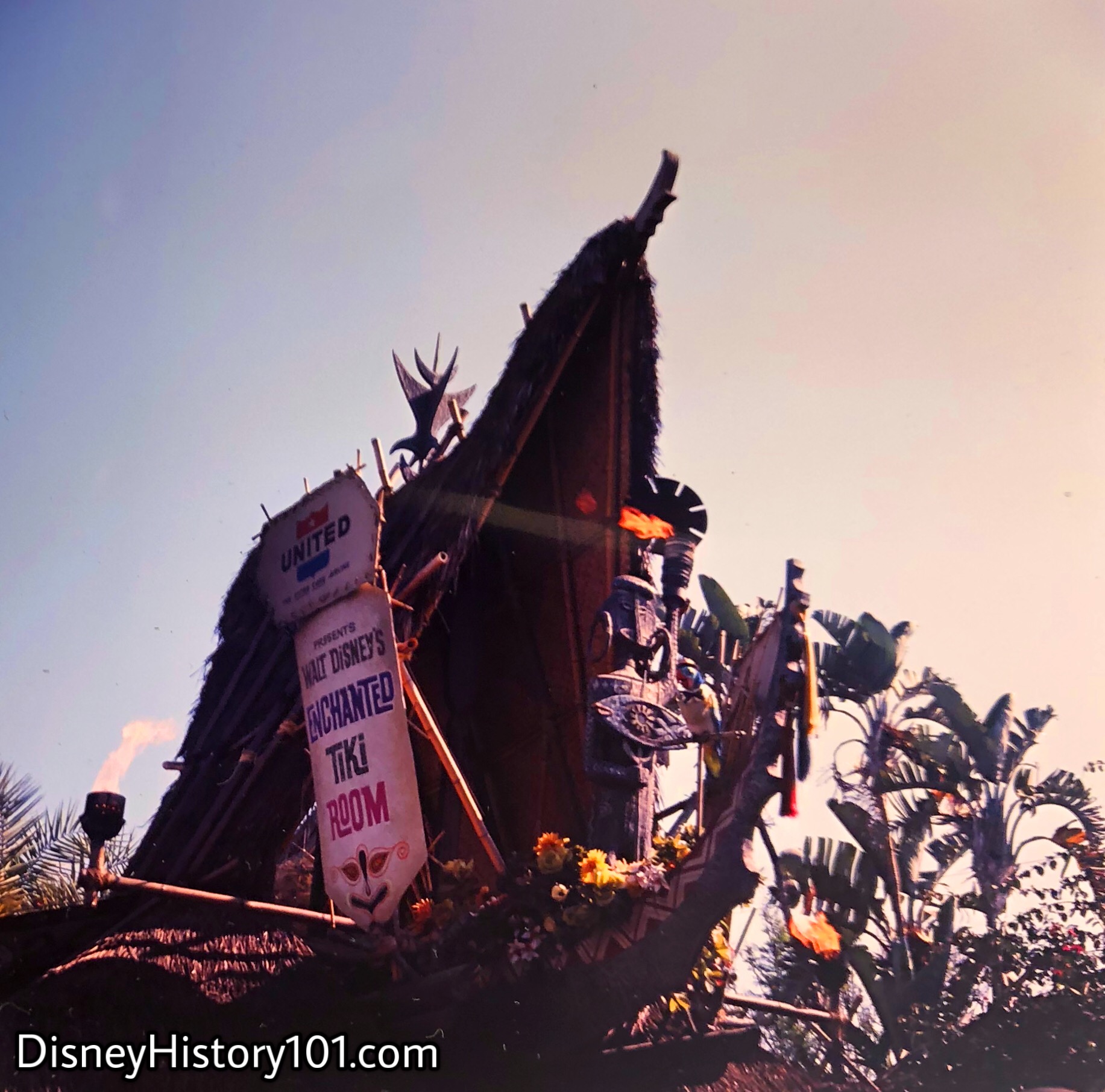
Juan the Barker Bird above the "A" Frame Entrance to Walt Disney's Enchanted Tiki Room
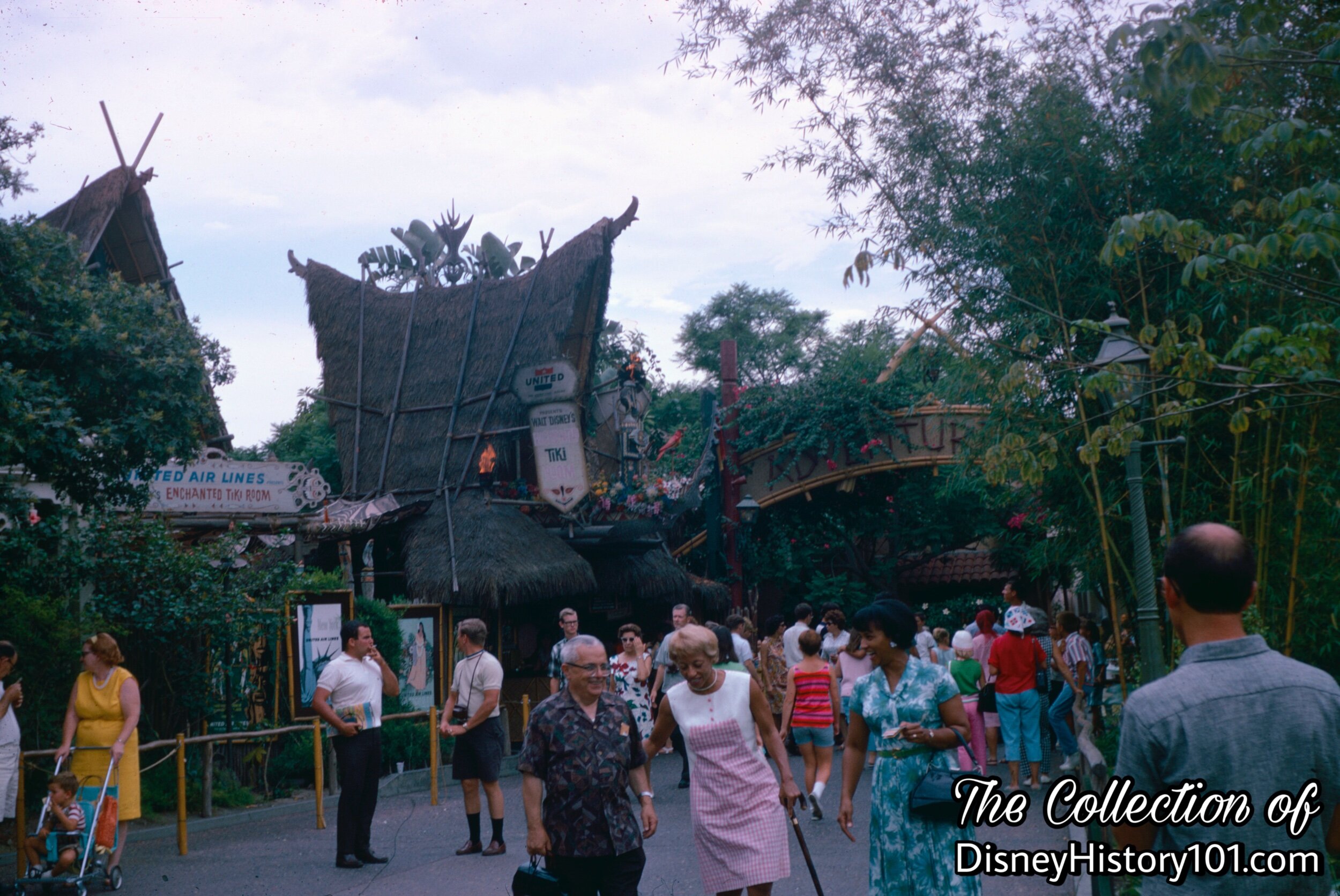
Juan the Barker Bird above the "A" Frame Entrance to Walt Disney's Enchanted Tiki Room near the Entrance to Adventureland; August, 1967.
If you look closely, you may notice that the barker bird in this photograph is different from the bird in the previous photograph. This is because the role of Barker Bird was portrayed by a number of feathered “Disneylanders”. This particular Barker Bird has red feathers.
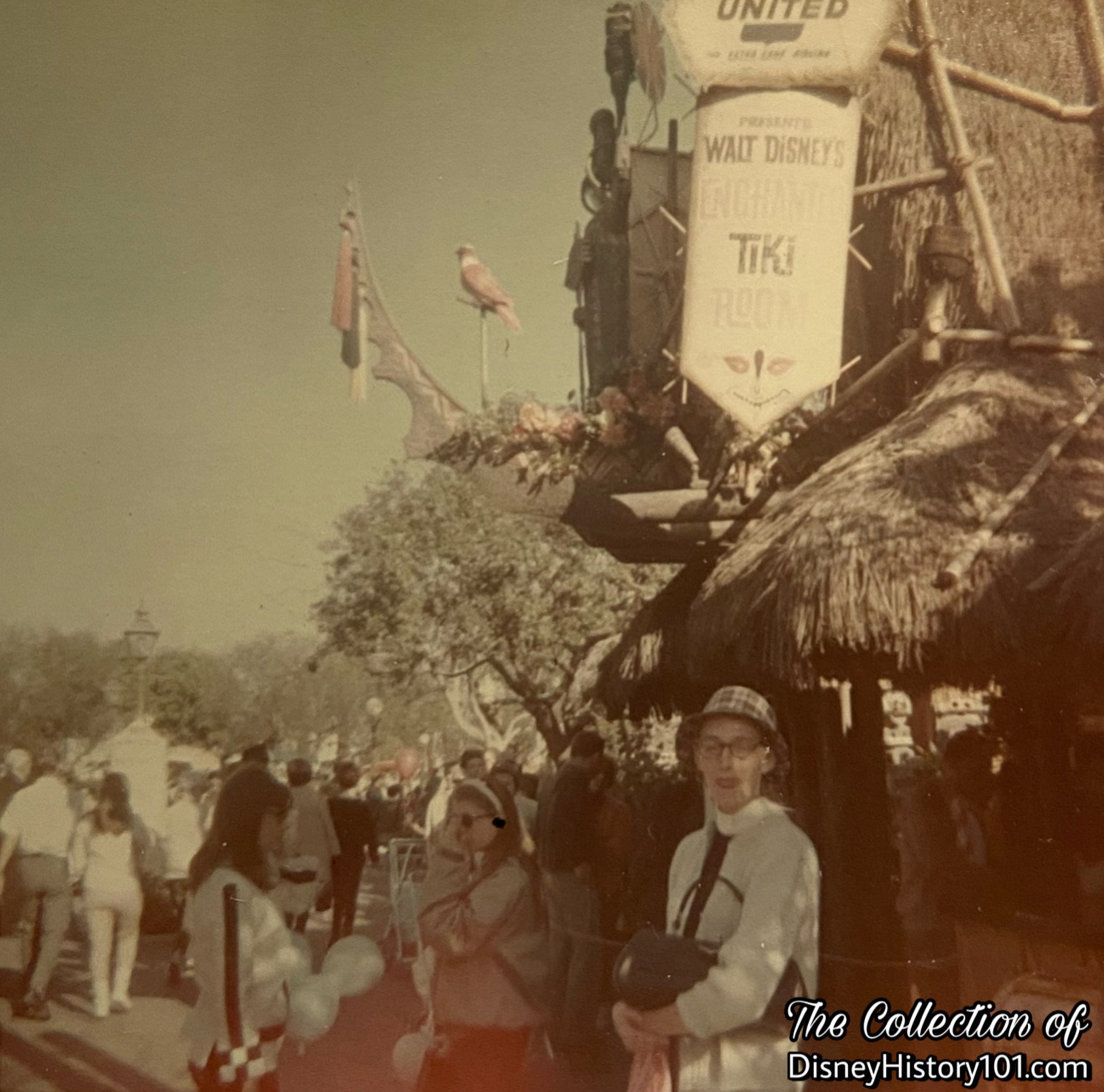
Juan the Barker Bird above the "A" Frame Entrance to Walt Disney's Enchanted Tiki Room, 1967.
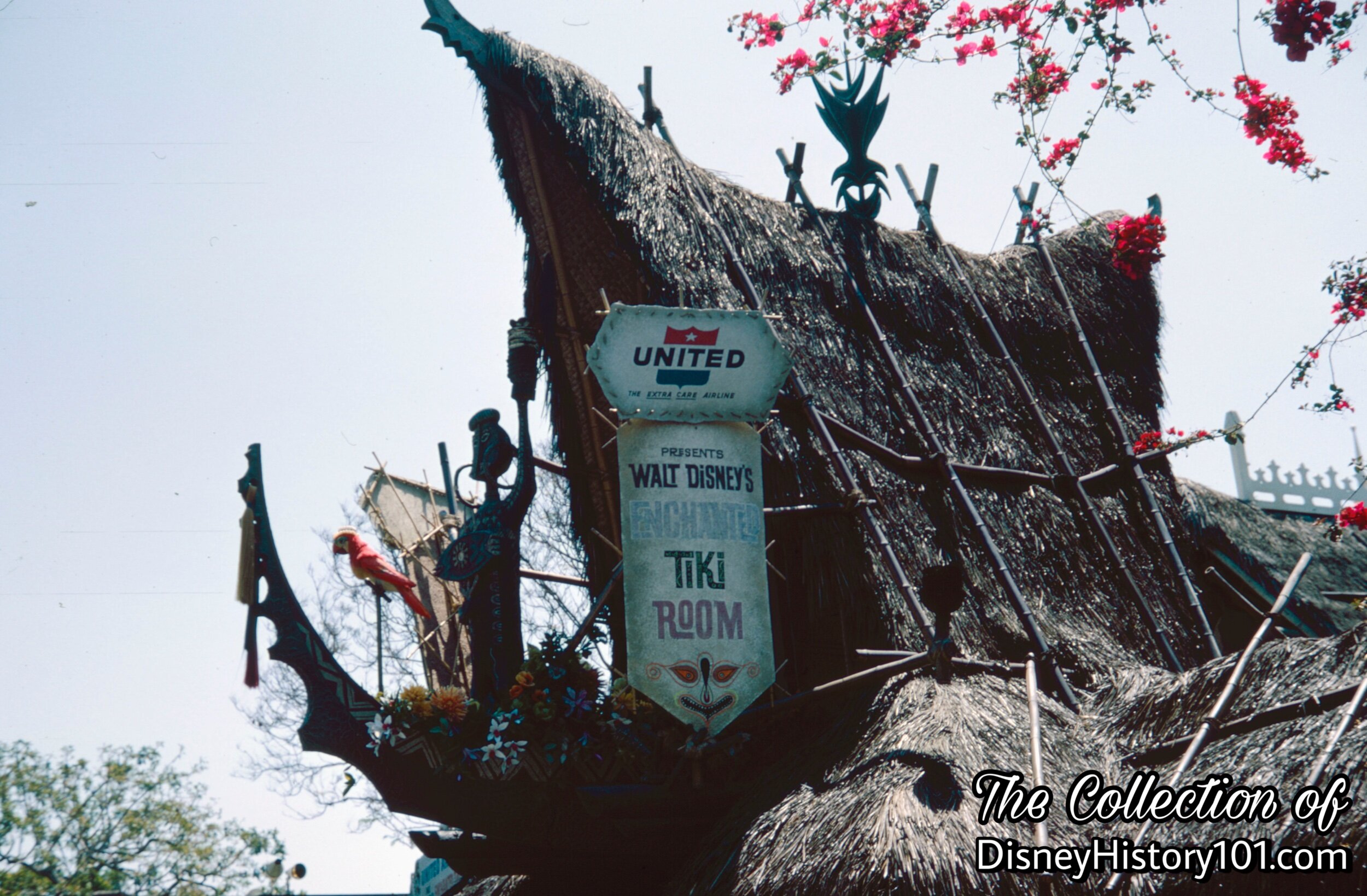
Juan the Barker Bird above the "A" Frame Entrance to Walt Disney's Enchanted Tiki Room
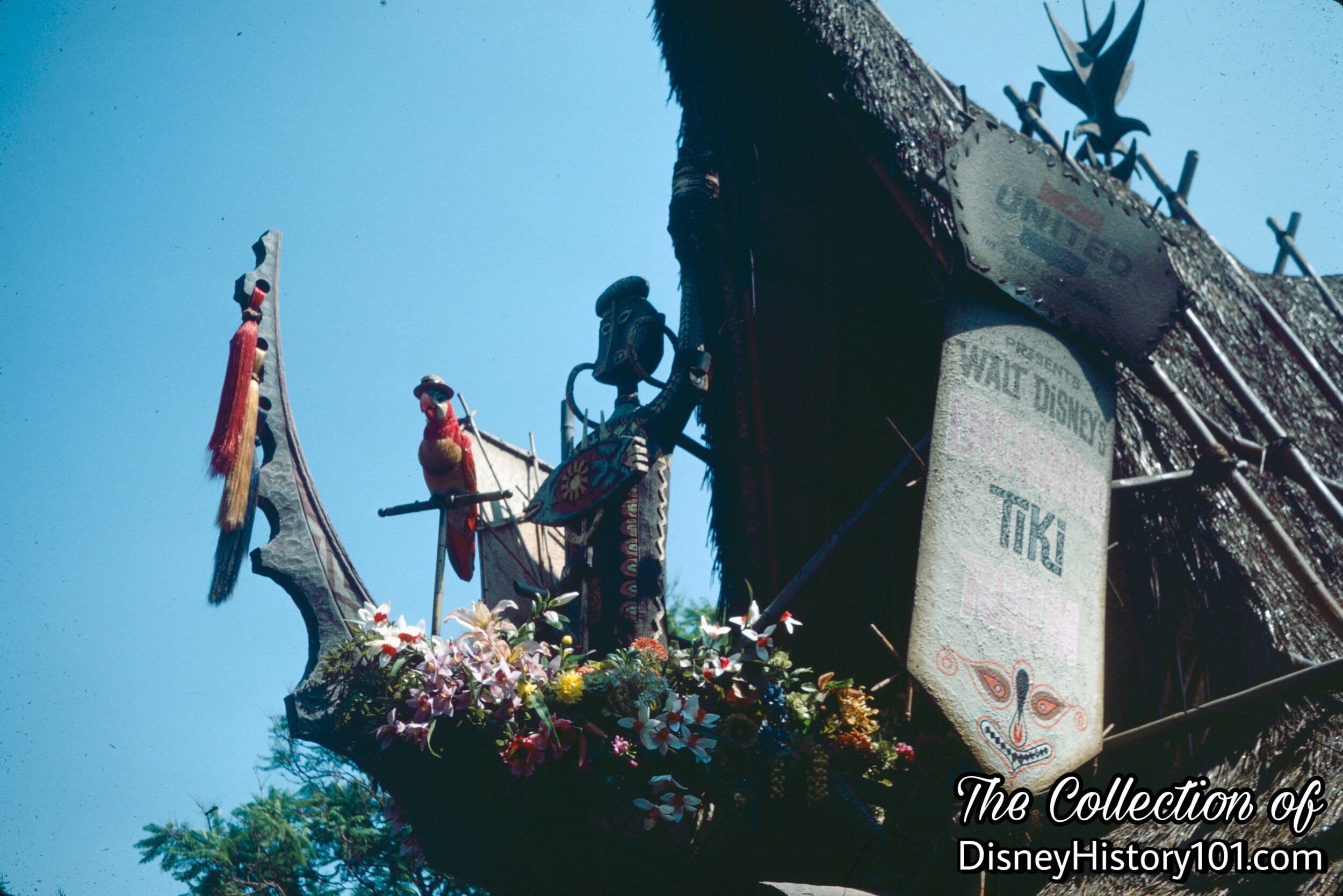
Juan the Barker Bird above the "A" Frame Entrance to Walt Disney's Enchanted Tiki Room, 1967.
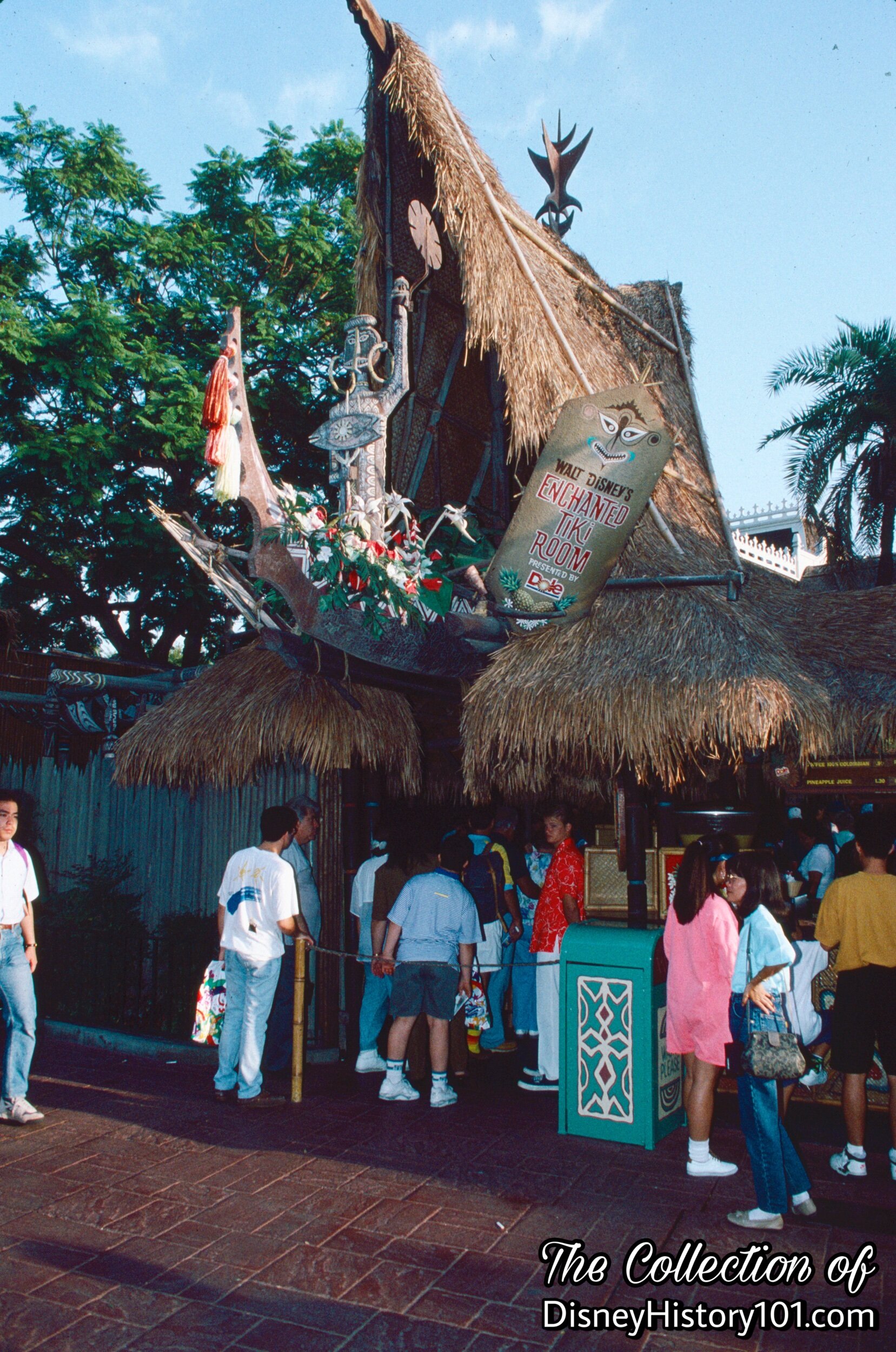
Uti holding her torch over the "A" frame entrance of Walt Disney's Enchanted Tiki Room.
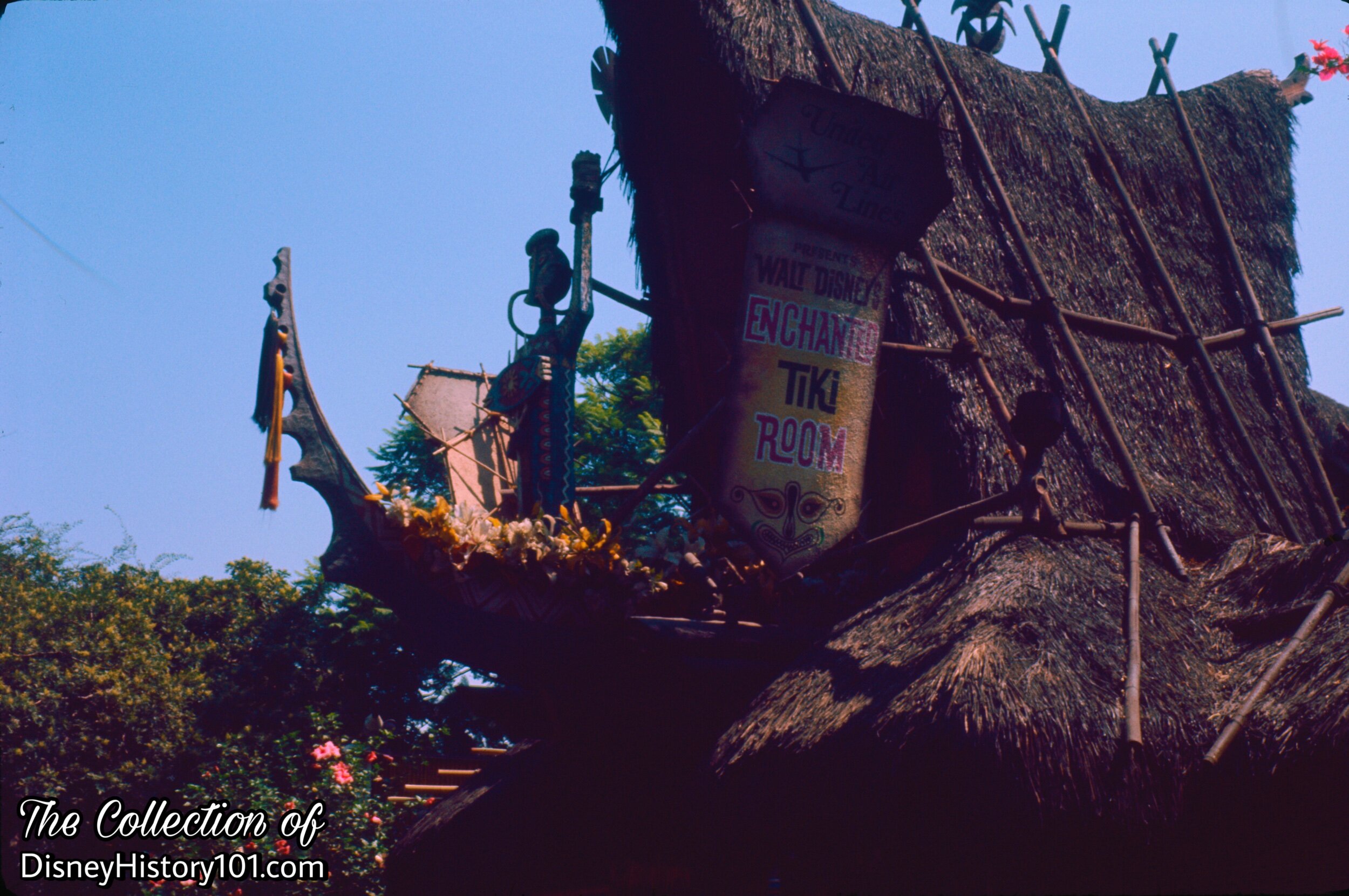
Walt Disney's Enchanted Tiki Room "A" Frame Entrance, Thursday, September 17, 1970.
It looks as if the Tiki Room birds aren’t here every day! The Barker Bird has flown the coup.
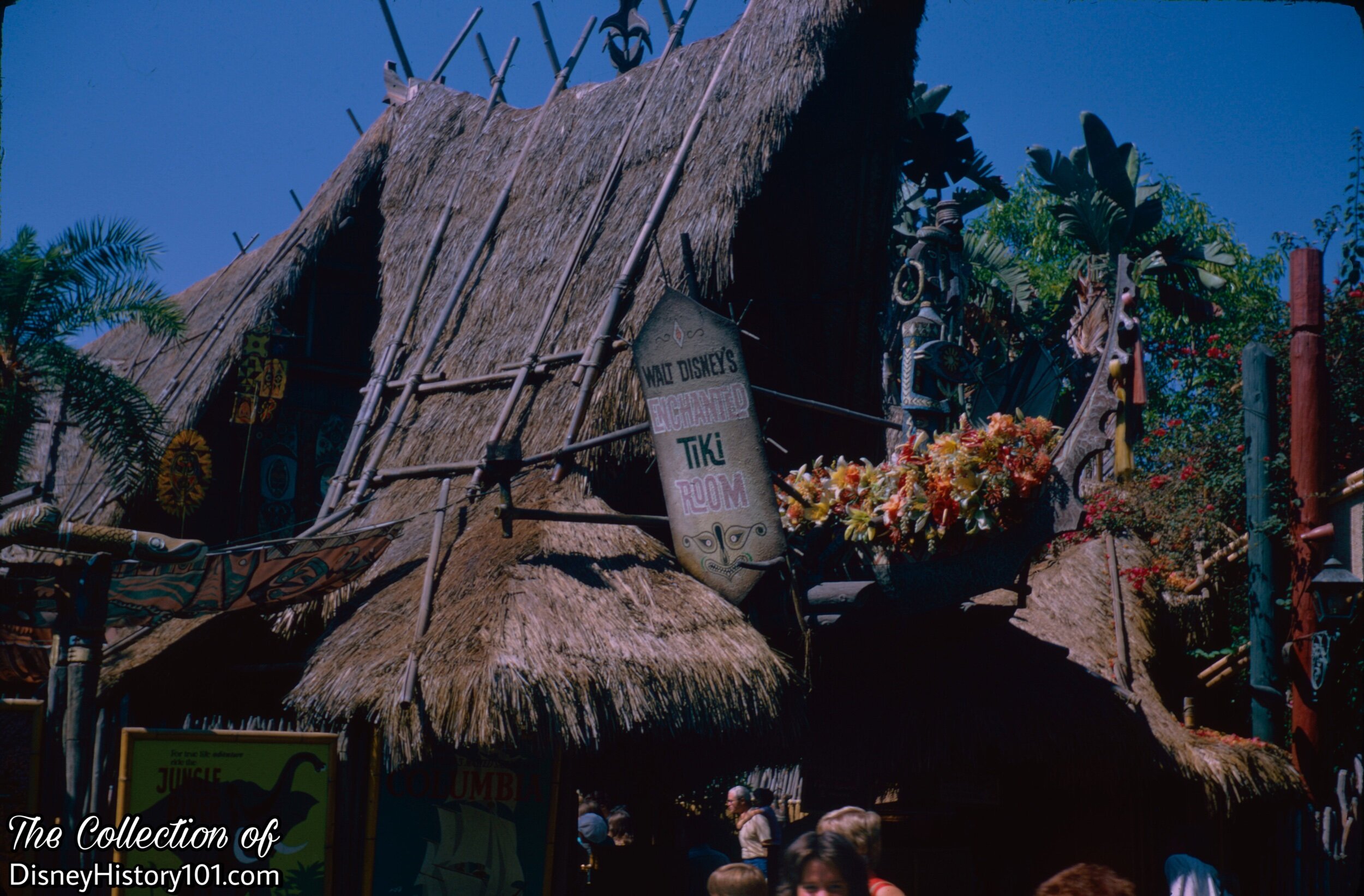
Walt Disney's Enchanted Tiki Room "A" Frame Entrance; July, 1974.
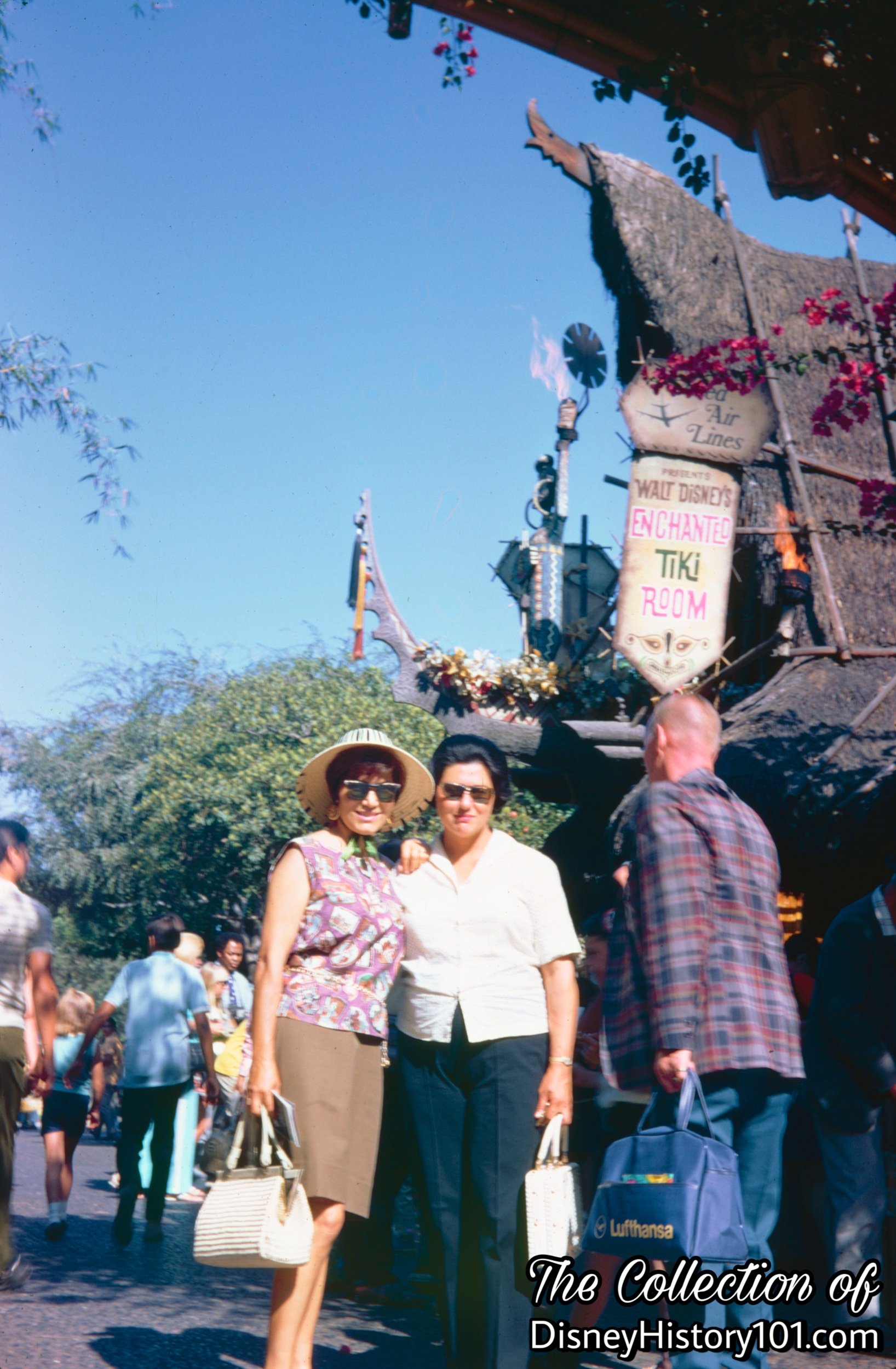
Walt Disney's Enchanted Tiki Room "A" Frame Entrance.
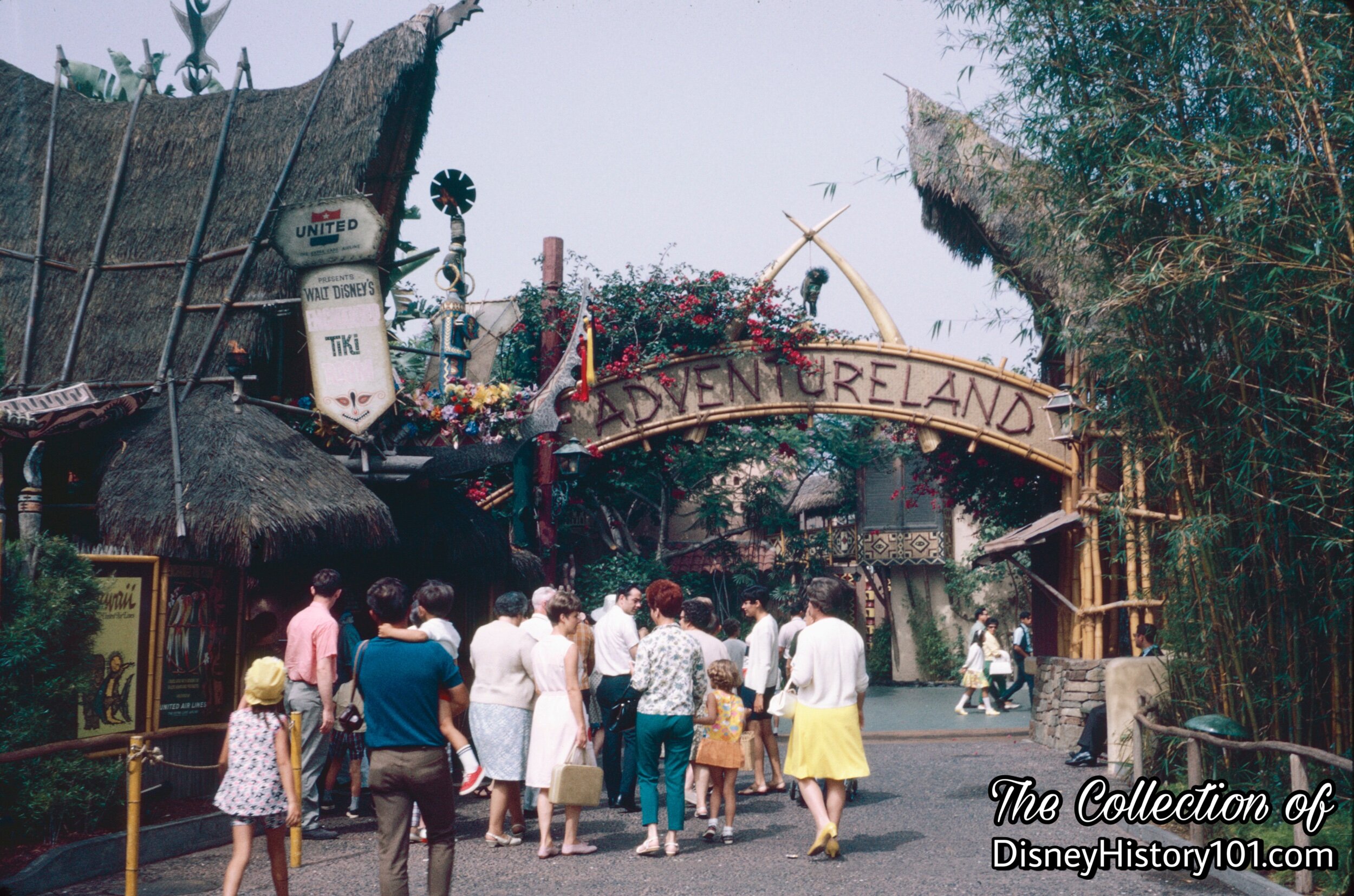
Walt Disney's Enchanted Tiki Room near the Entrance to Adventureland; 1968.
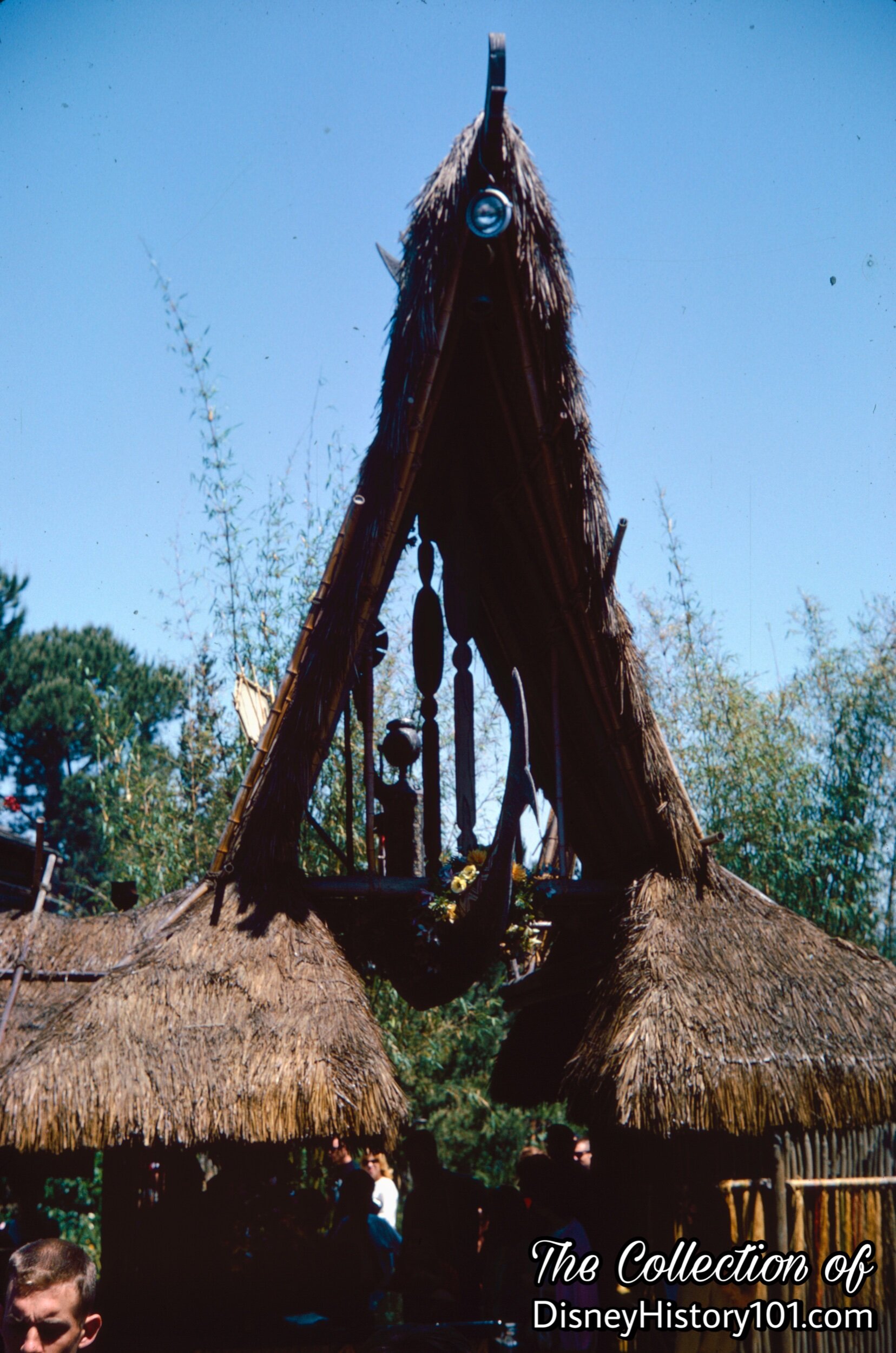
Walt Disney's Enchanted Tiki Room "A" Frame Entrance Backside.
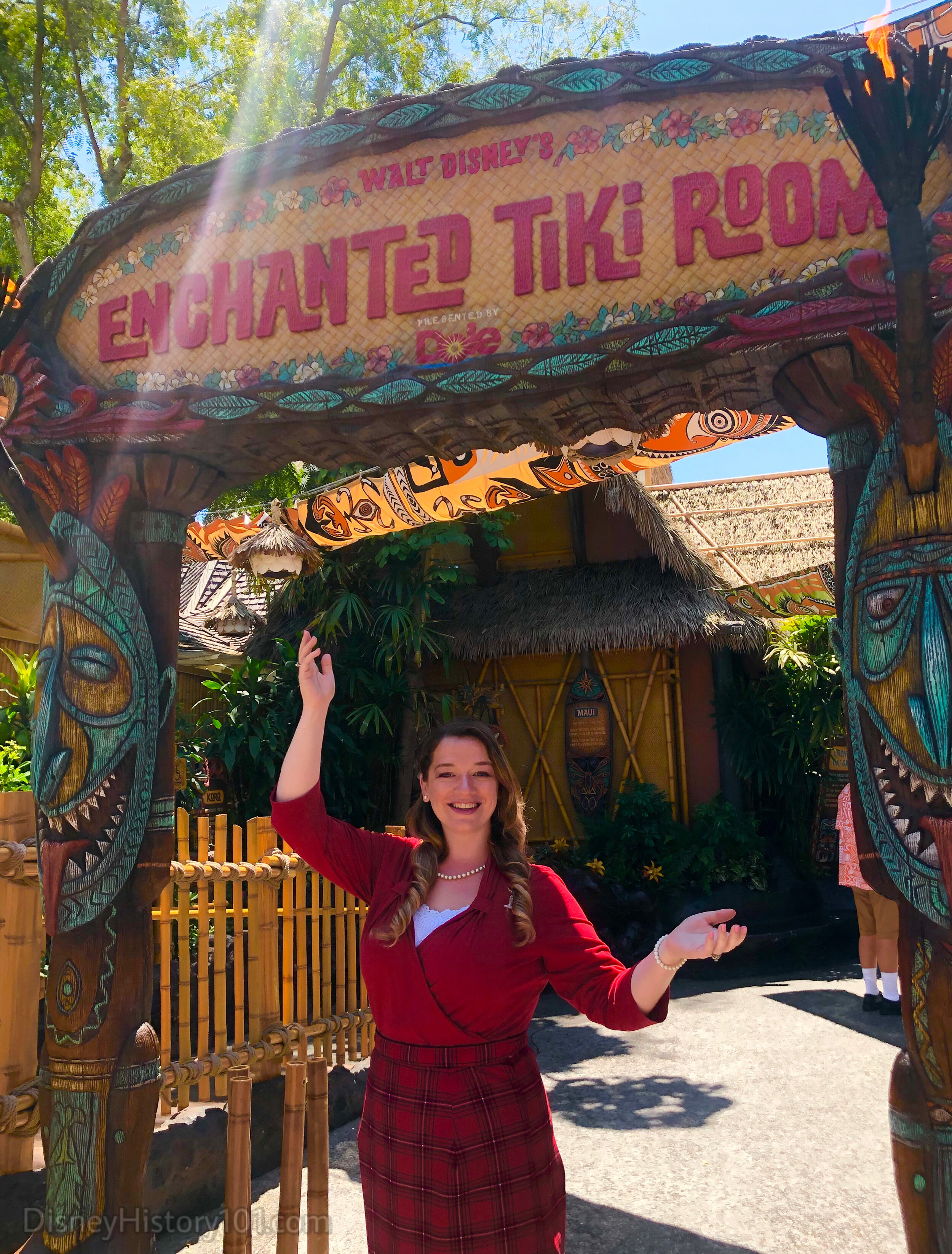
The Entrance to Walt Disney’s Enchanted Tiki Room Lanai.
This is what is called a Holding Area - “A seating area or lobby where guests gather prior to admittance to a show.” Disneyland “Audience Waiting Areas” are especially designed as part of the attraction to make the guest's time waiting in line as comfortable as possible. This tropical setting features a concession location and (owning to its restaurant origins) is one of the few Disneyland attractions that outstandingly holds restrooms.
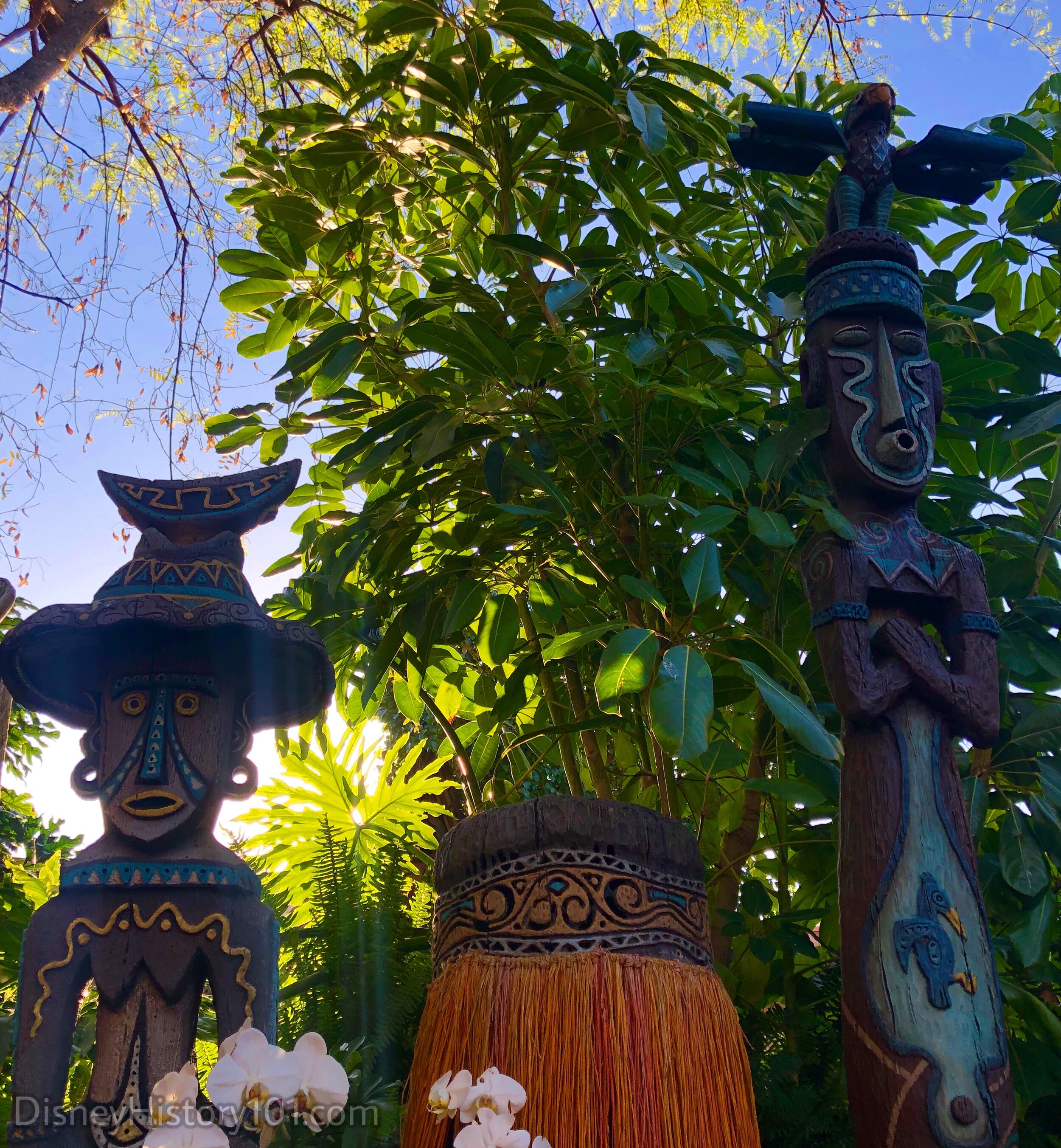
Pele (left) and Tangaroa-Ru (right) in Walt Disney’s Enchanted Tiki Garden Lanai; 2010s.
“The Enchanted Tiki Gods and Goddesses”
Since 1963, the pre-show of Walt Disney’s Enchanted Tiki Room began (not through the Adventureland Entryway) but in the Enchanted Tiki Room Lanai garden. This “holding area” is also home to a show performed by tiki gods and goddesses: Maui (who roped the playful sun and brought his people time), Koro (the Midnight Dancer), Tangaroa-Ru (Goddess of the East Wind), Hina Kuluna (Goddess of Rain), Pele (Goddess of Fire and Volcano), Negendei (the Earth Balancer), Rongo (God of Agriculture), and Tongoroa (Father of all Gods and Goddesses).
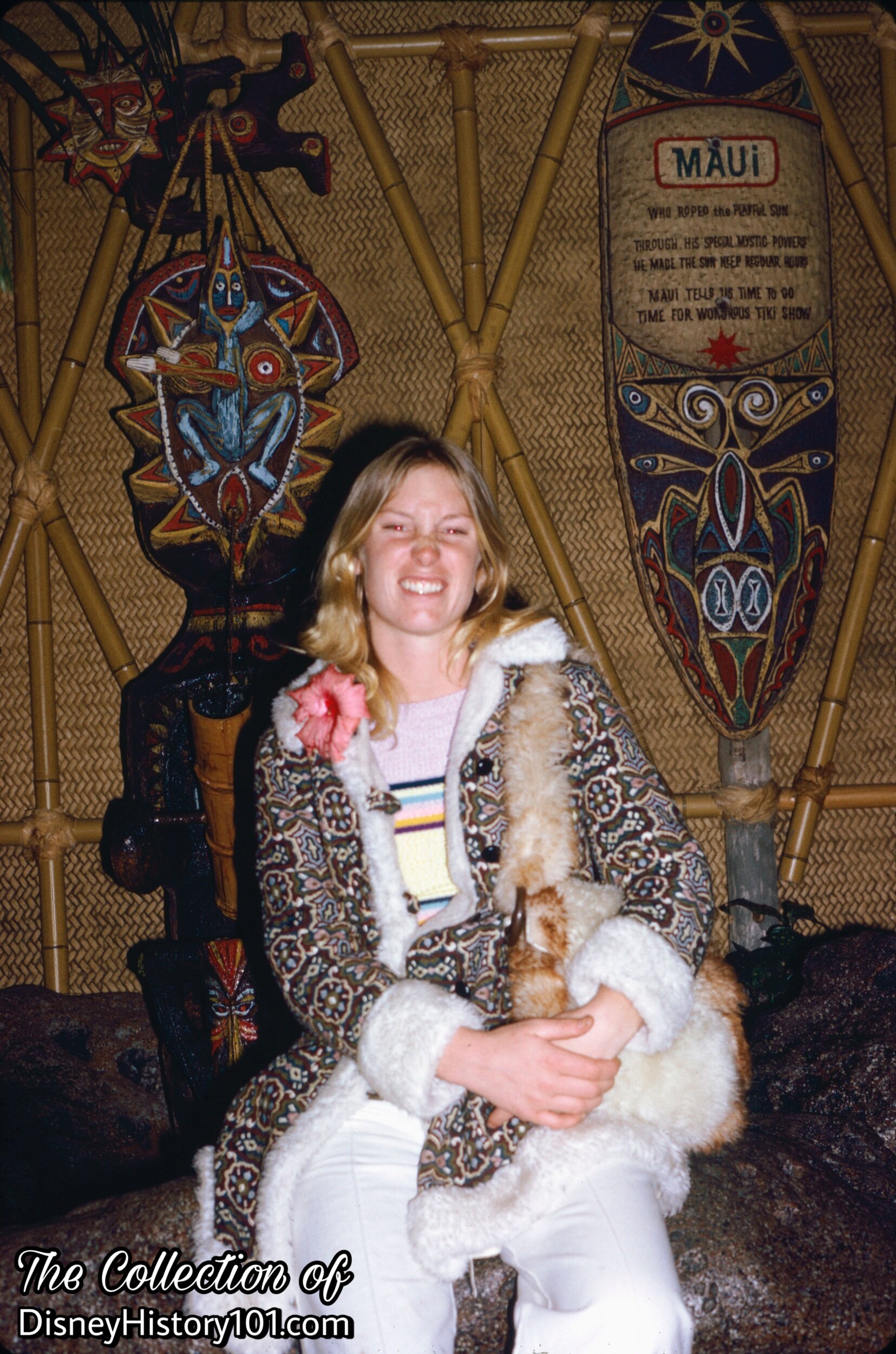
Maui and Guest in the Enchanted Tiki Garden Lanai.
Here, Maui takes the form of a traditional “shishi-odoshi” (deer-scare) is part of the show in the Enchanted Tiki Lanai.
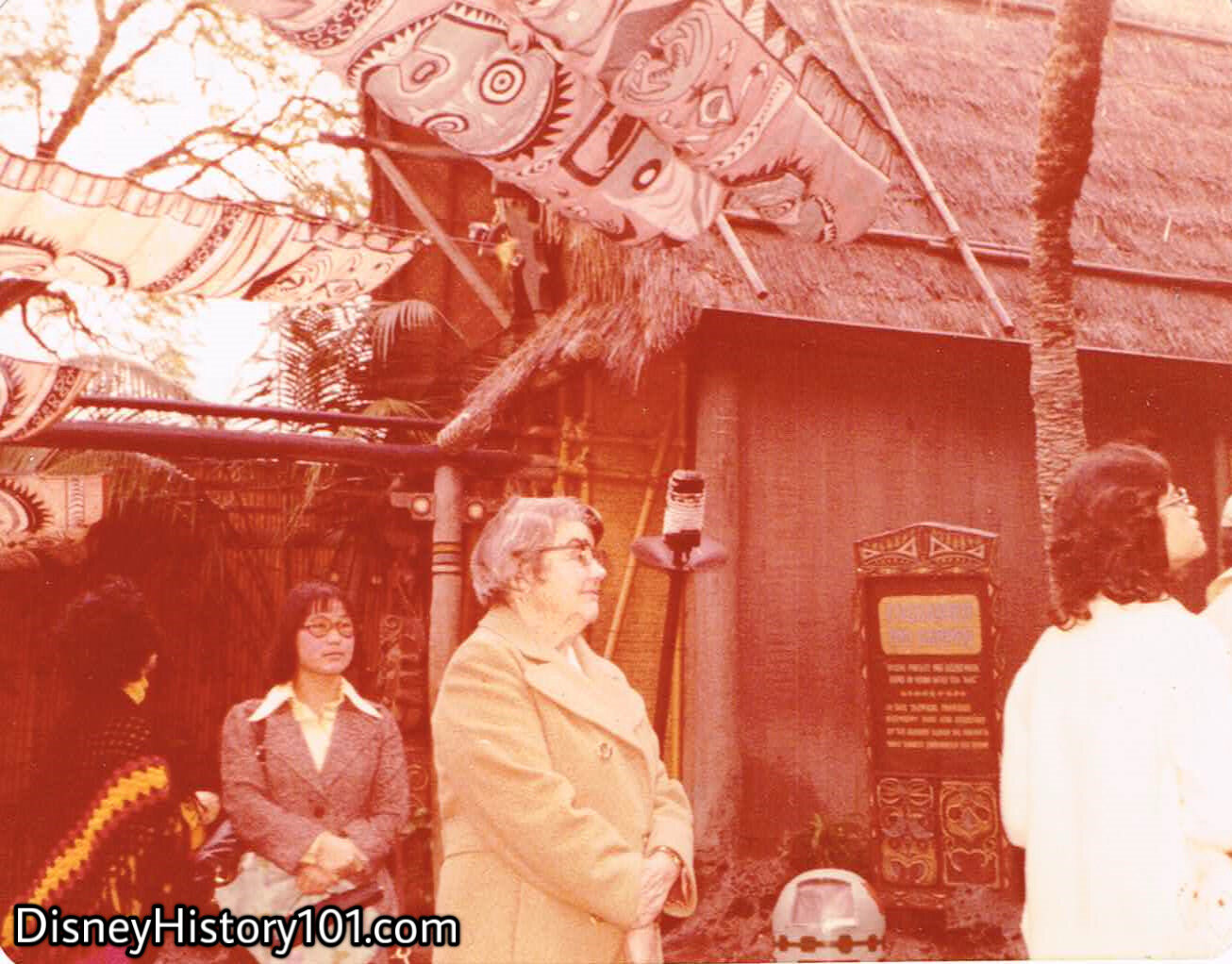
Walt Disney’s Enchanted Tiki Room Lanai
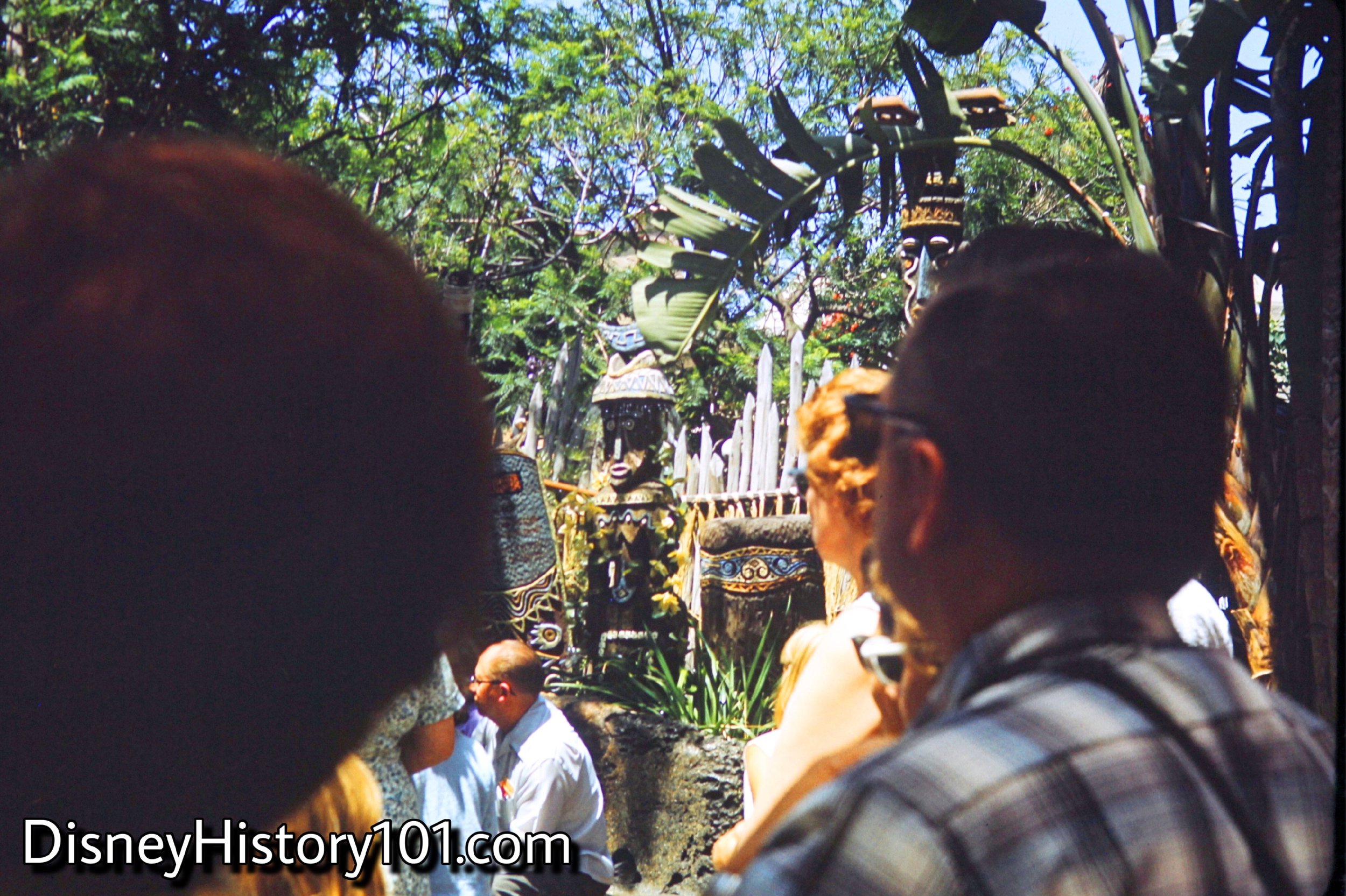
Pele in Walt Disney’s Enchanted Tiki Room Lanai; Summer, 1966.
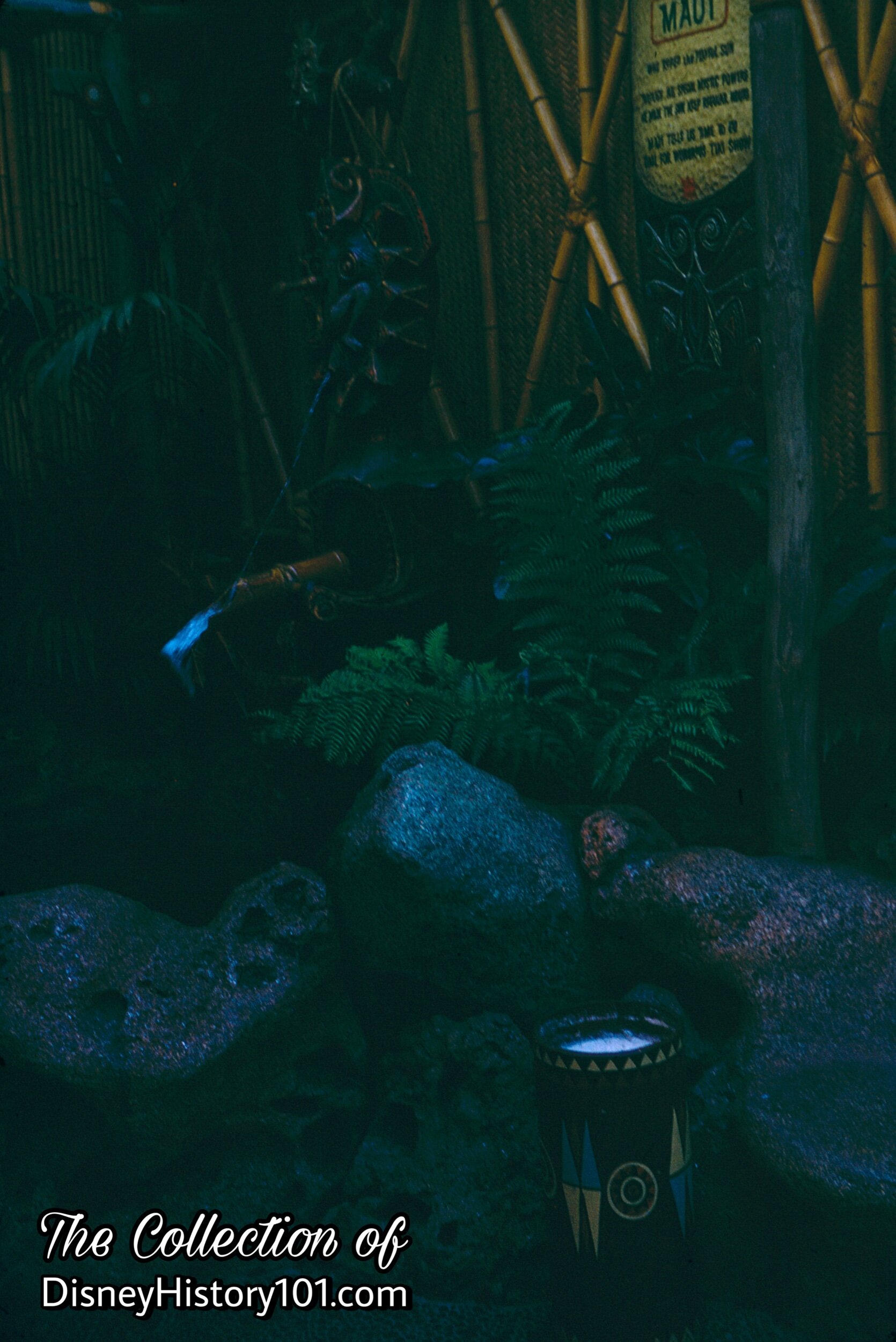
Enchanted Tiki Room - Lanai
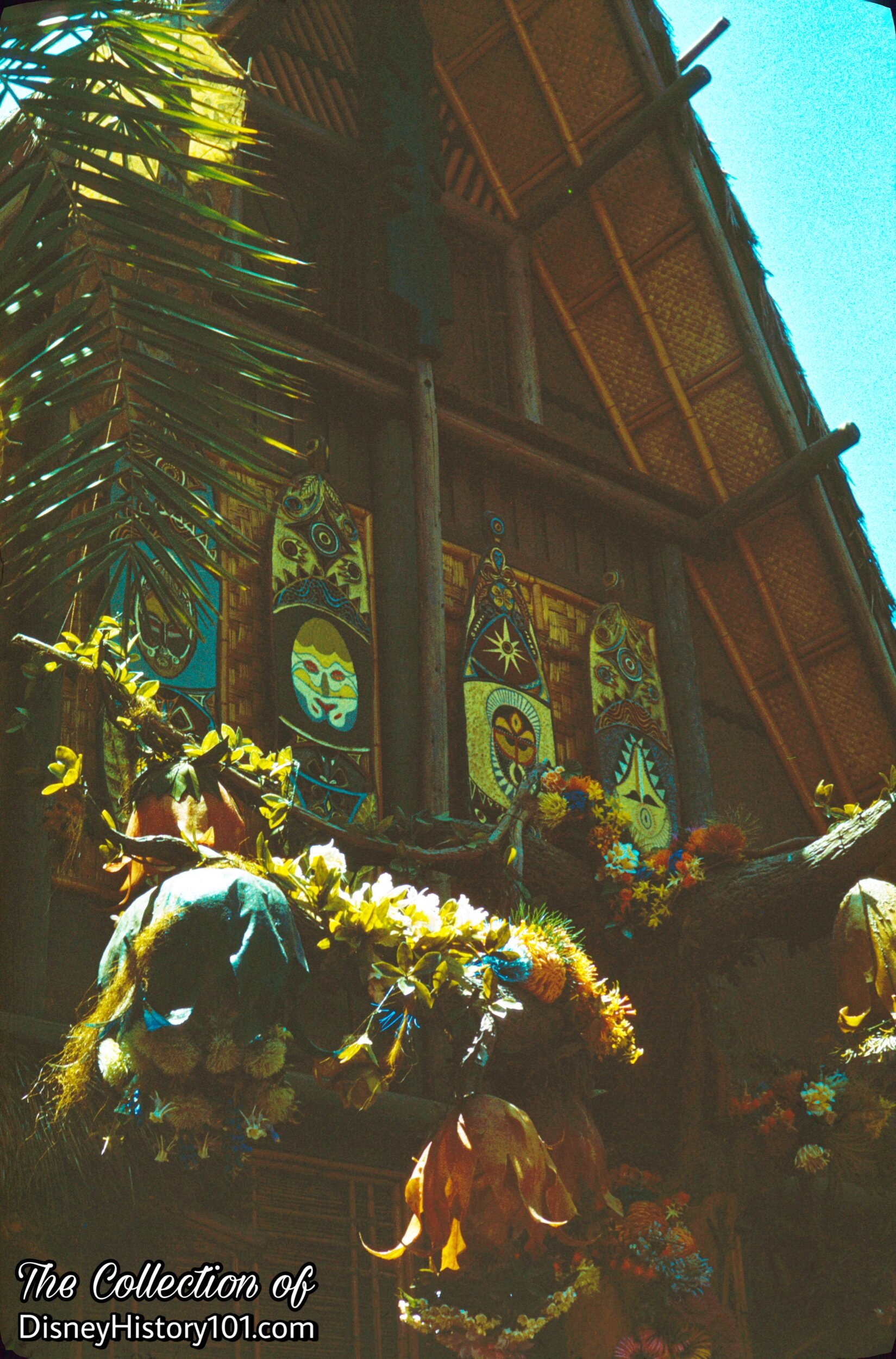
The mighty Tangaroa's flowers in Walt Disney’s Enchanted Tiki Room Lanai; July, 1966.
Some of Rolly Crump’s original shields can be seen above the Tangaroa tree-figure in the Lanai.
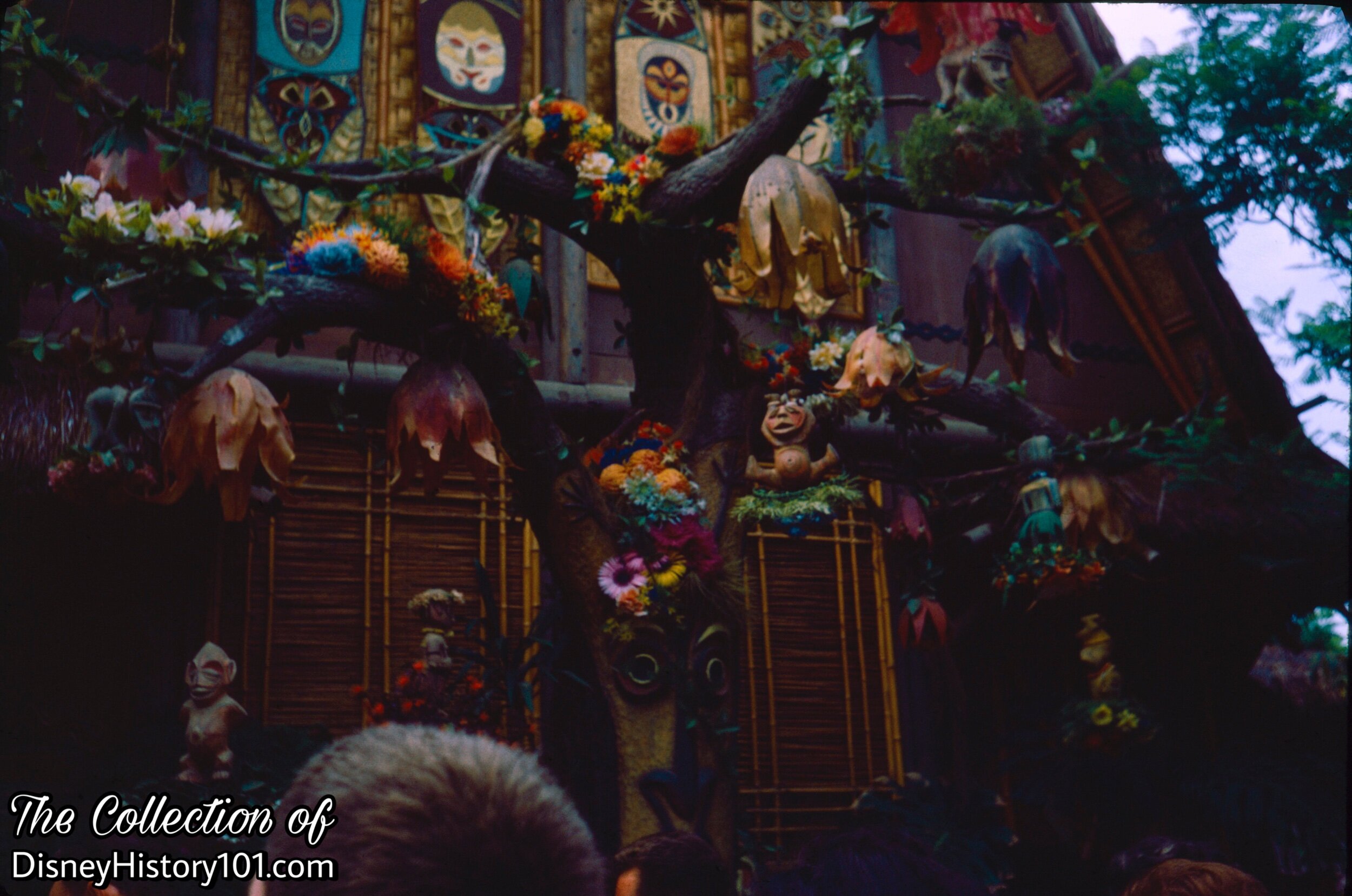
Walt Disney’s Enchanted Tiki Room Lanai & Tangaroa; 1966.
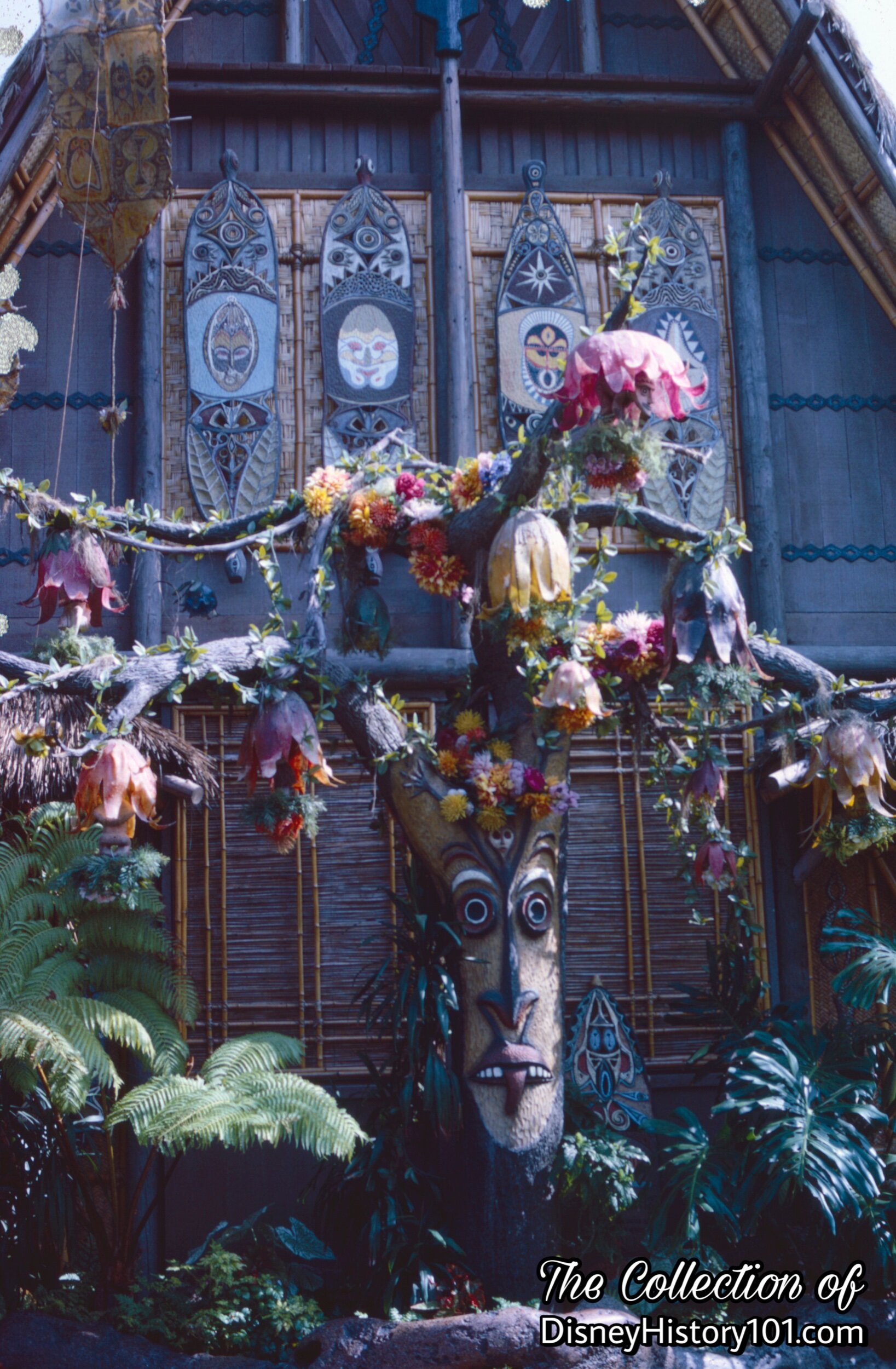
Walt Disney’s Enchanted Tiki Room Lanai & Tangaroa
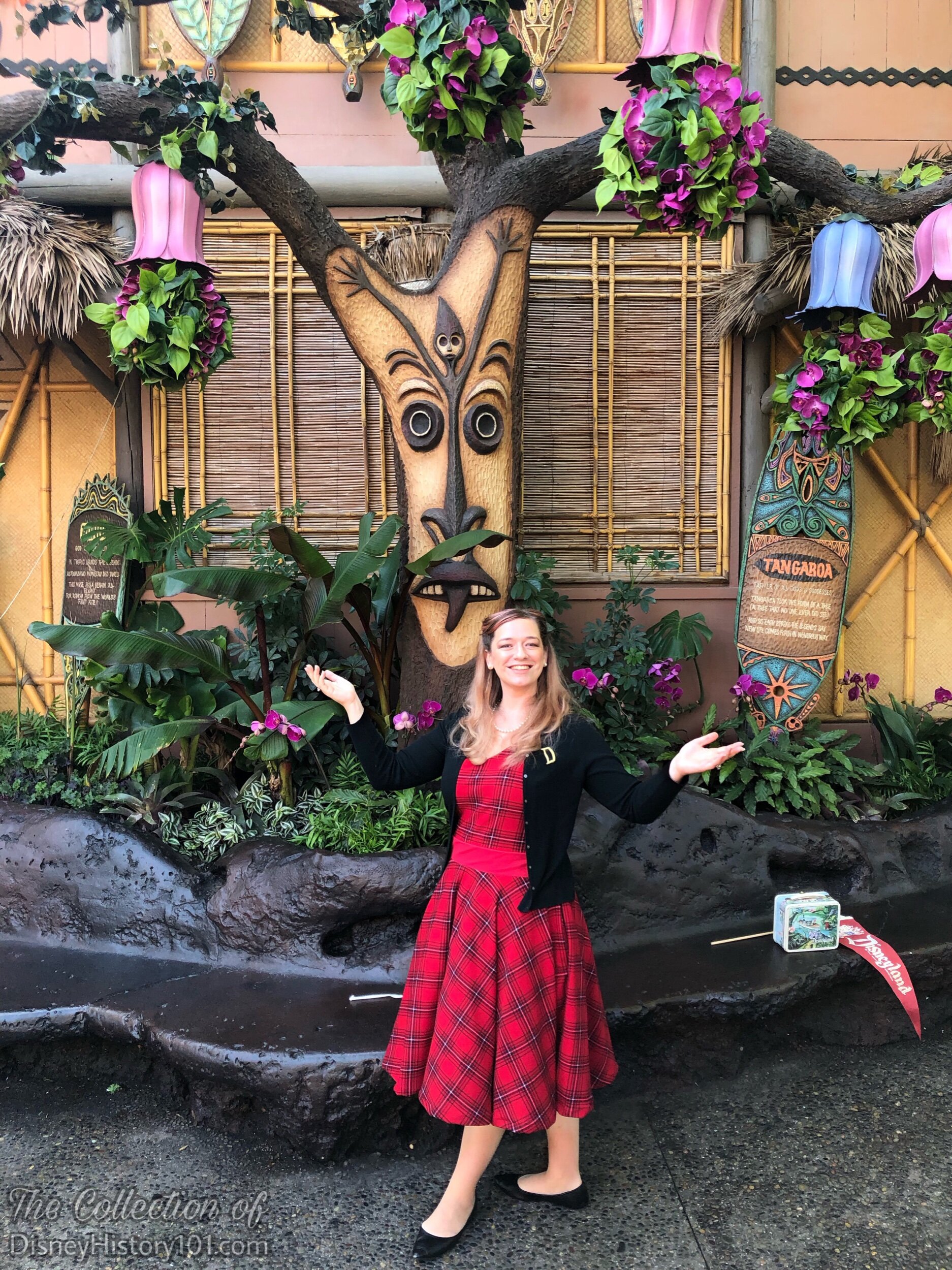
Walt Disney’s Enchanted Tiki Room Lanai & Tangaroa

Walt Disney’s Enchanted Tiki Room Lanai
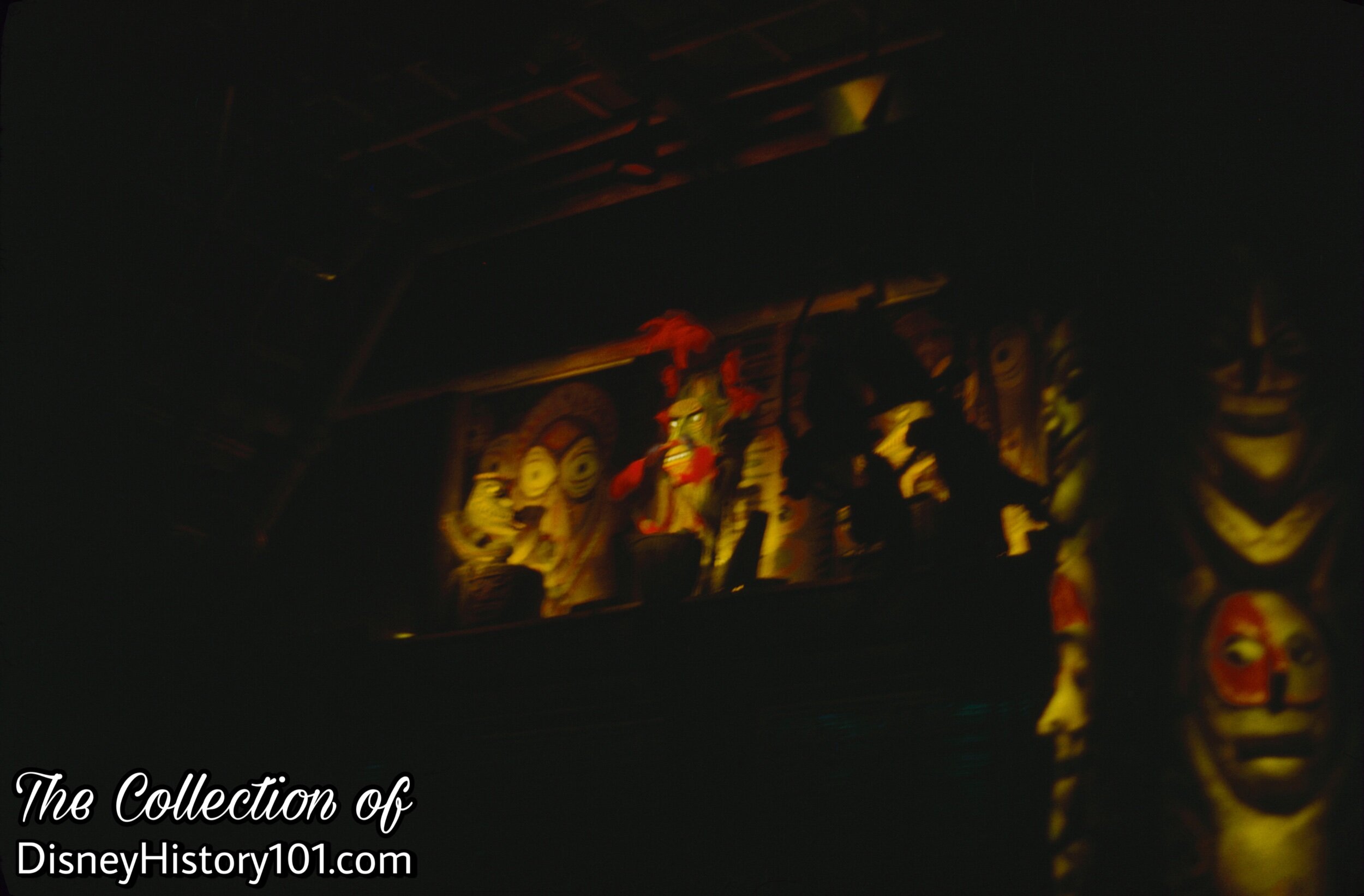
Walt Disney’s Enchanted Tiki Gods; July, 1966.
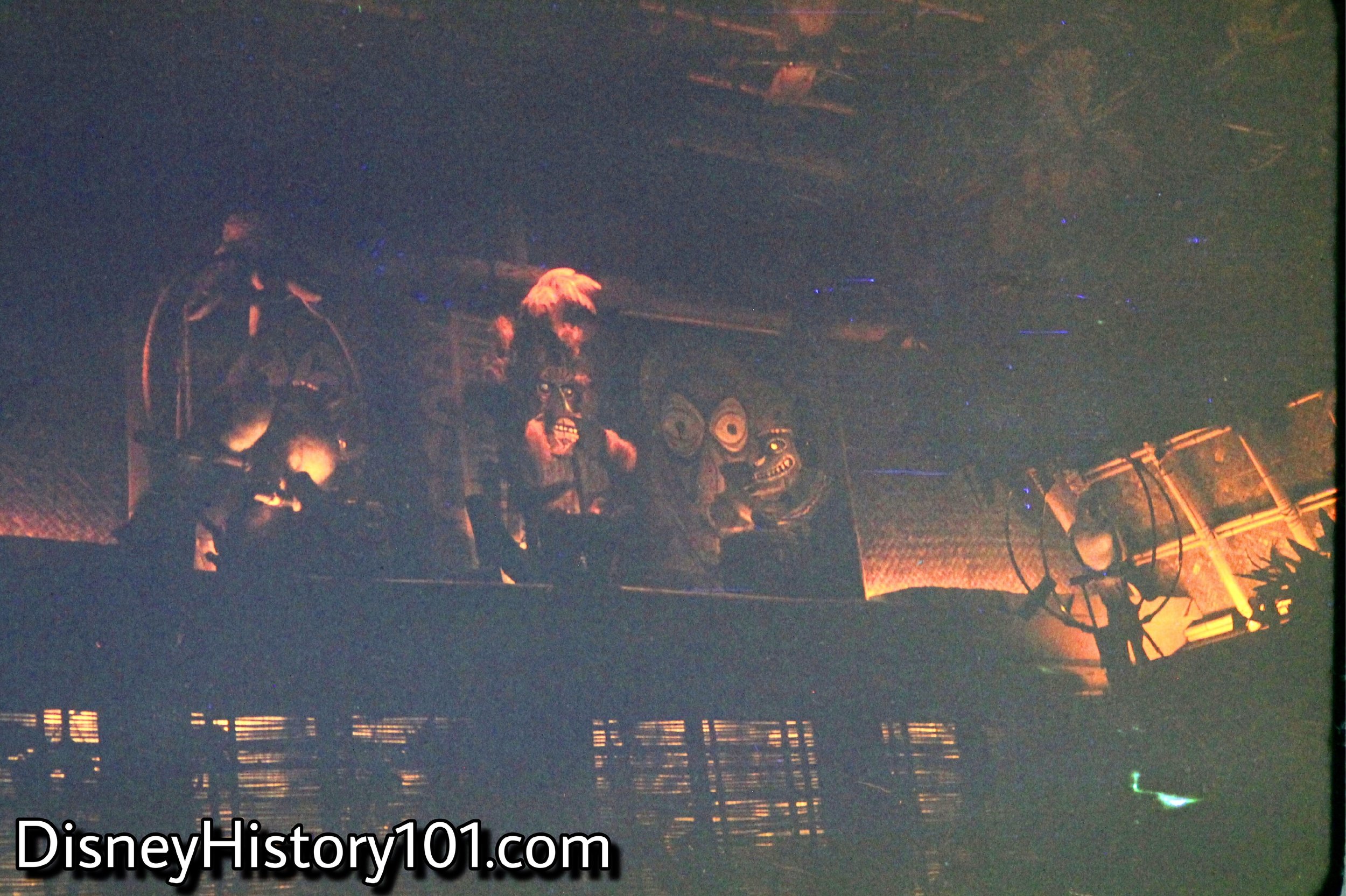
Walt Disney’s Enchanted Tiki Room Interior

The Enchanted Fountain in Walt Disney’s Enchanted Tiki Room; July, 1966.
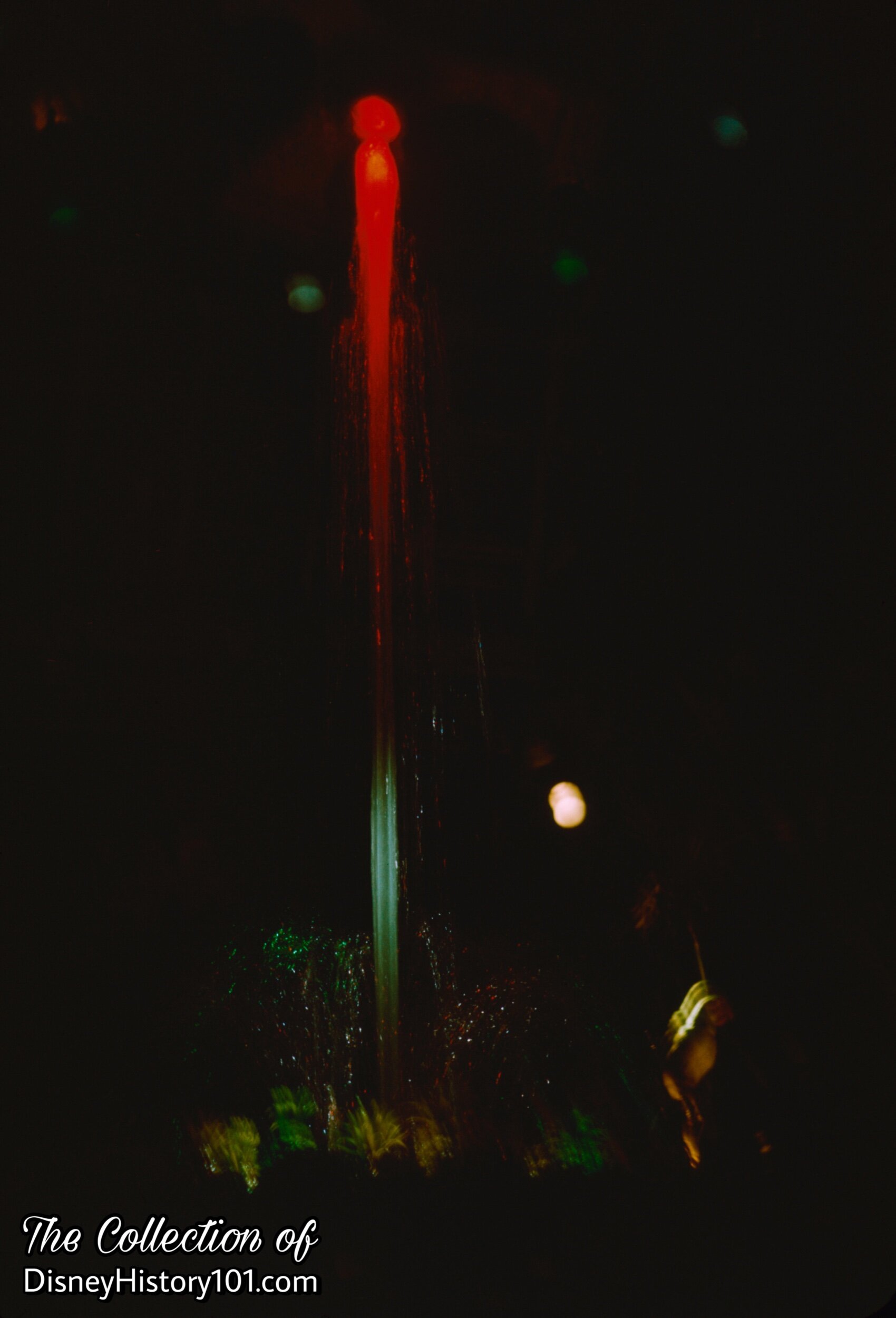
The Enchanted Fountain in Walt Disney’s Enchanted Tiki Room; July, 1966.
The scarlet-colored waters of the Enchanted Fountain raise and lower with a bird mobile balanced on the top of the water spout.
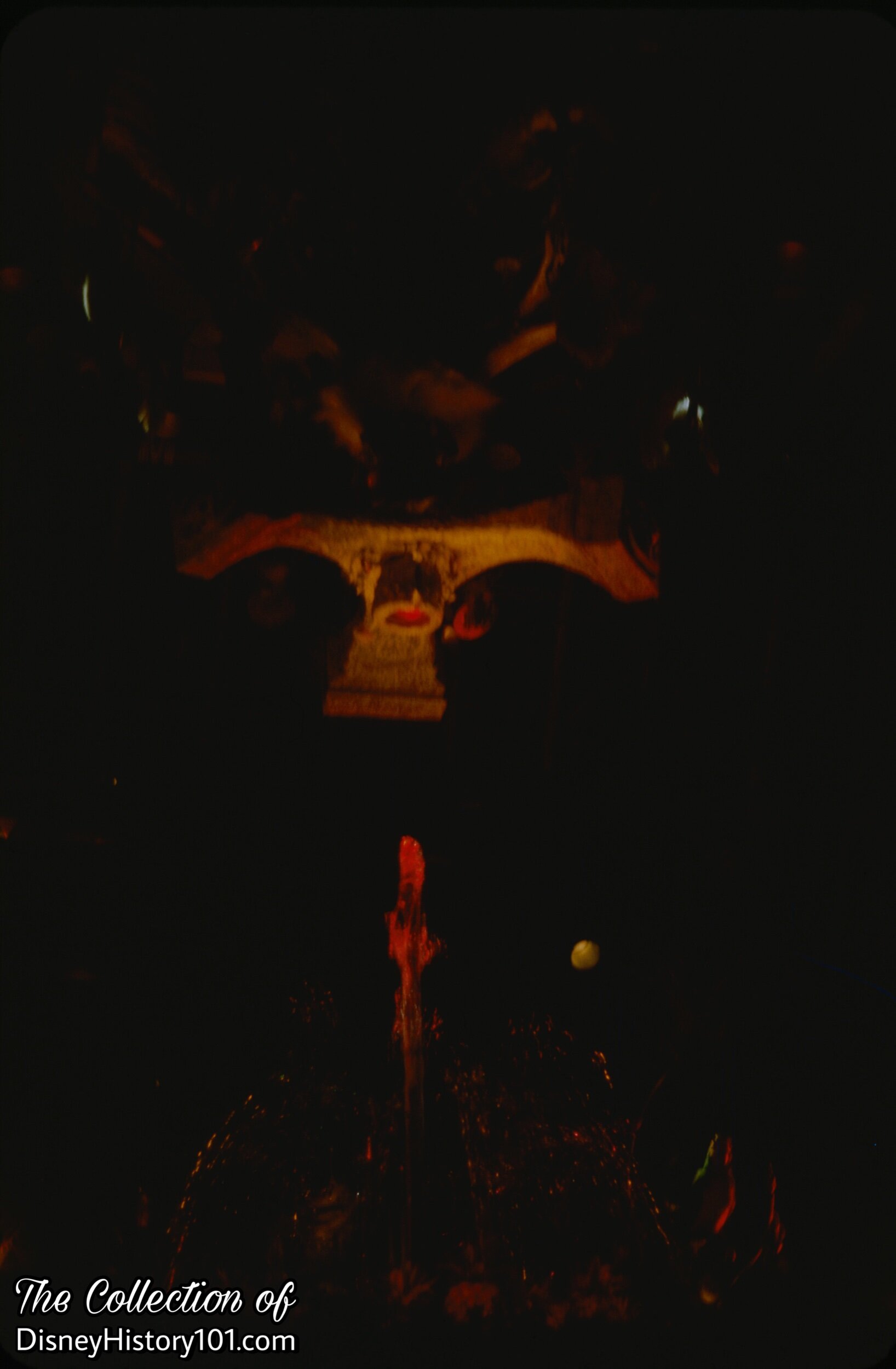
The Enchanted Fountain in Walt Disney’s Enchanted Tiki Room, July, 1966.
As our eyes are drawn to the rising waters of the magical fiery-colored fountain in the center of the room, our attention is diverted toward the next act lowering from the ceiling.
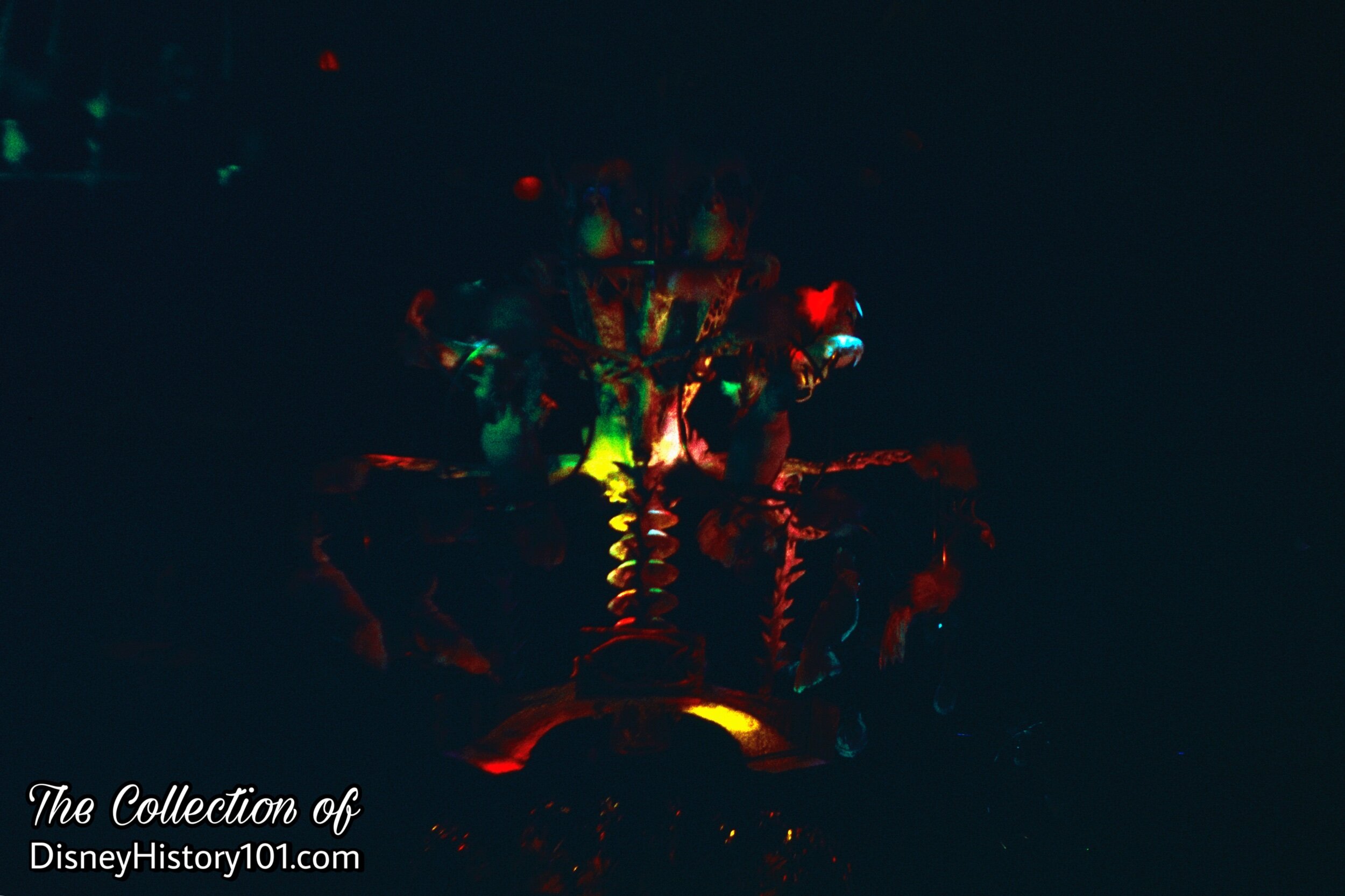
Walt Disney’s Enchanted Tiki Room Bird Mobile
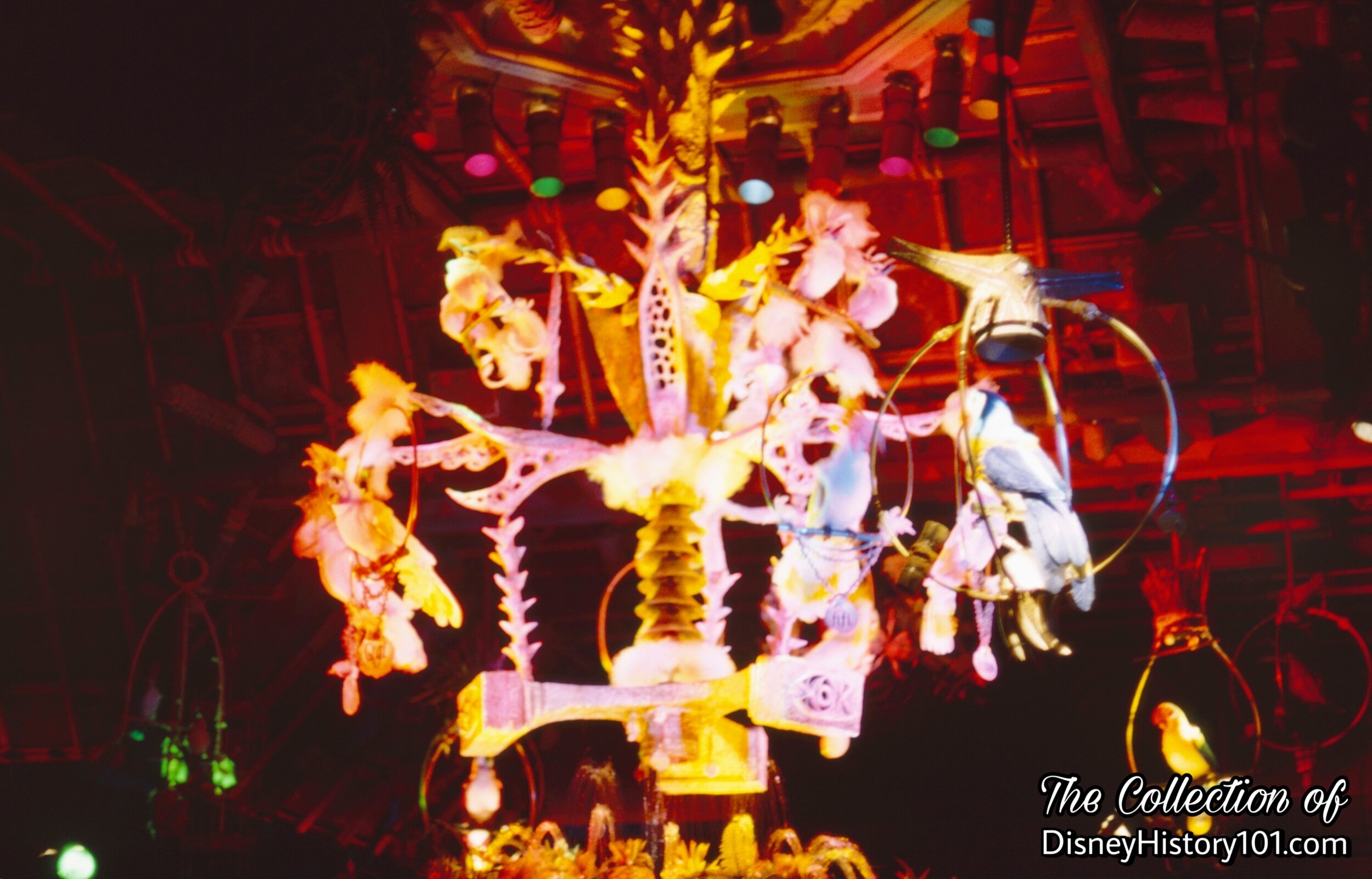
The Breathtaking Birdmobile inside Walt Disney’s Enchanted Tiki Room
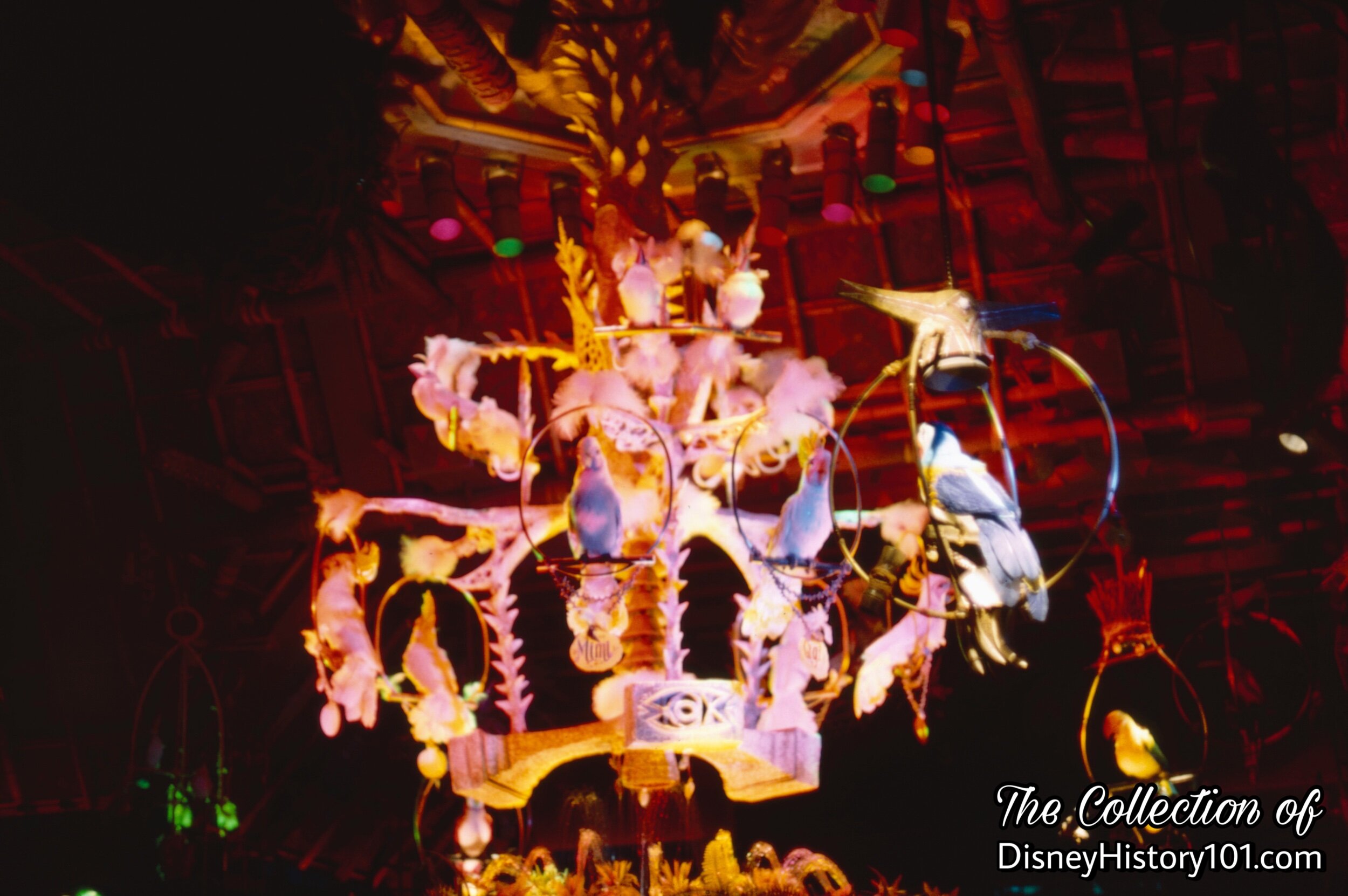
Walt Disney’s Enchanted Tiki Room Bird Mobile
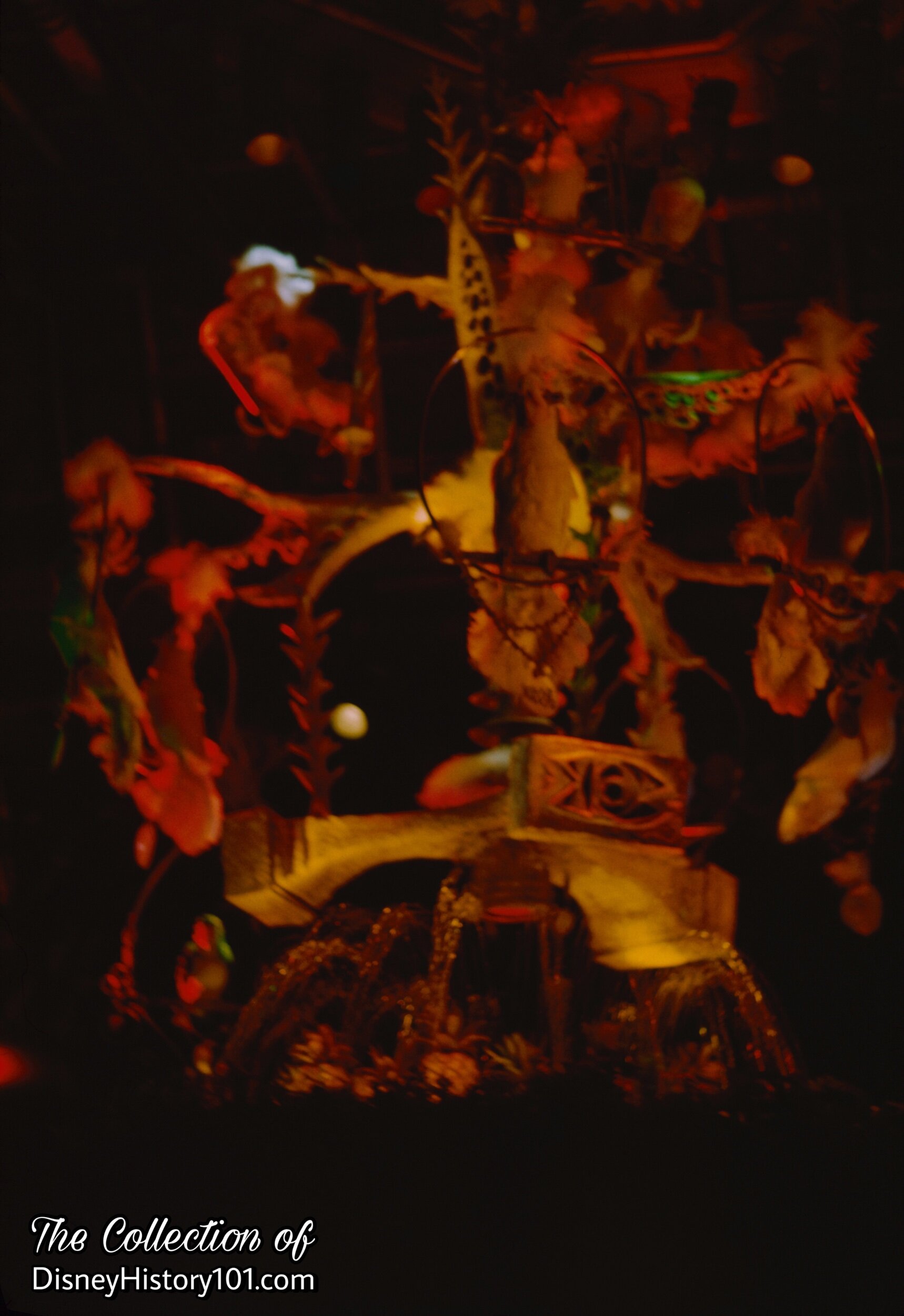
Walt Disney’s Enchanted Tiki Room Bird Mobile; July, 1966.
Six white cockatoos (named Collette, Fifi, Gigi, Josephine, Mimi, and Susette) “dressed” in their snow-white “gowns”, descend into the audiences view, while perched upon the twirling Bird Mobile.
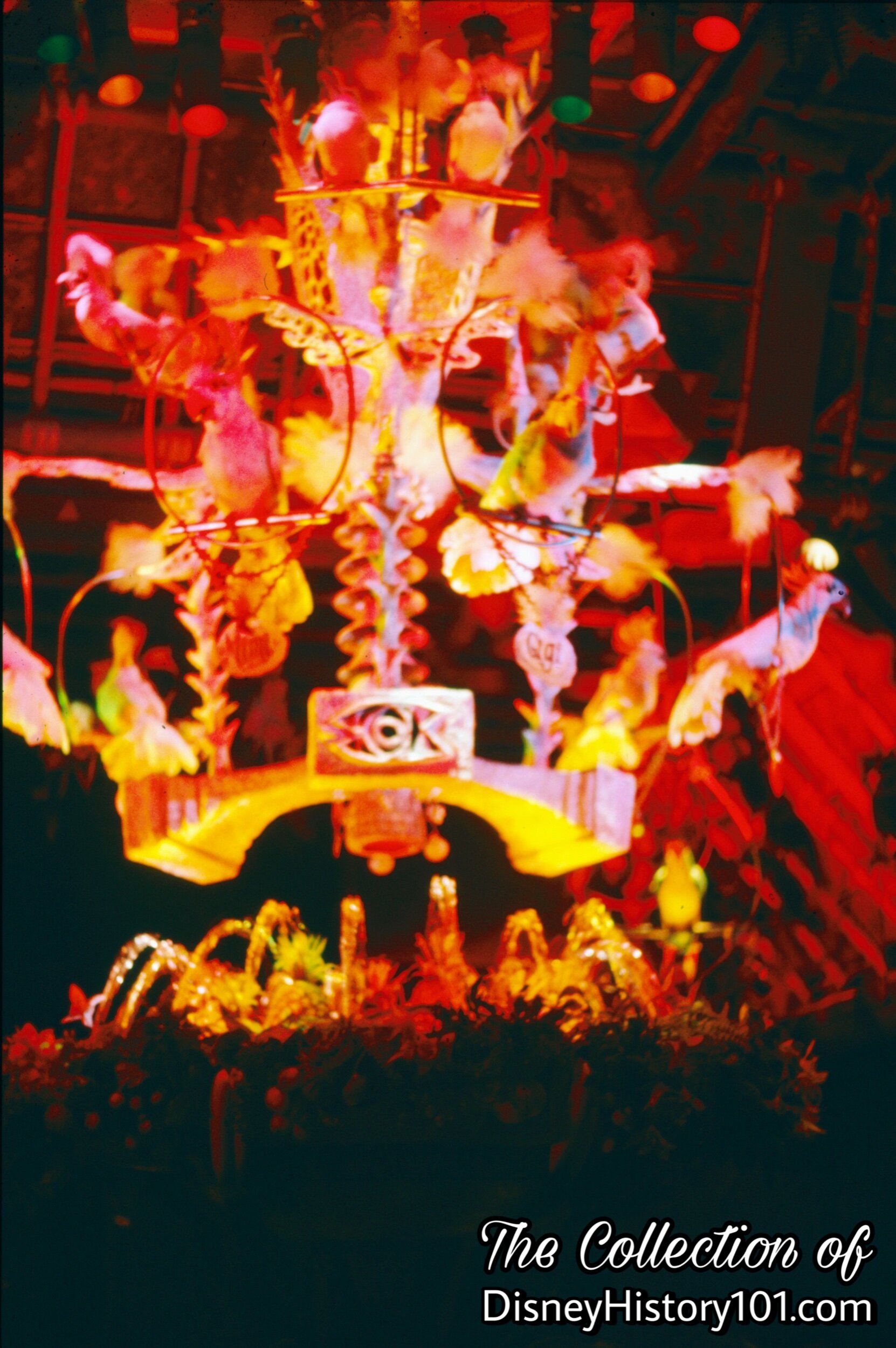
Walt Disney’s Enchanted Tiki Room Bird Mobile
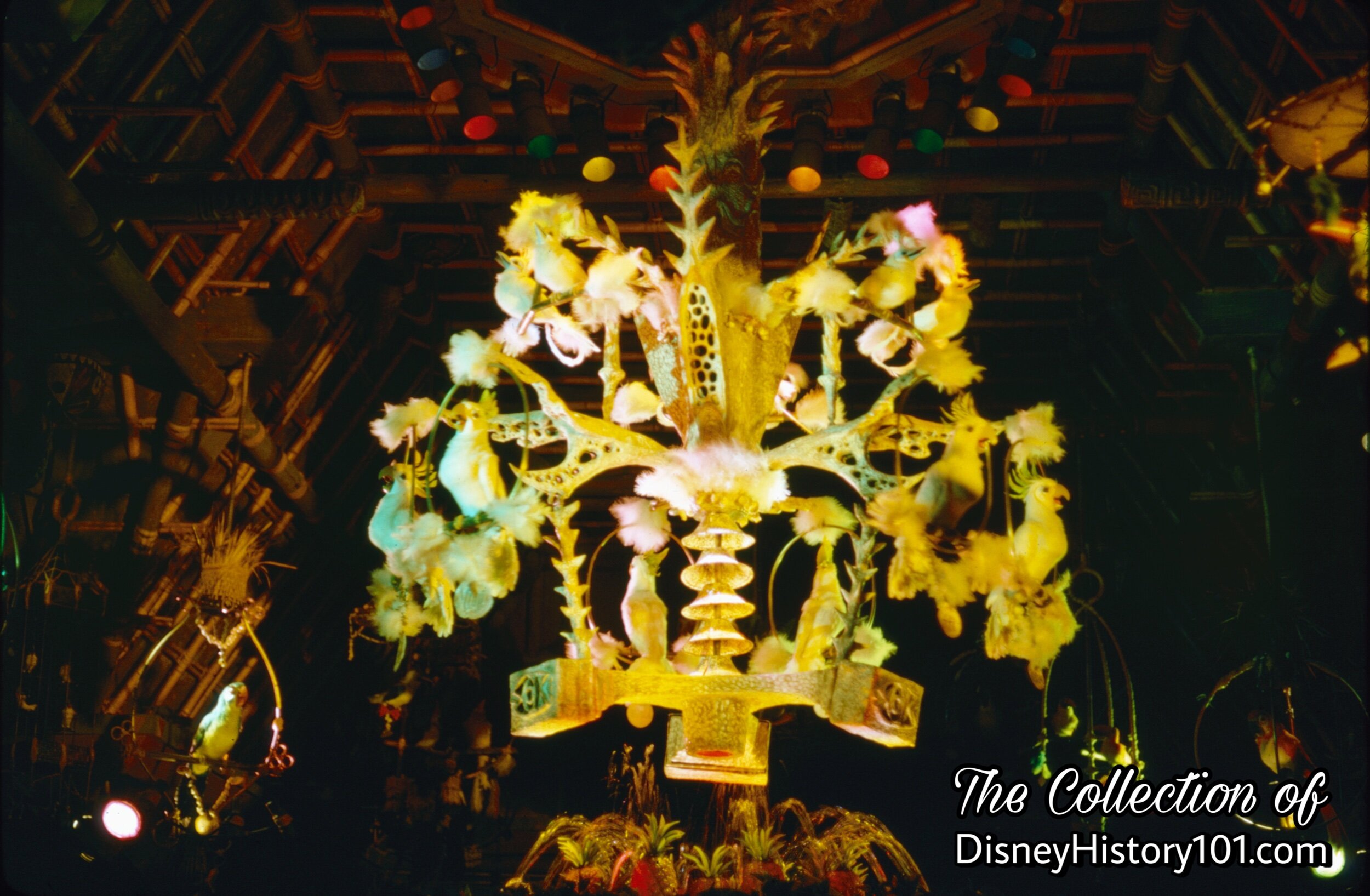
Walt Disney’s Enchanted Tiki Room Bird Mobile
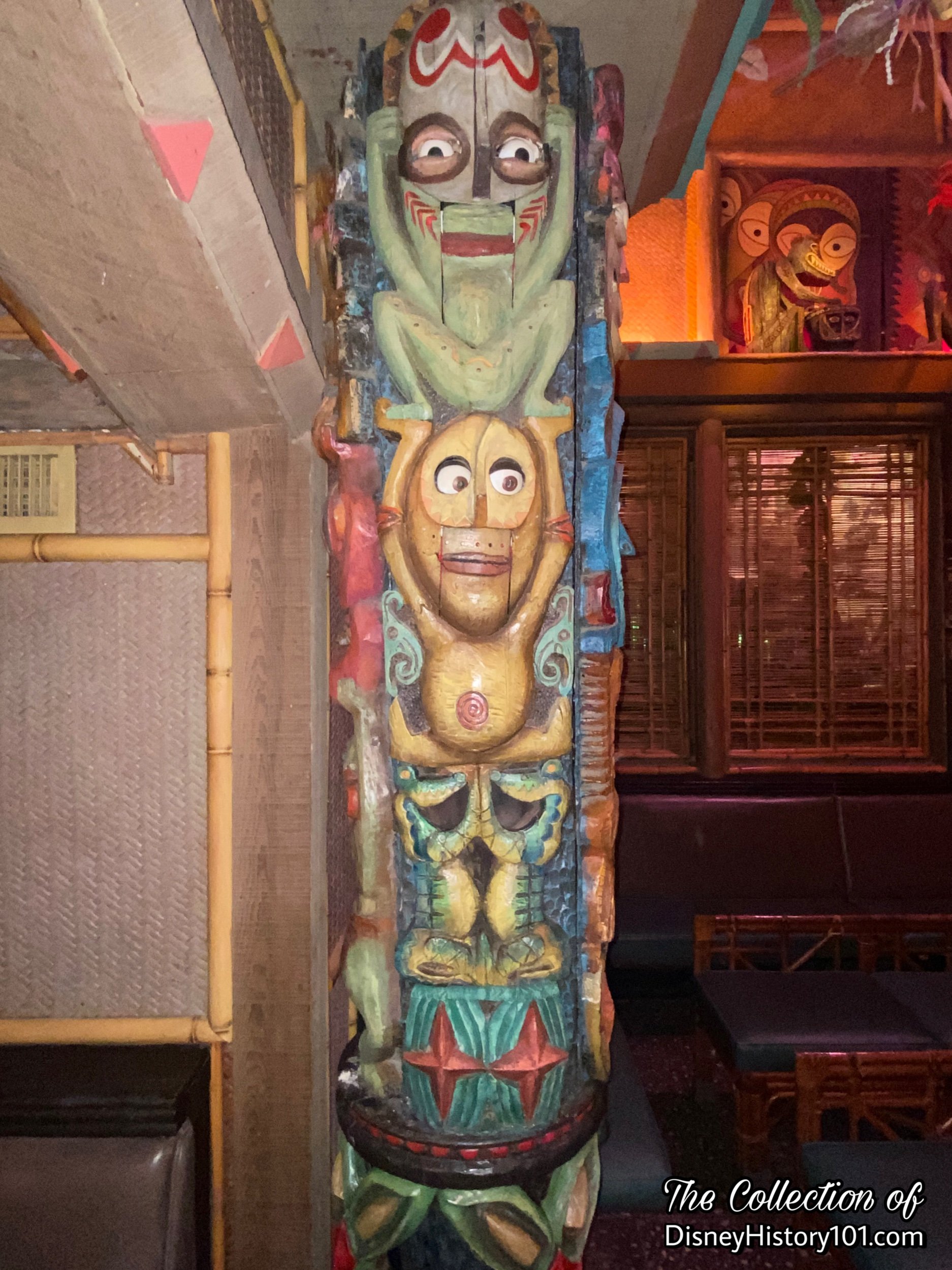
Walt Disney’s Enchanted Tiki Room
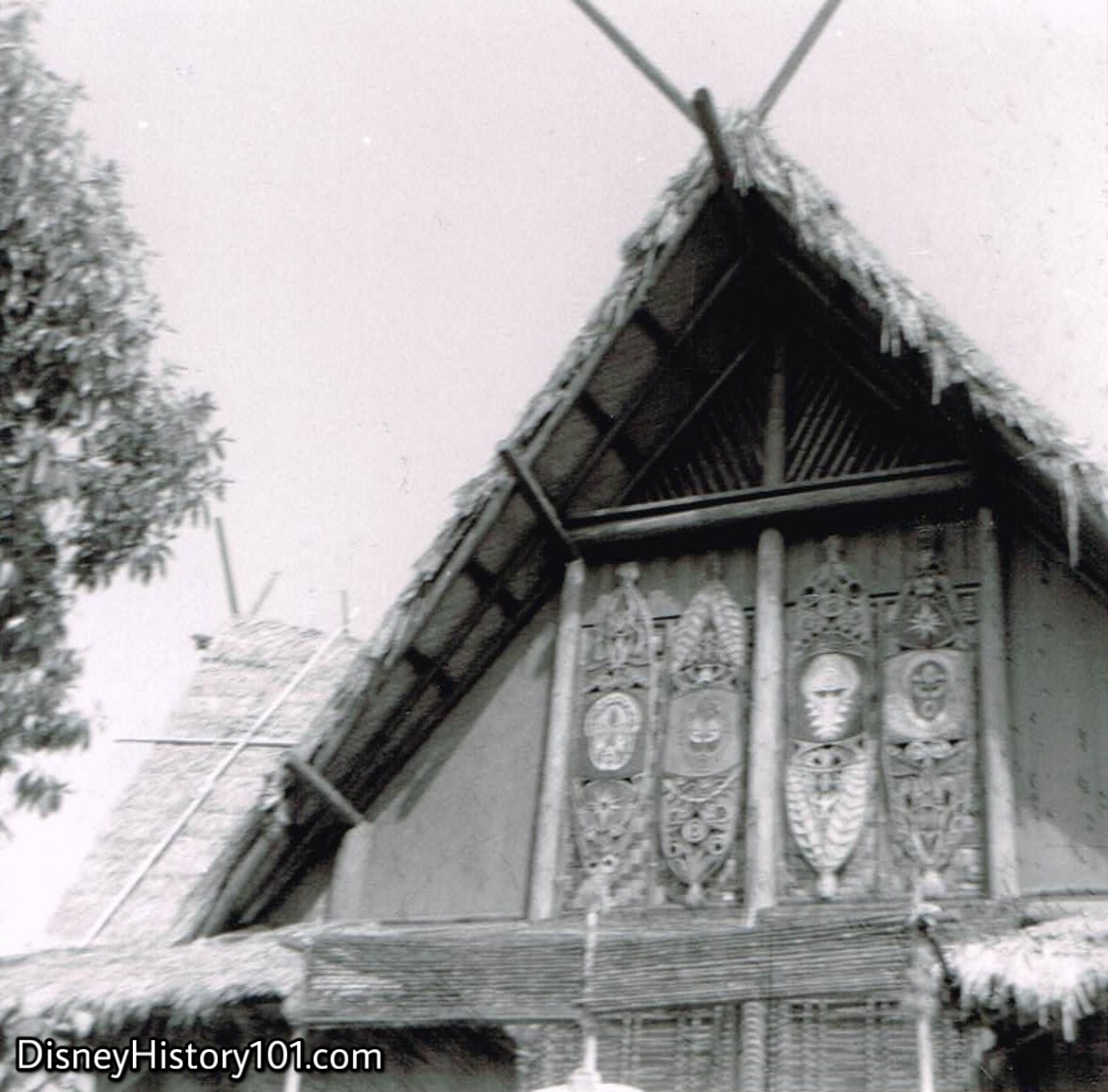
The "Backside" of Walt Disney’s Enchanted Tiki Room.
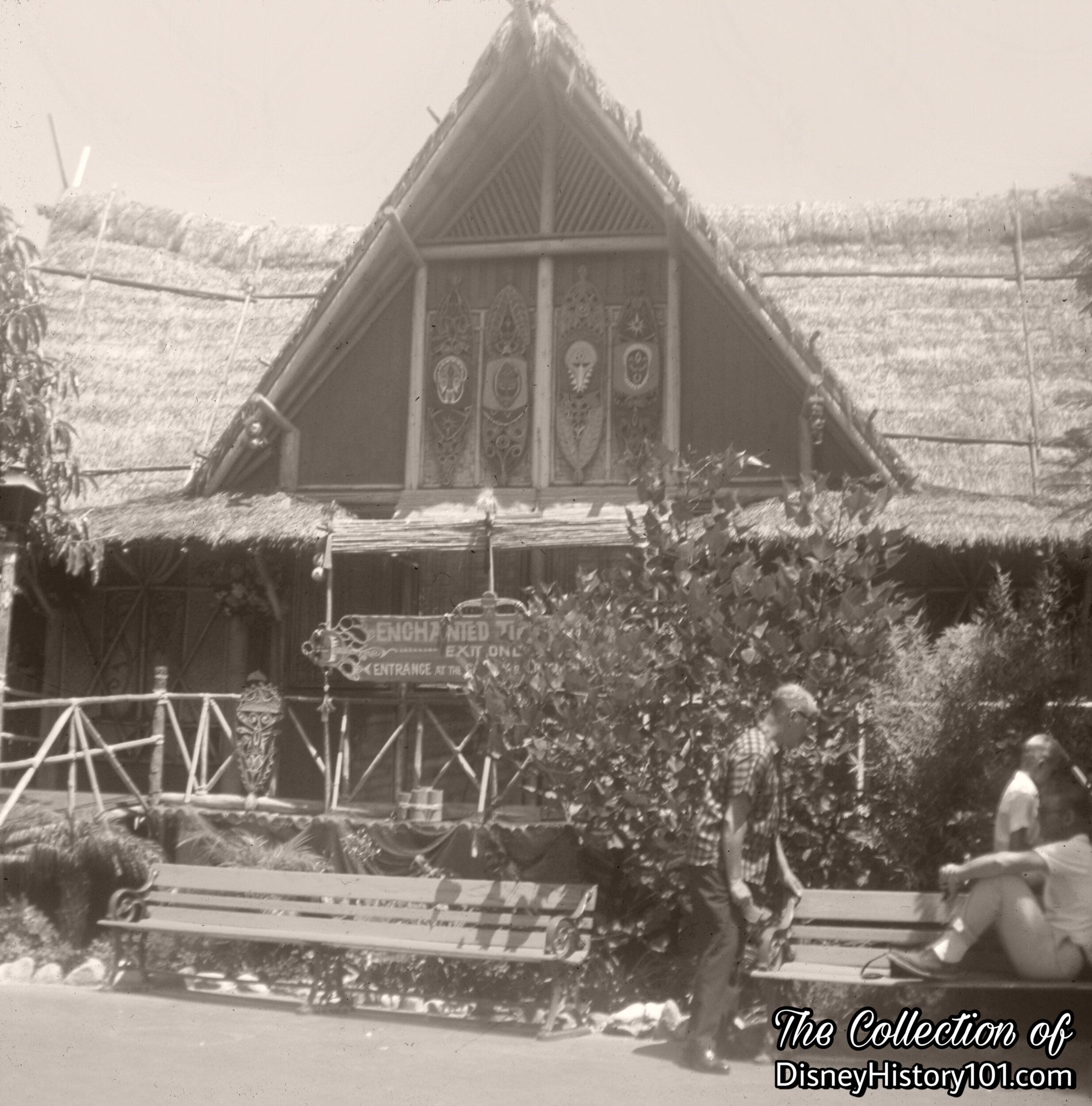
The "Backside" of Walt Disney’s Enchanted Tiki Room.
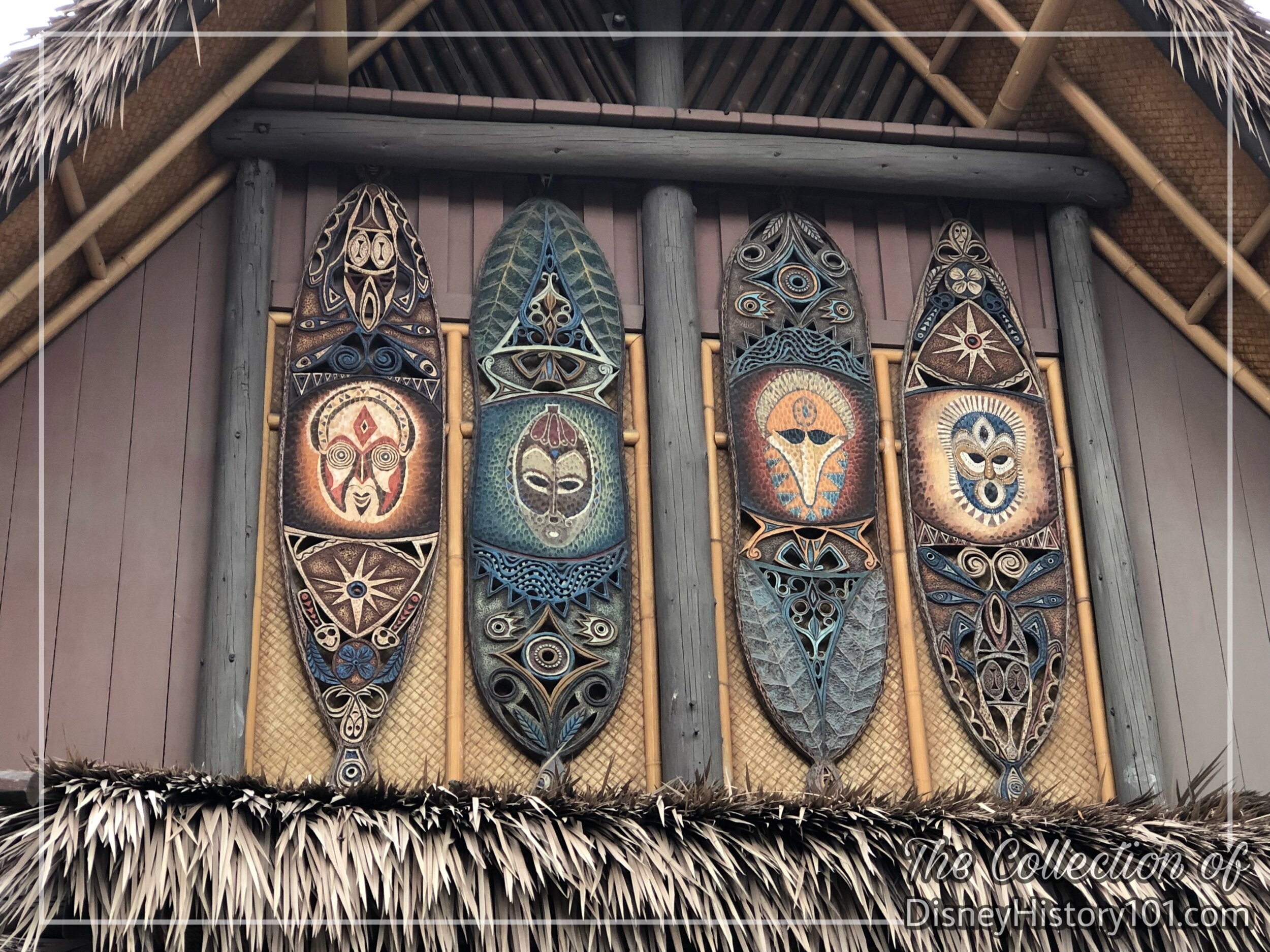
The "Backside" of Walt Disney’s Enchanted Tiki Room.
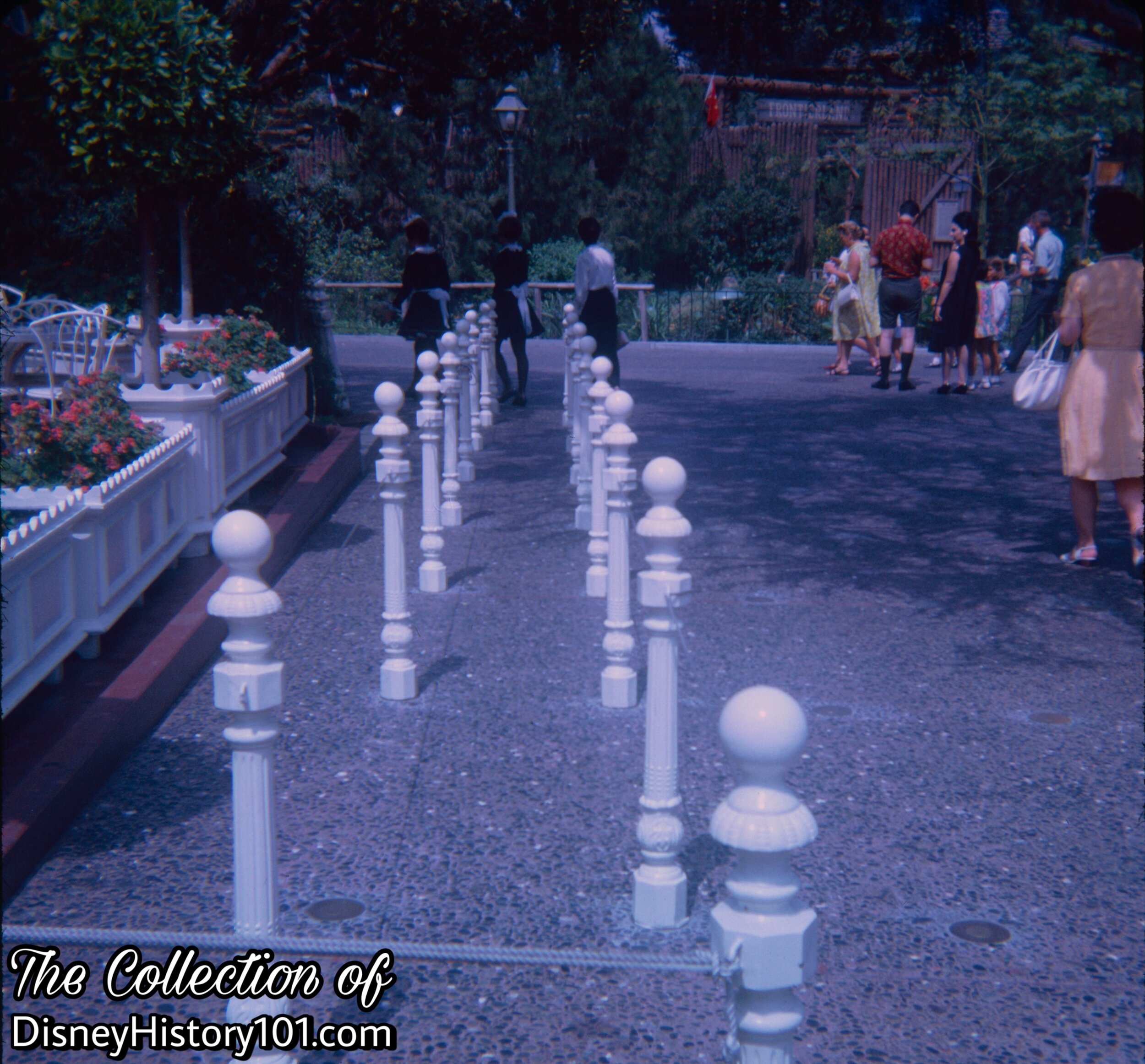
Removable Guest Control Stanchions
“Disneyland Attractions Time Studies”
The original cycle time per show was twenty minutes, allowing for three shows per hour. With a 245-Guest capacity per show, theoretically 735 Guests could attend the show per hour. Clearly, Walt Disney’s Enchanted Tiki Room was quite popular, and the long queue would require removable and portable guest control stanchions, poles, and chains that would sometimes stretch through Adventureland Entryway and wrap around the corner (in front of the Plaza Pavillion).
The following four statistics are based on the results of Disneyland Attractions Time Studies gathered in 1968:
Theoretical Hourly Capacity (What the attraction should yield under ideal conditions) : 735
Capacity of Theater : 245
Capacity of Pre-Show : 245
Instantaneous Capacity of Attraction : 490
Audience Control Capacity : 387
Cycle Time (From the time a unit passes a given point and returns to the same point): 20:00
Load-Unload Time (From the time the guest enters the unit, to being seated safely for dispatch, overlapping with the time it takes for the guest to be clear of the unit until it is safe to dispatch) : 3:00
Show Time : 17:00
Shows Per Hour : 3
Dispatch Interval Time : 20:00
“Audience Response”
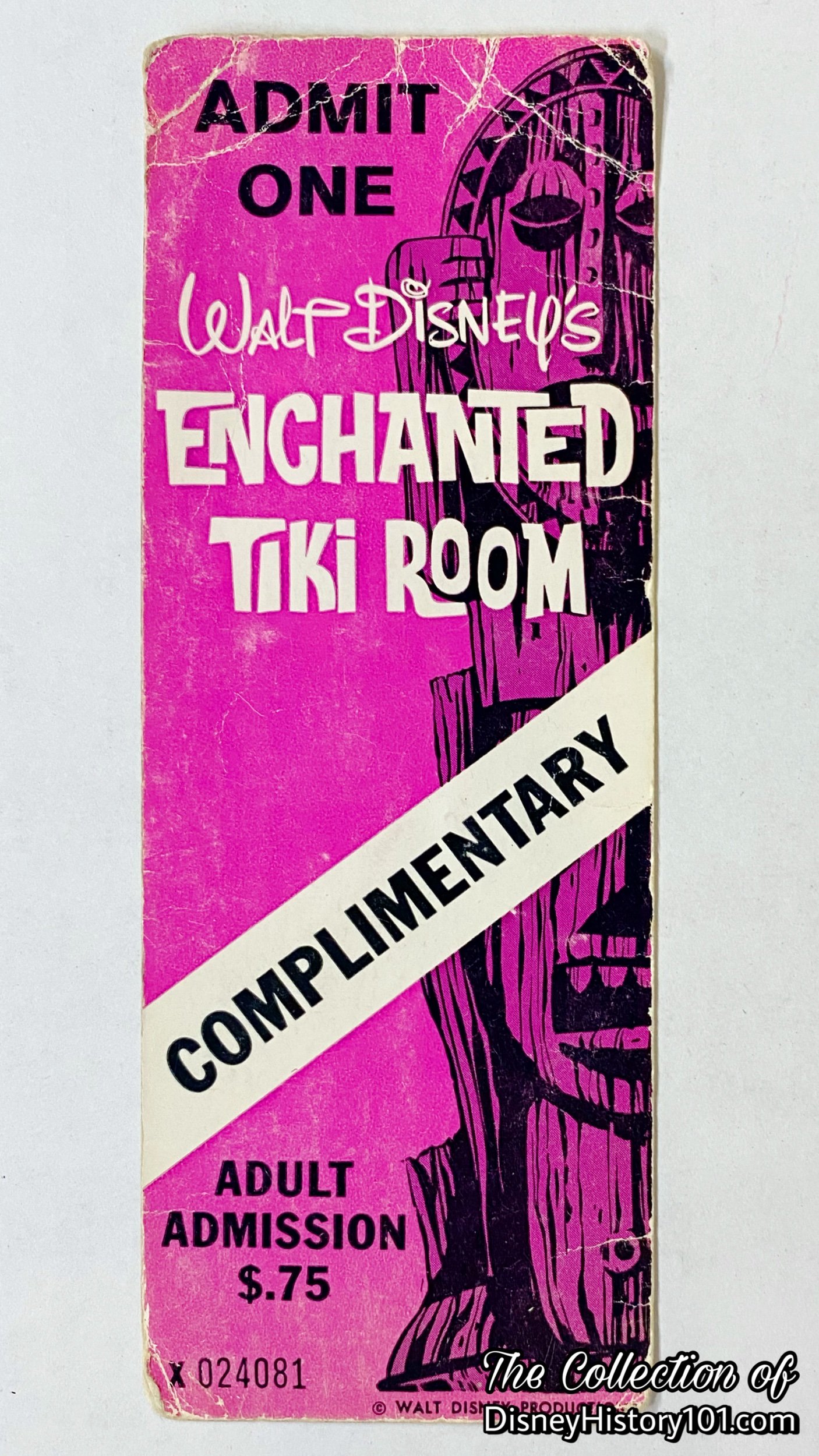
“Admission Tickets”
In 1965, the cost of admission for visiting a Polynesian paradise where 225 birds, flowers, and tropical tikis entertain was exactly one “E” coupon, or 75¢ for adults and 65¢ for children. By the spring of 1971, admission was one “E” Coupon. By 1979 - 1980, admission to this “tropical hideaway” was still one “E” coupon, the same as a flight through Space Mountain, passage through the Seven Seas of the Submarine Voyage, or passage aboard the Monorail (to Disneyland Hotel & return). By Disneyland’s 25th anniversary in 1980, admission to Walt Disney’s Enchanted Tiki Room presented by Dole Pineapple was still one “E” coupon!
By 1981, Ticket Sellers and Takers contributed $91,641,000 (Main Gate) and $1,873,000 (In Park) in revenue (of $94,576,000 area sales) for Center Stage at Disneyland.
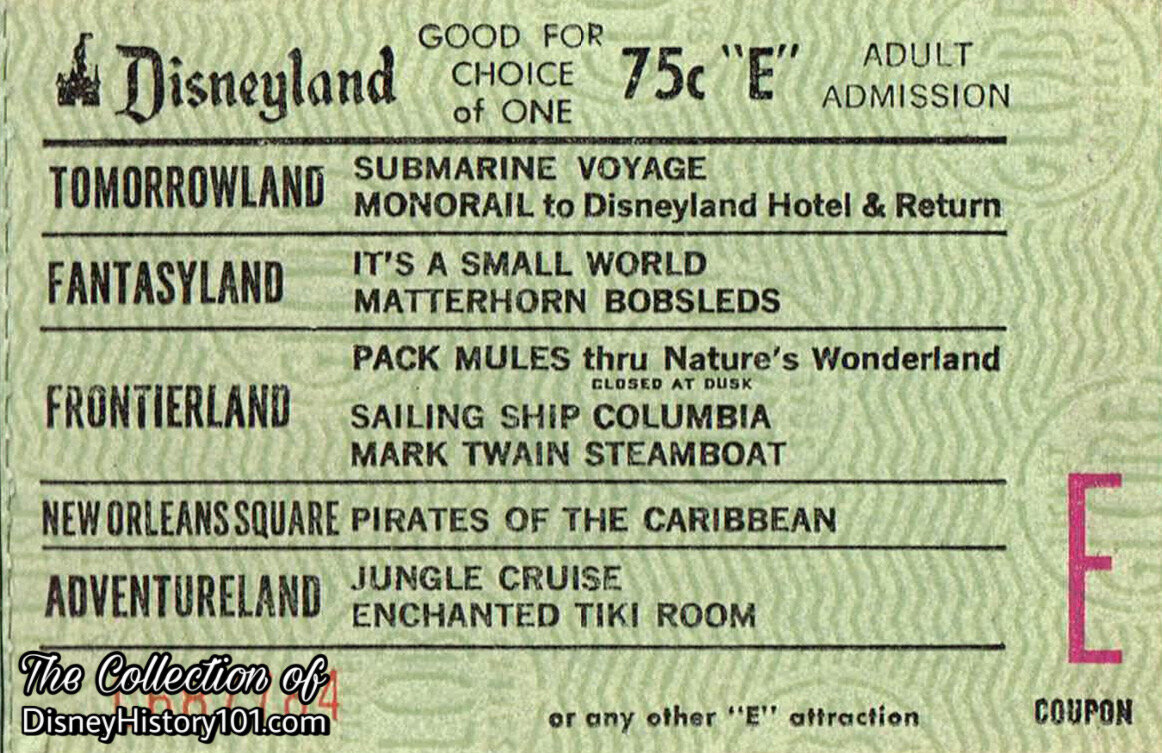
A Disneyland "E" Attraction Adult Admission featuring Walt Disney's Enchanted Tiki Room.
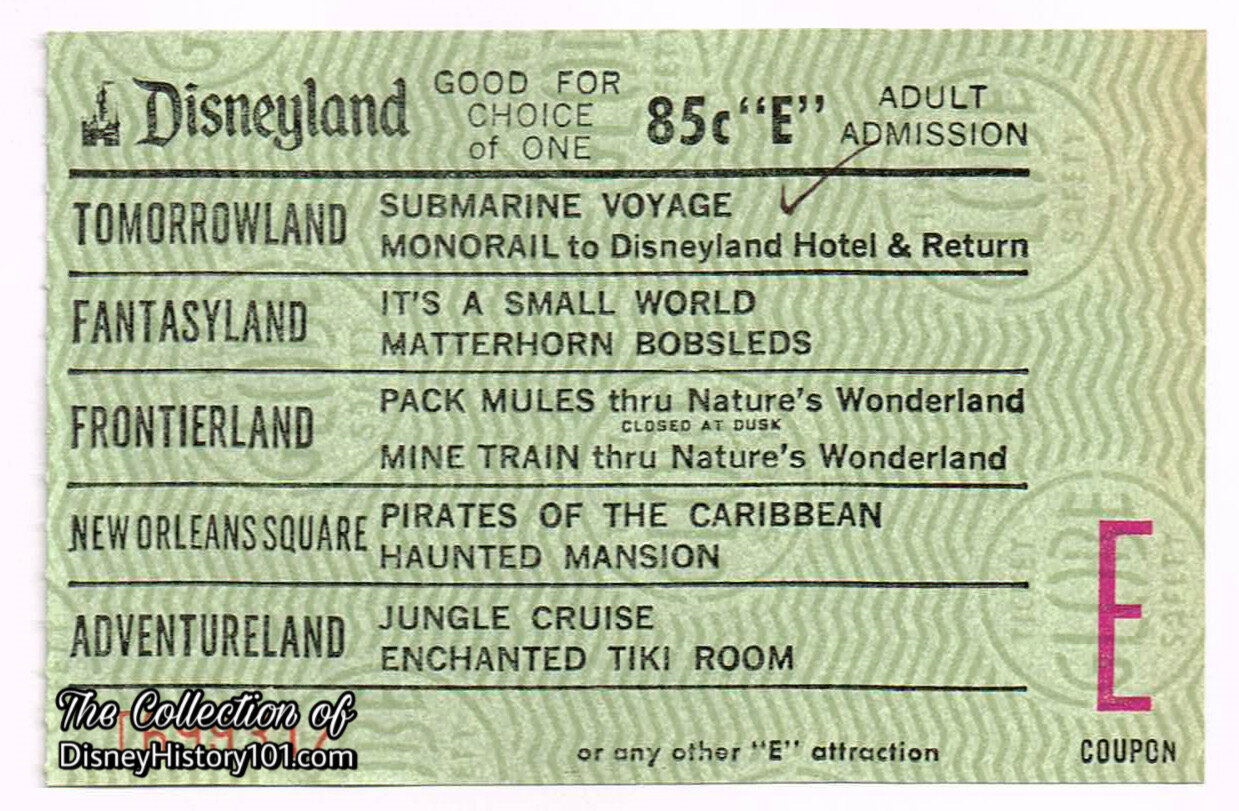
A Disneyland "E" Attraction Adult Admission featuring Walt Disney's Enchanted Tiki Room.
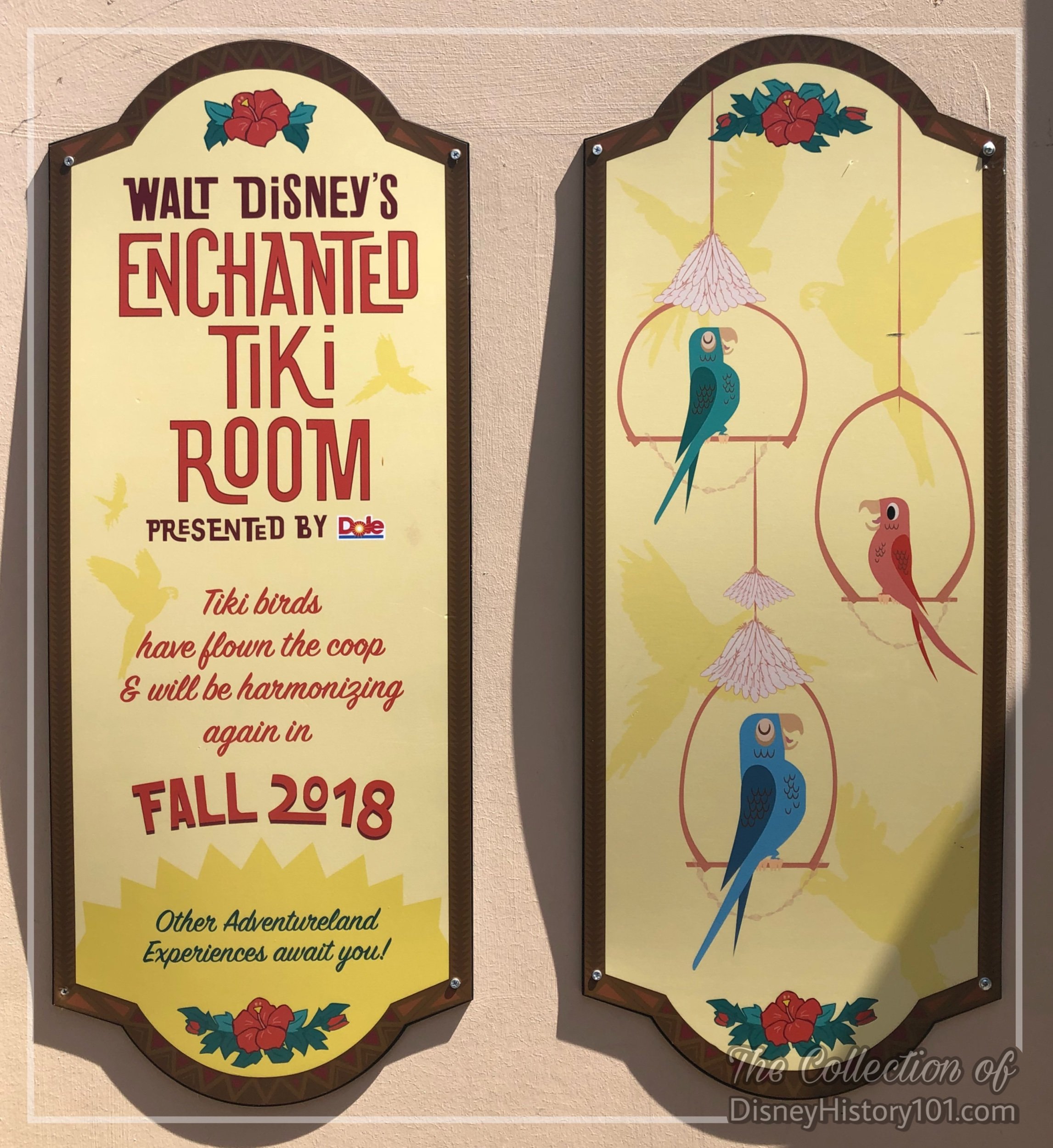
Walt Disney's Enchanted Tiki Room Rehabilitation Sign; 2017.
“Maintaining the Show”
Nightly the Enchanted Fountain was cleaned. By 1989, Disneyland Plumbers used chemicals and processing to create the purified water necessary to prevent hard water stains in the fountains of Walt Disney’s Enchanted Tiki Room.
Behind the scenes the Disneyland Sound Shop Technicians (like Jerry White, hired 1957) assured that the flowers and tikis were operating properly, monitoring the tape systems and T.V. monitors. Jerry (who worked on the installation) even developed an circuit panels and an indicator light panel to assist in monitoring the shows.
Disneyland Machinists - show people in the truest use of the word - would make sure the actors sang - an aviary of 198 birds and 122 singing flowers. When maintenance was performed on this figure or a group of other figures, they were carefully repositioned as closely as possible to their “night mode” positions so that when a trial run was started, the movements of the functions were not violent.
By 1991, a team of six Disneyland Cast Members (comprised of the Audio and Costume Divisions) would check the Audio-Animatronics figures to assure the current standards of Show Quality were met. The walk-through of this attraction and 14 other attractions (in addition to a few other locations like the Br’er Bar, which had figures), would occur some four-to-five hours before the Park opened. Oil stains were cleaned away, and rips and tears were repaired on the one-of-a-kind pieces of wardrobe belonging to some 700 figures. Meanwhile one costume (of three spares kept in cabinets of the attraction’s Backstage Areas) was used to re-dress the figure. Some of these figure’s locations pose a challenge for the Costume Division Cast Members.
“Show Quality Enhancements”
Around 1965, there was a change in the Barker Bird’s spiel.
By 1981, there was a Tiki Juice Bar serving pineapple juice and fresh pineapple spears.
Walt Disney's Enchanted Tiki Room: Under New Management - Still, another (and second) expansion was to be partially unveiled to Walt Disney Company employees at “Walt Disney Imagineeringland” on November 15 & 16, 1997. A The Enchanted Tiki Room “Under New Management” exhibit was on display in “Tujungaland” at 6904 Tujunga. Walt Disney Imagineer Senior Writer and Director Kevin Rafferty contributed show writing for Walt Disney's Enchanted Tiki Room: Under New Management.
During that refurbishment (which took place during the 1990s), the 17-minute show was shortened. Several minutes were cut off the program including (a Barker Bird favorite) “Barcarolle”, of Offenbach’s Tales of Hoffmann. A barcarolle is an Italian word for a song sung by Venetian gondoliers, so don’t be surprised if you ever hear a Jungle Cruise Skipper whistling the melody. Today, a few notes of “Barcarolle” can be heard while the Enchanted Tiki Room Birds banter about Offenbach after the big opening number!
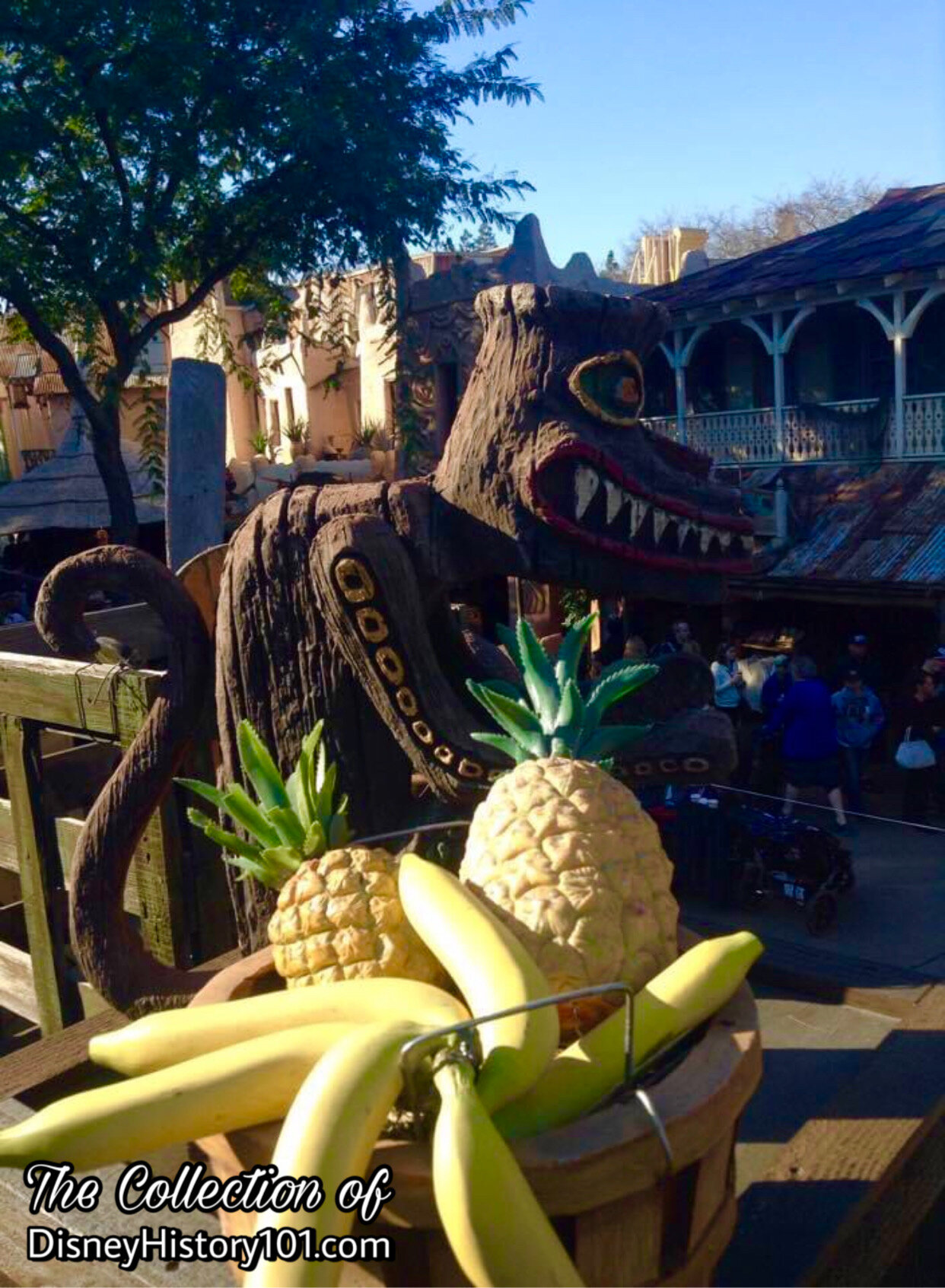
A Tiki Drummer above Adventureland.
Through the years, the magical world of Walt Disney’s Enchanted Tiki Room has been extended beyond the original “tropical hideaway”, and into other areas of Adventureland.
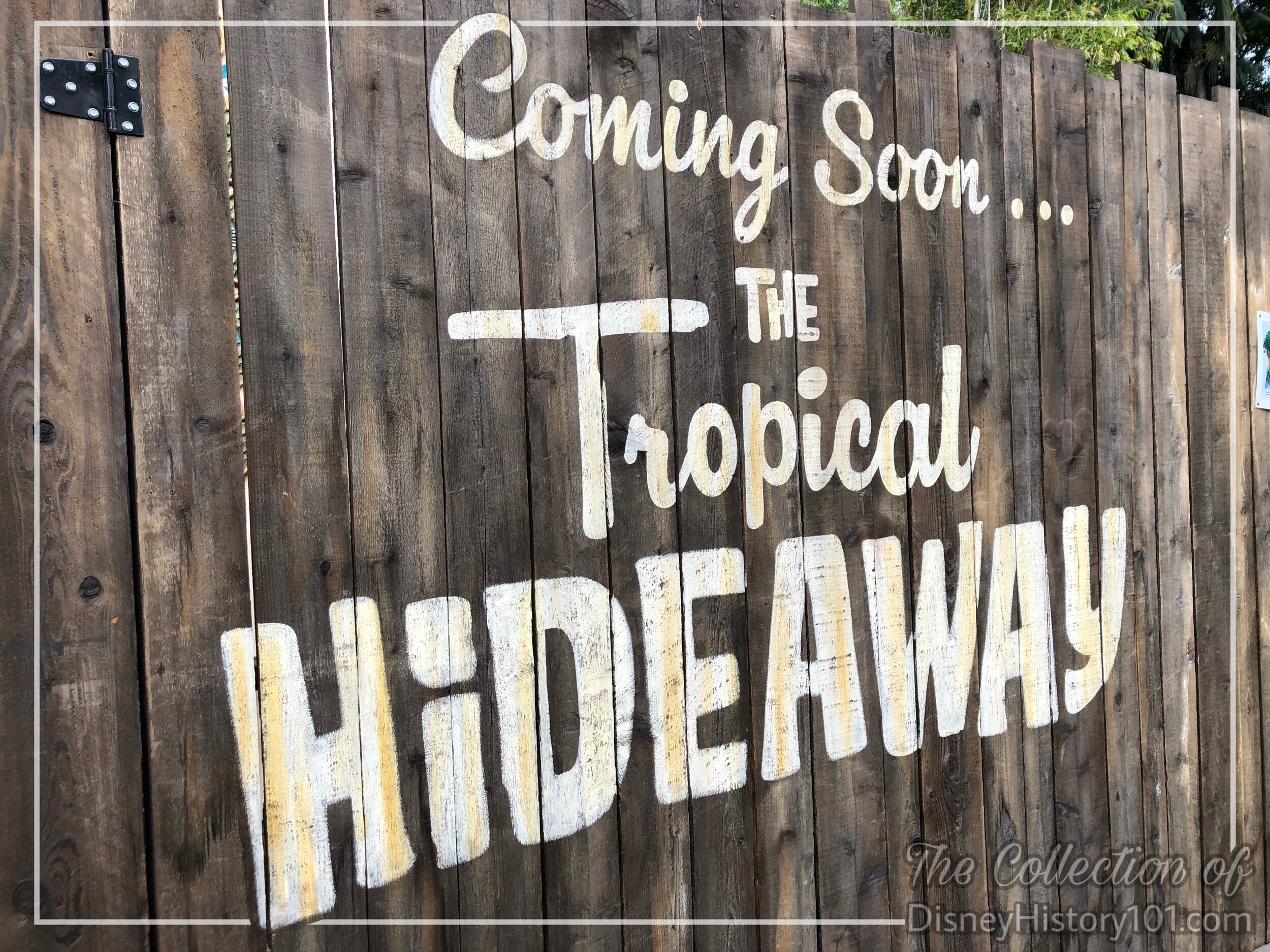
The Tropical Hideaway Construction Barrier.
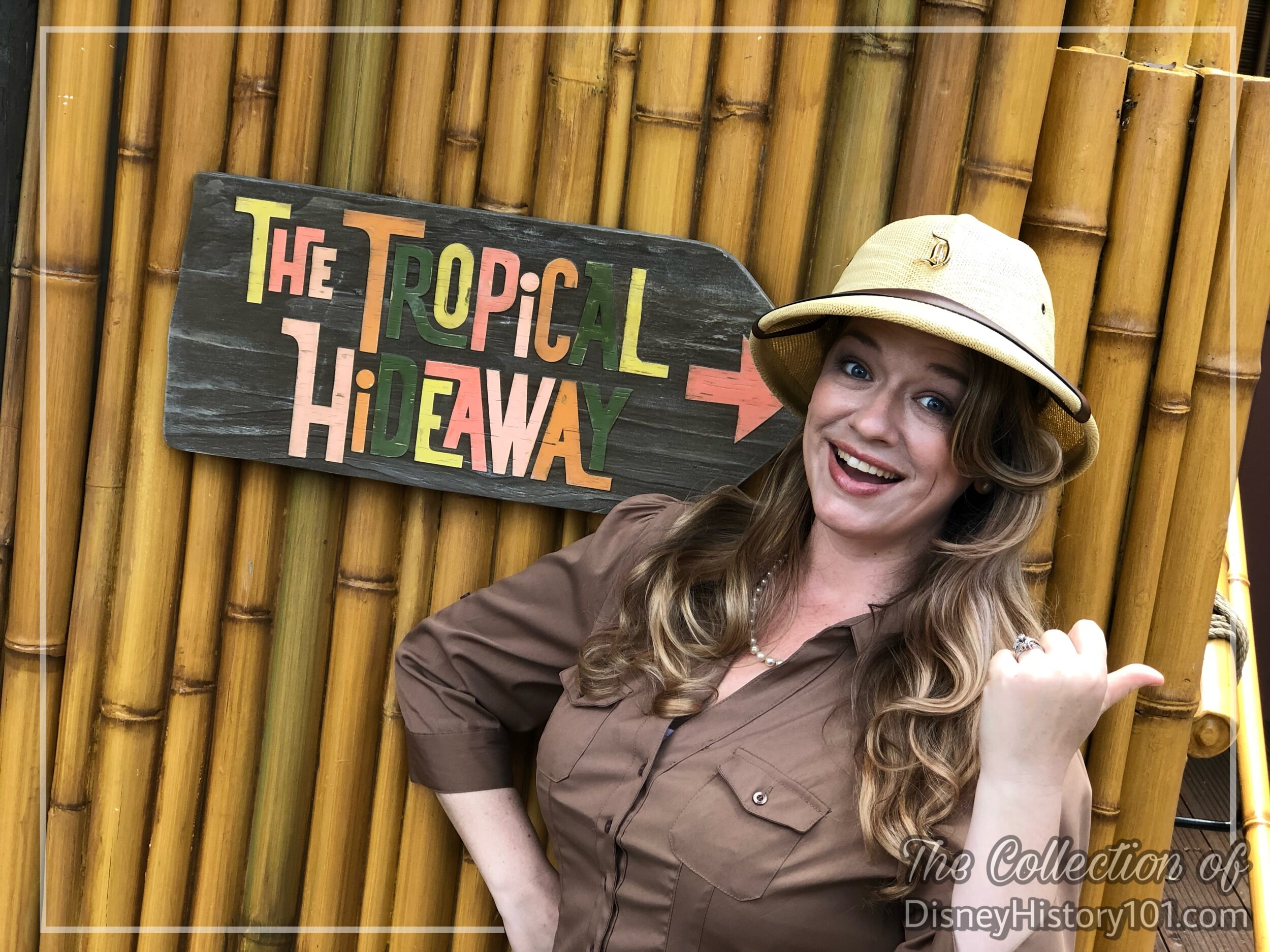
The Tropical Hideaway
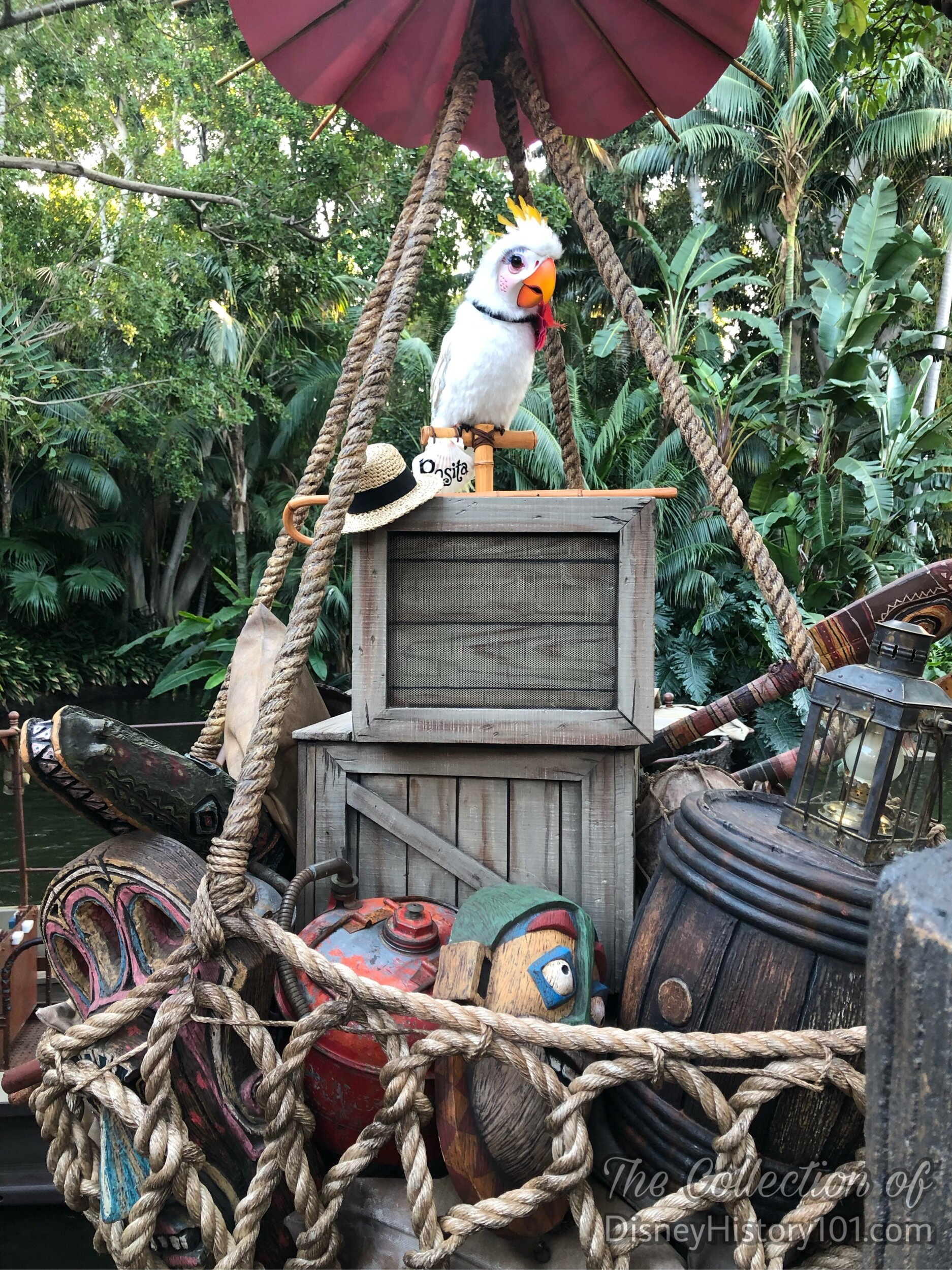
Rosita in the Tropical Hideaway.
“I Wonder What Happened To Rosita?”
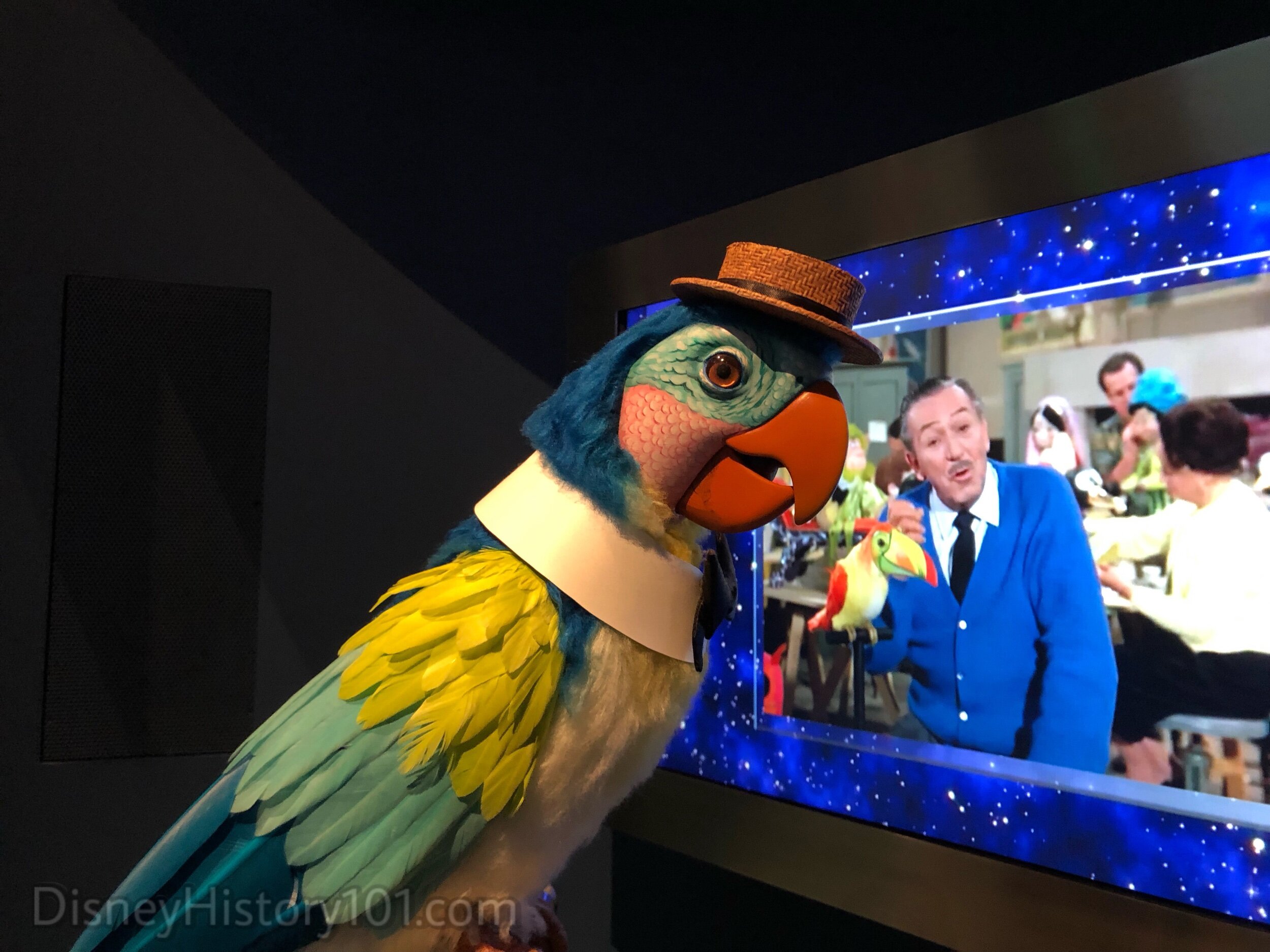
The animated PEPE DEL PRESIDIO by Garner Holt, (Walt Disney Family Museum, 2014)
“Audio-Animatronics Legacy”
Considering when the milestones in the development of Audio-Animatronics occurred, it is clear that “The Tiki Room would have been an impossibility in 1955, when Disneyland opened. It took the precision techniques and electronic systems of the space age to produce the revue. Or, as on technician puts it, ‘We’ve got almost enough gadgets and equipment for this show to put all of Disneyland into orbit!” [“Walt Disney Disneyland,” pages 51 & 52, printed by Officine Grafiche Arnoldo Mondadori - Verona; first published 1964] According to Walt Disney (in a c. 1963 interview with Fletcher Markle), “Now, we’re making these… dimensional human figures move, we make animals move, we make anything move, through the use of electronics. It’s a tape mechanism. The tape, its like programming and sequencing when… they’re sending some missile to the moon. At different stages, at different times, things must happen. That’s all programmed - pre-determined. So our show’s put on that tape, programmed from this tape. And we run it off a little 1-inch tape that has 14 tracks. On each track, we can get up to 16 signals. Now, those little signals go and impulse this figure and make the figure move make the figure talk, and everything.” “Well it’s another door that’s opened for us. You see our whole forty some odd years here have been in the world of making things move. Inanimate things move, from a drawing through all kinds of little props and things. Now we’re making these human figures move through the use of electronics… it’s juts another dimension in the animation we have been doing all our life. It’s a new door… and we hope we can really do some exciting things in the future.” [September 25, 1963]
The New York World’s Fair of 1964 - 1965 would soon formally unveil “600-plus” of WED Imagineering’s sophisticated Audio-Animatronics figures (including some of the avian variety), amidst four shows, to some 47 million visitors. “A whole new medium of entertainment was brought into focus with Audio-Animatronics. The Tiki Room was on the drawing room table ten years ago and now is up in the air. This show is programmed on tape which actuate relays and they in turn supply movement to the characters in the show,” according to Lee David of Disneyland backstage magazine (published for the Summer of 1965).
“Legacy”
Feature Films - Audio-Animatronics meant big things for Walt Disney Productions. Bill Justice recalled a “famous bit of magic in this Mary Poppins scene… the robin which sat on Mary's finger as she sang. This was an Audio-Animatronics bird, like those in the theme park attraction ‘The Enchanted Tiki Room.’ The control lines were up Julie Andrews’ sleeve.”
Theme Parks - Walt Disney’s Enchanted Tiki Room has had several legacies of sorts when Tokyo Disneyland opened on April 15, 1983, with an Enchanted Tiki Room featuring “the friendly feathered warblers of the Enchanted Tiki Room” and the “impressive Polynesian-style structure from the Magic Kingdom.”
Museums and Exhibits - In 2014, Audio-Animatronics® wizard Garner Holt gifted a very special interactive replica to The Walt Disney Family Museum located within San Francisco’s Presidio. Though he may look similar to Juan, he is (appropriately) named Pepe Del Presidio, after The Walt Disney Family Museum’s current resting place in San Francisco. Pepe walks museum guests through a “crash course” in Audio-Animatronics, before turning the “Animator’s Console” controls over, and allowing guests to test them. This is quite similar to the set-up of “Jose” that Walt showed to Fletcher Markle in one c.1963 televised interview (and much like one seen in The Walt Disney Story film).
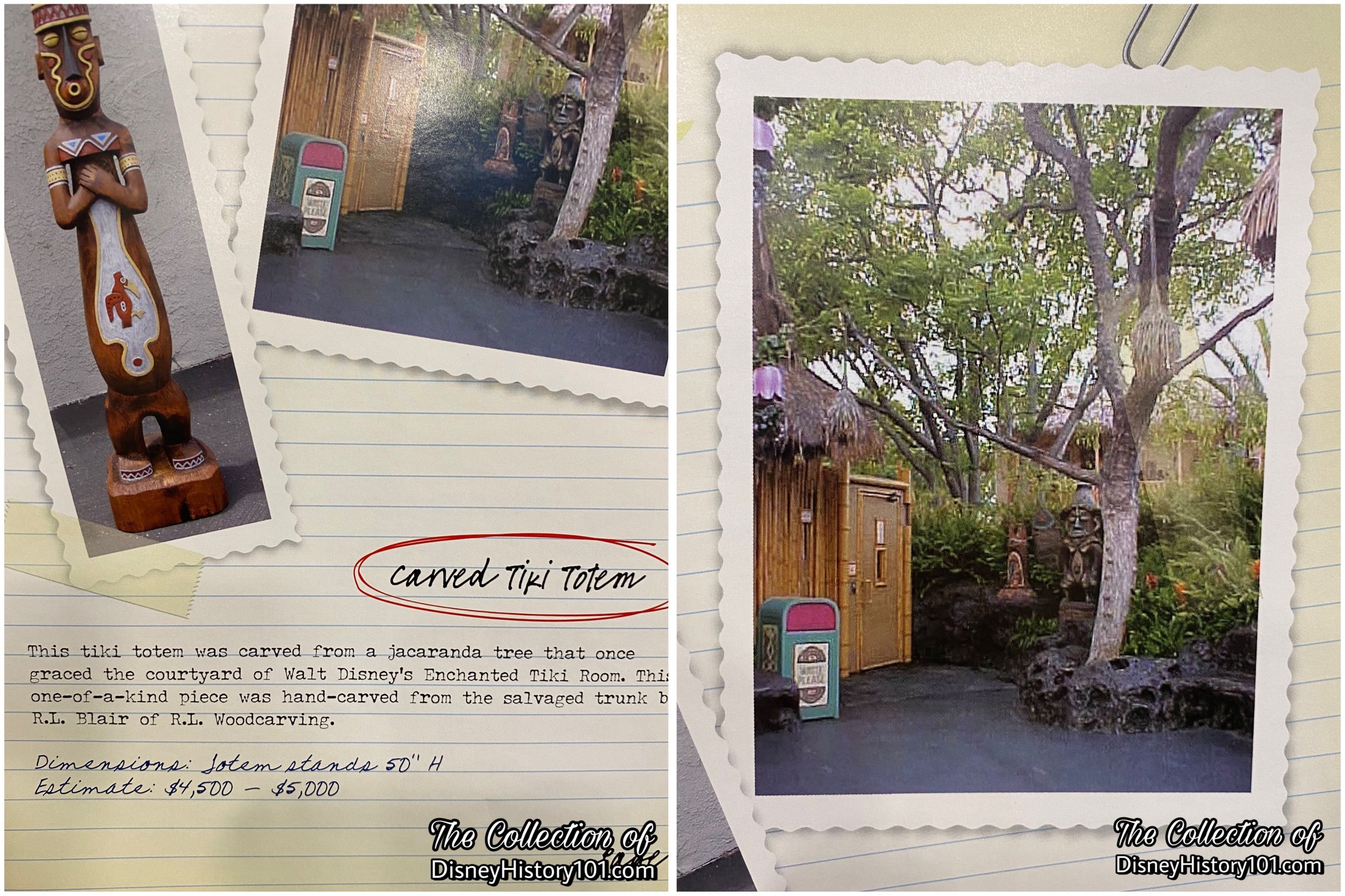
Tangaroa-Ru sold at the Disneyland Resort: Celebrating 50 Years of Magical Memories Auction.
Occassionally, Audio-Animatronics and props were sold through Disney Auctions and other auction companies.
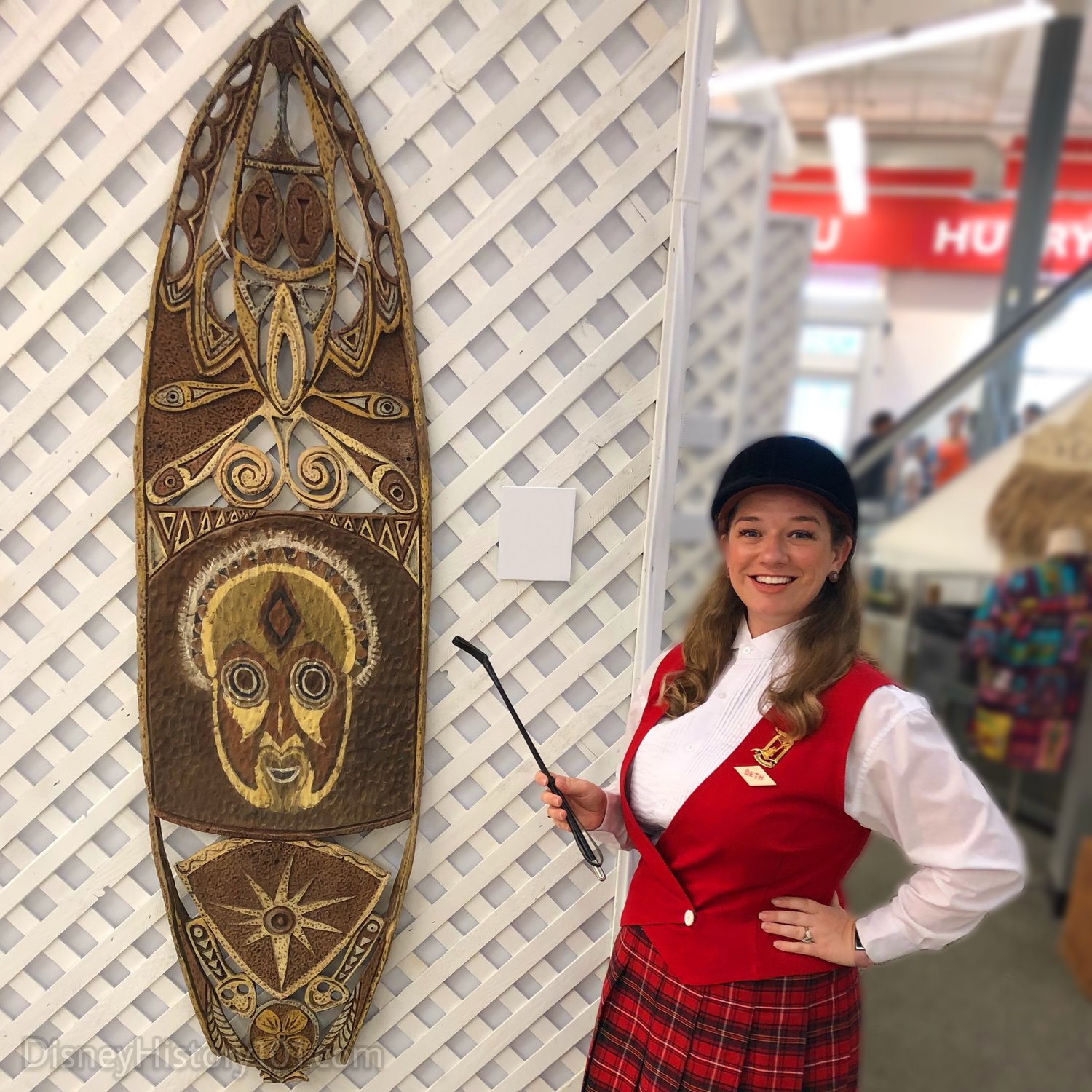
Walt Disney’s Enchanted Tiki Room Shield Prop
This shield was previously part of The Richard Kraft Collection; depicted on display Van Eaton Galleries: That’s From Disneyland Exhibition and Auction extravaganza!
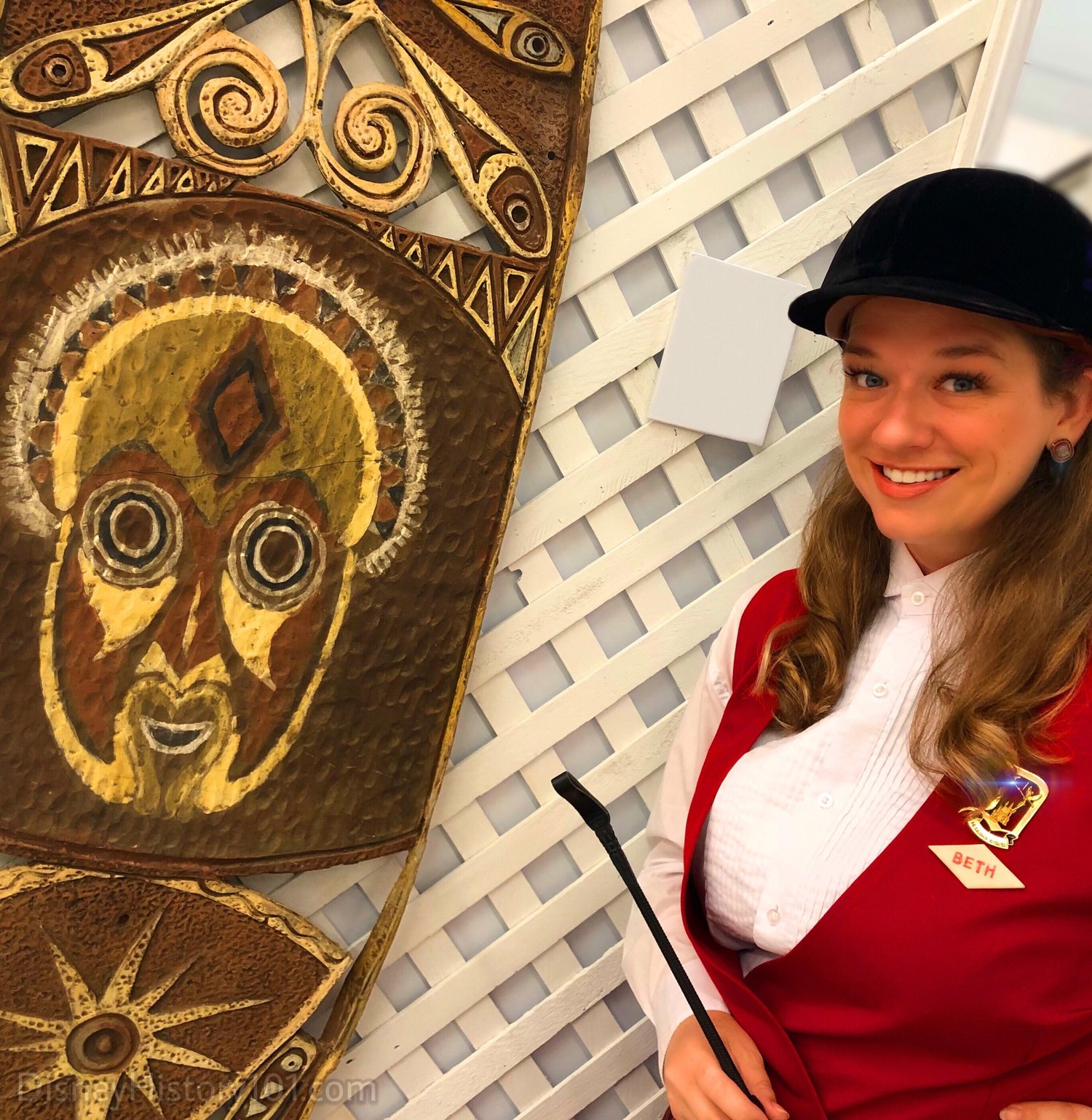
Walt Disney’s Enchanted Tiki Room Shield Prop
When it isn’t hanging two stories in the air, it’s easier to appreciate Rolly Crump’s Polynesian inspired design. Rolly’s designs were also present in the neighboring Tahitian Terrace.
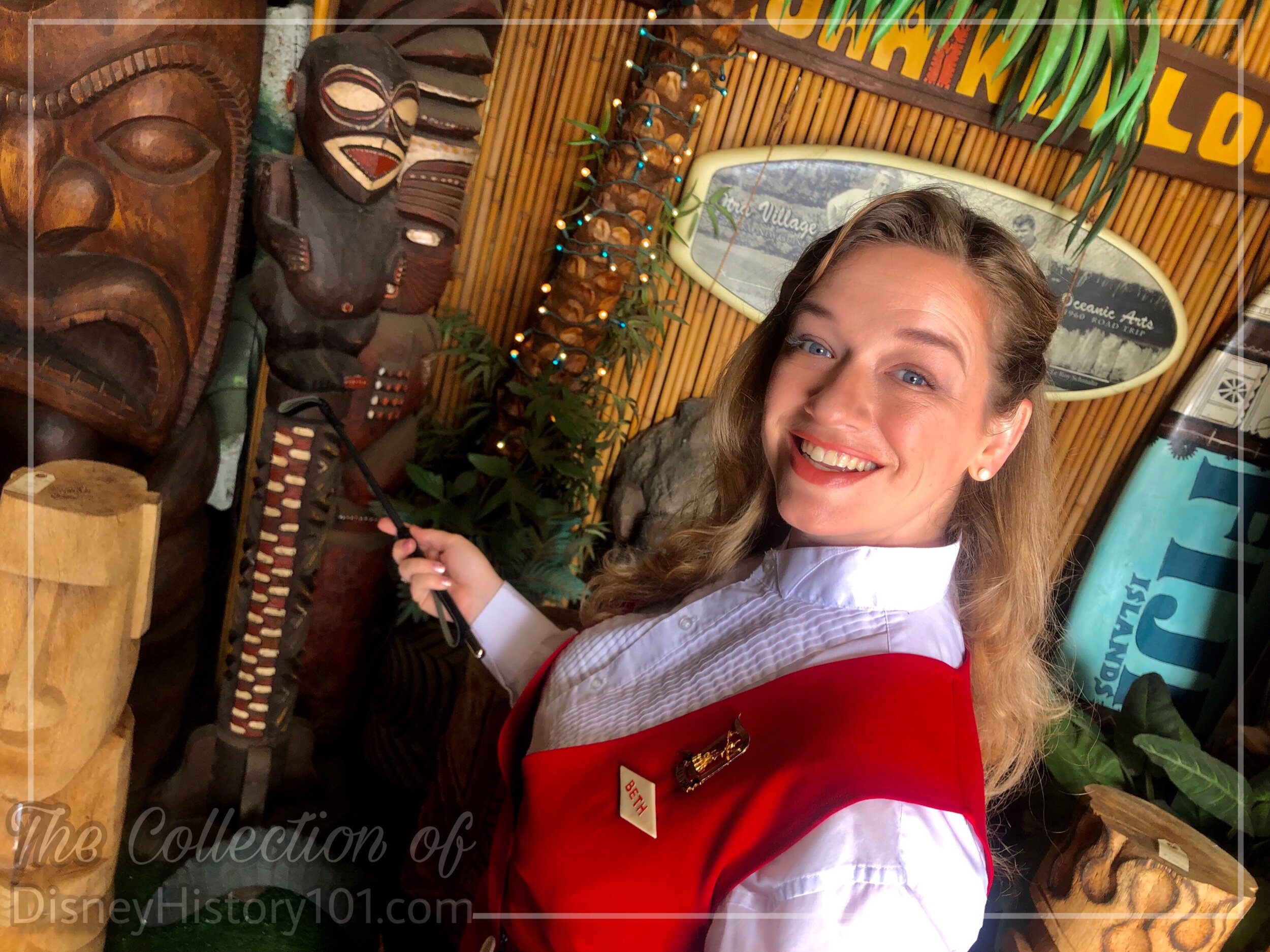
New Life from Tongaroa.
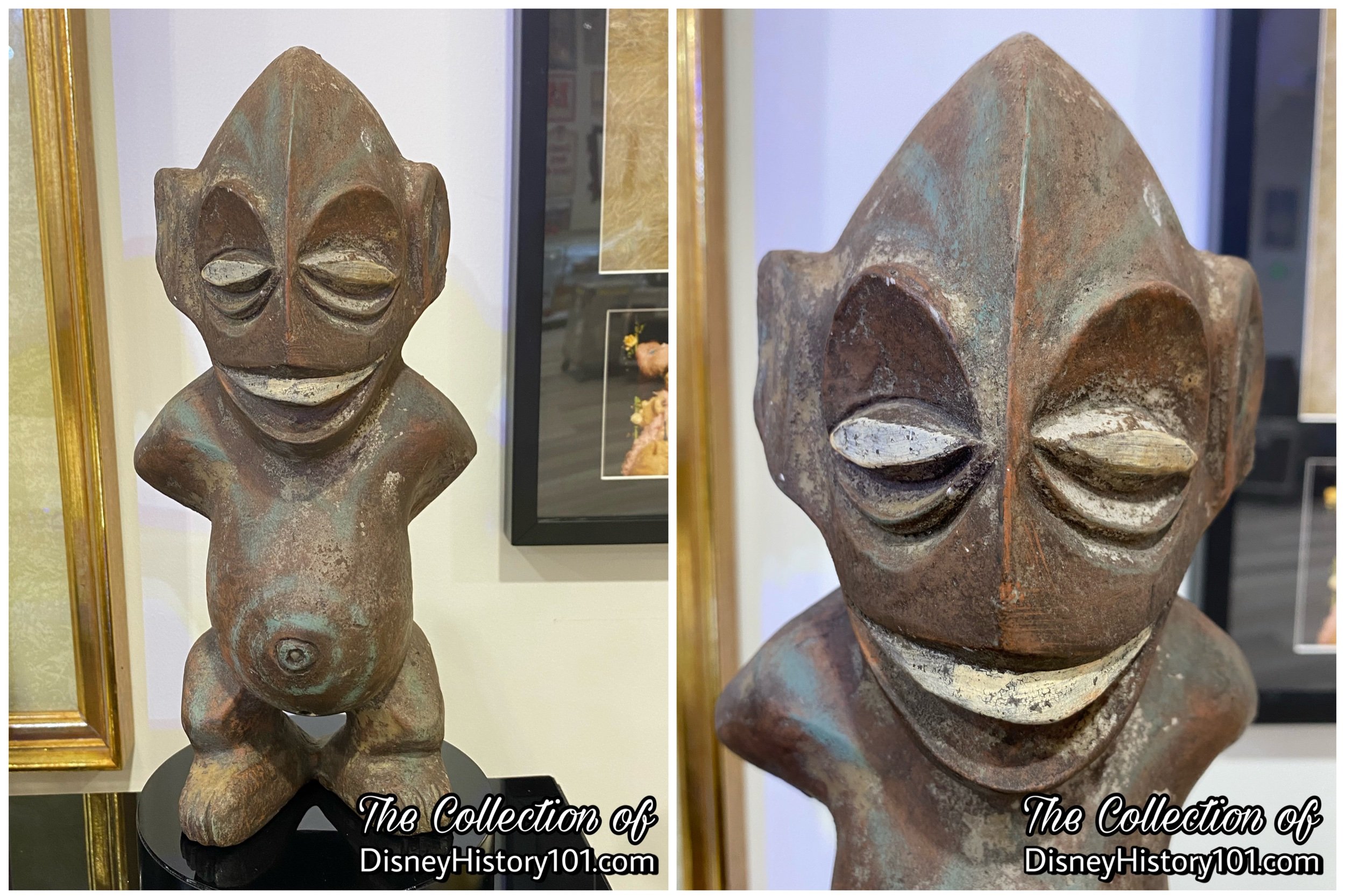
New Life from Tongaroa.
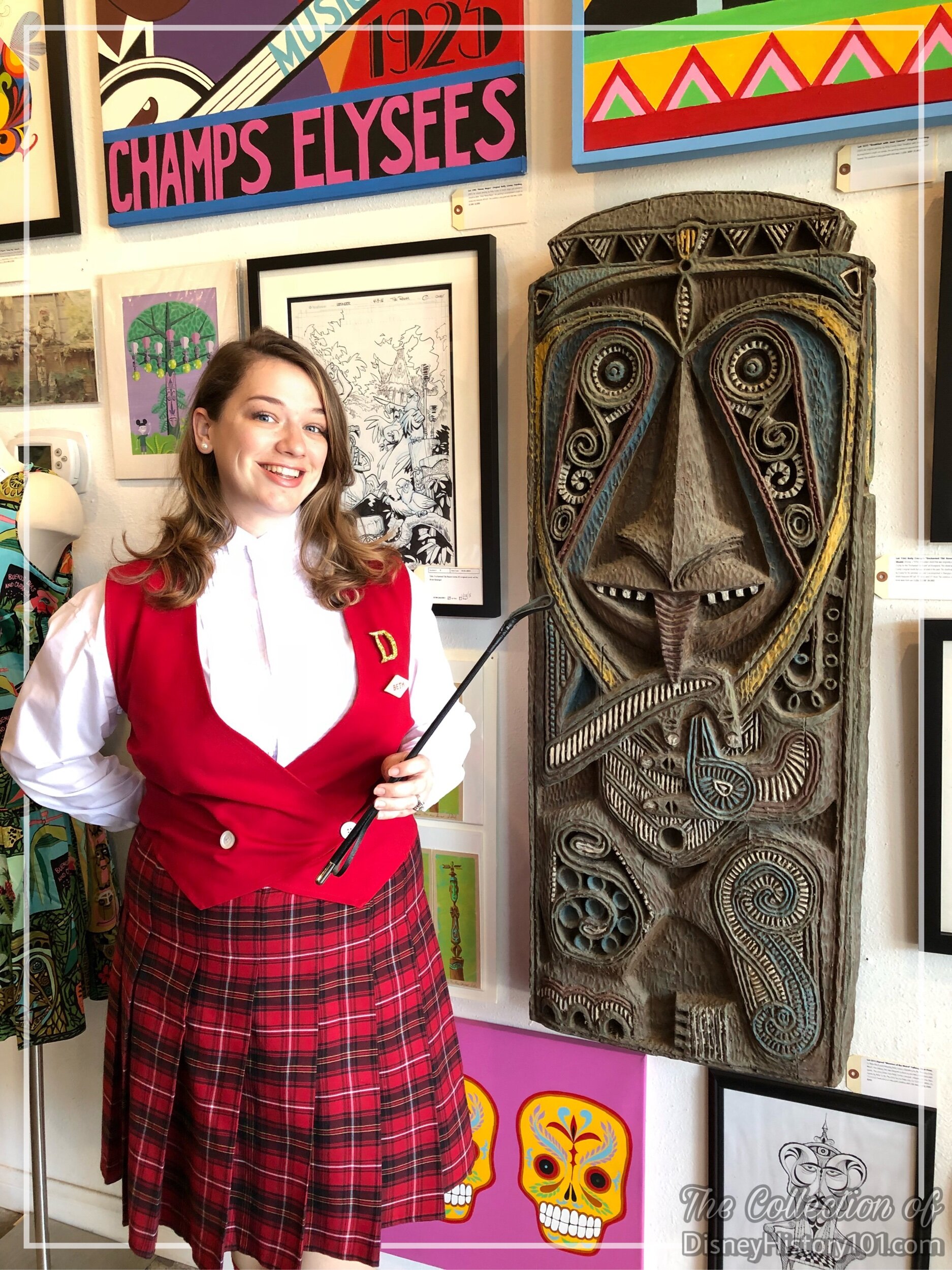
Fountain Shield

Fountain Shield Detail.
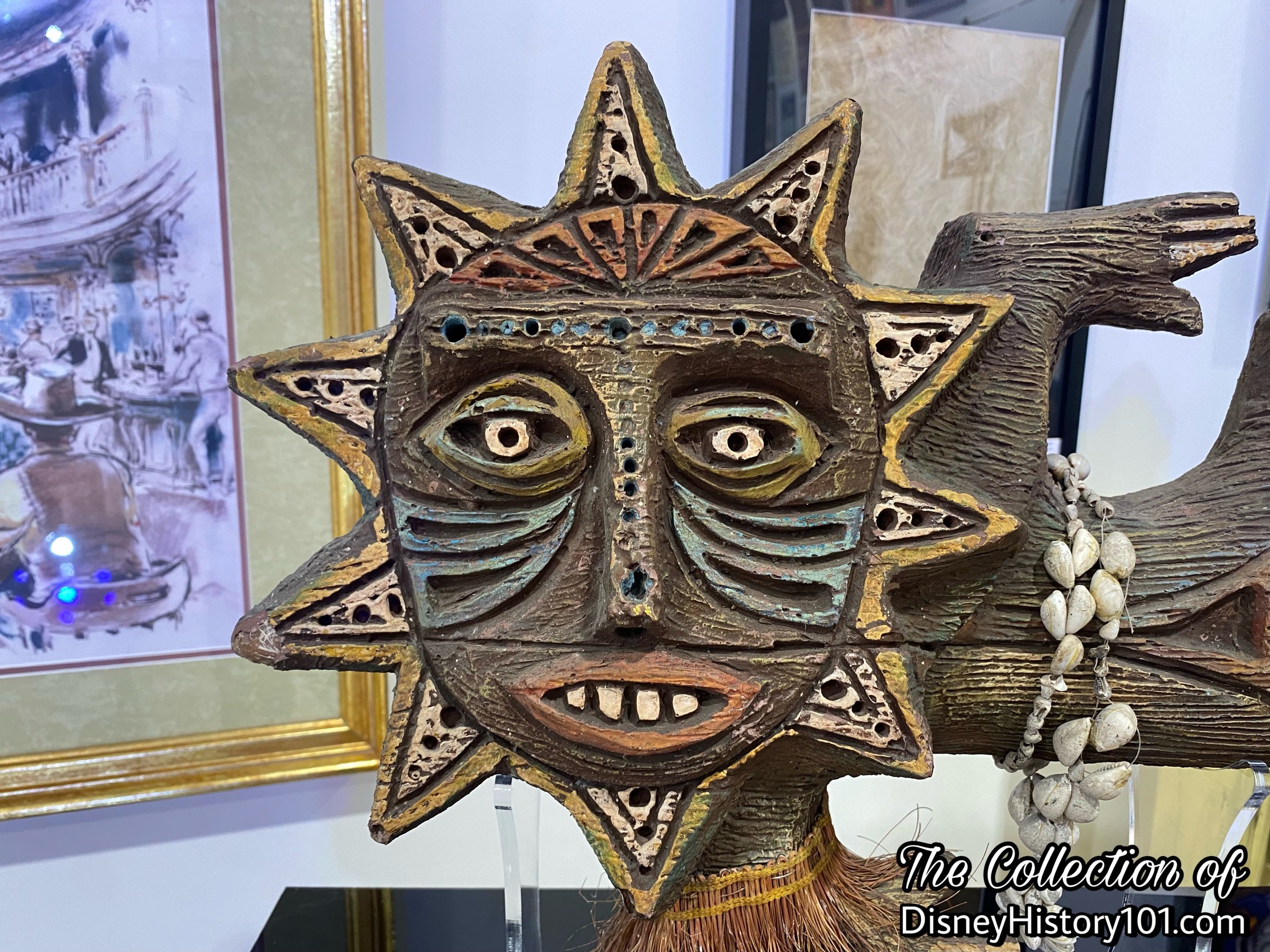
The Playful Sun.
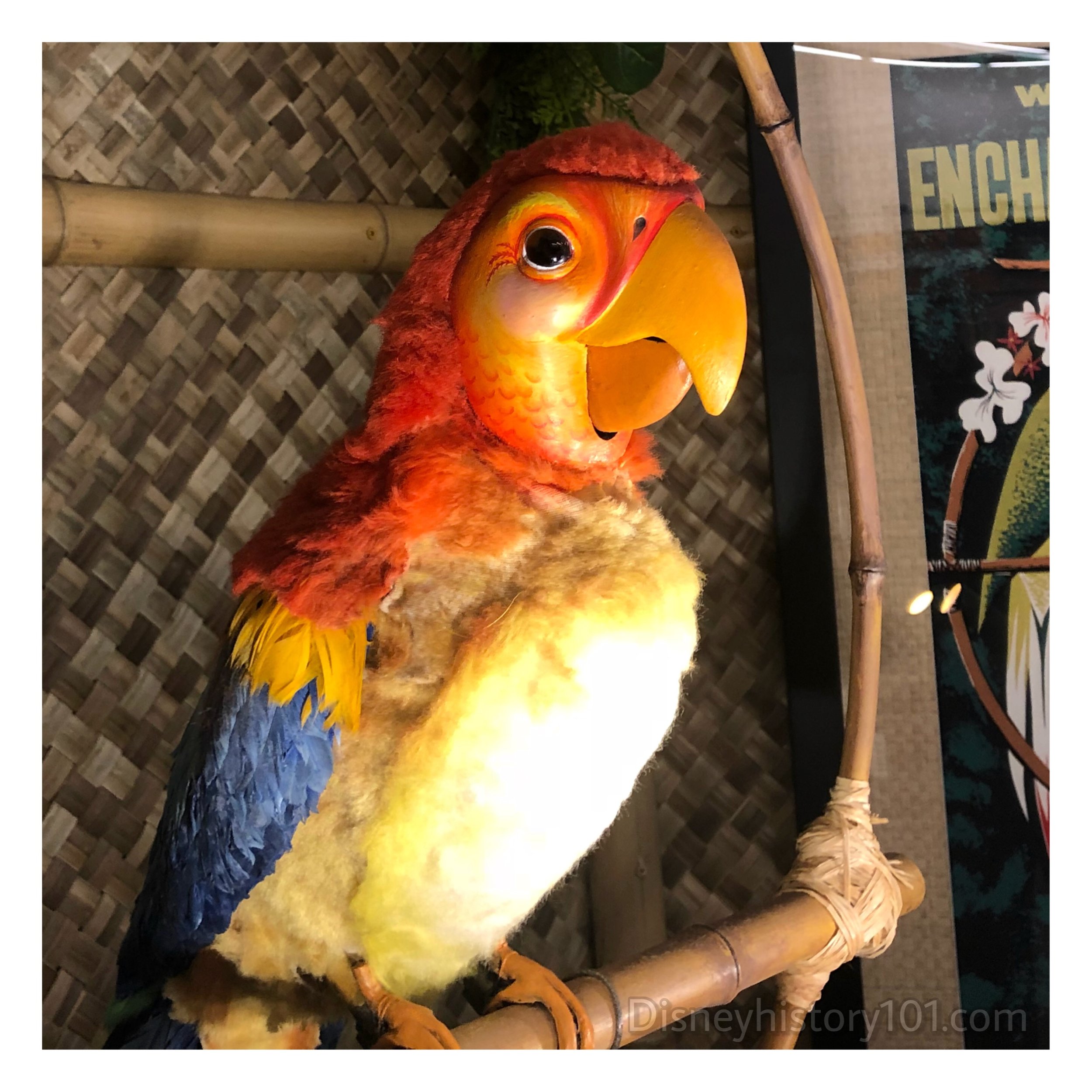
A Tiki Bird at a Van Eaton Galleries auction sale.
Above, you’re looking at one of the four “MacAudios” - Jose!
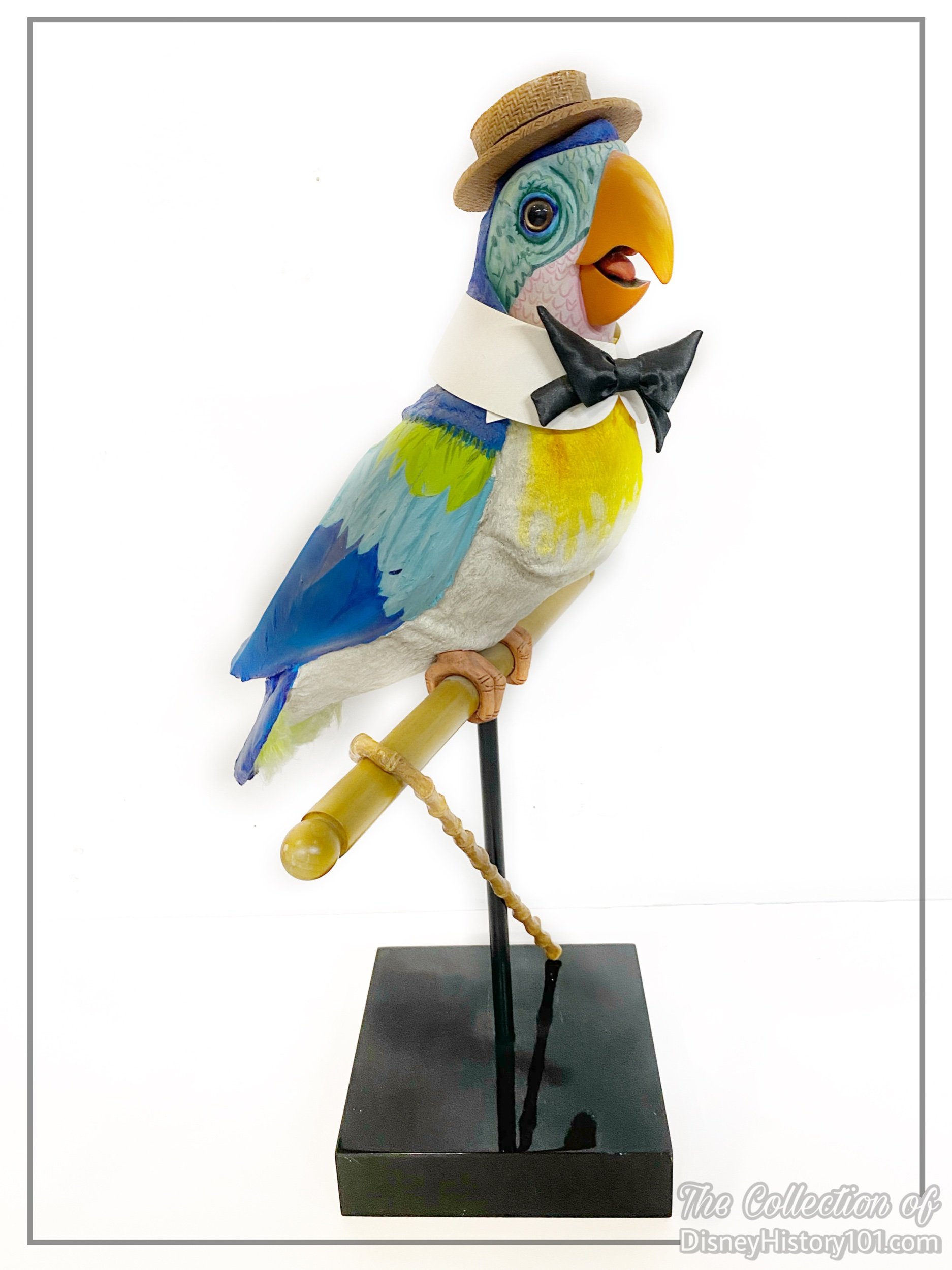
Juan the Barker Bird Disney Big Figure.
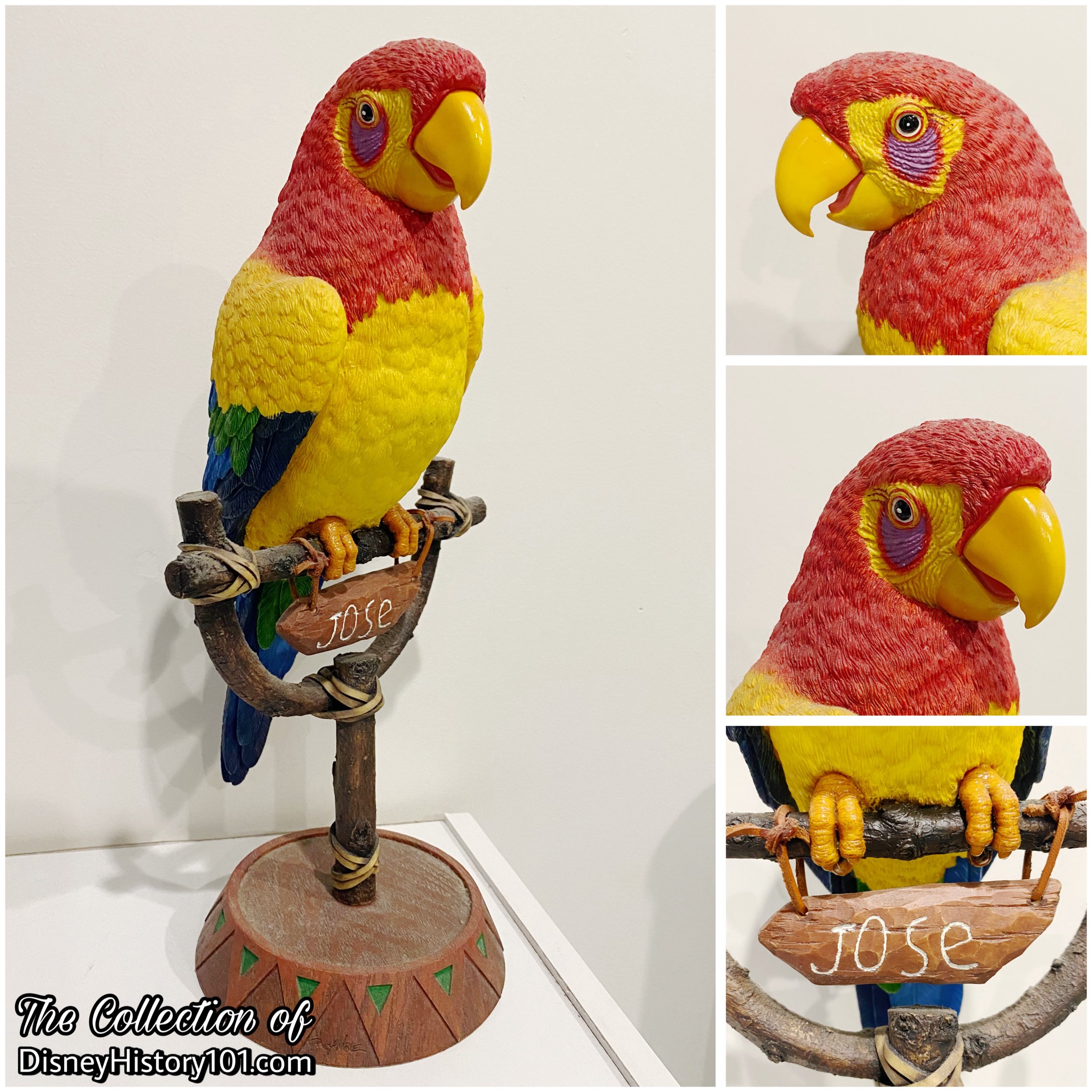
The Art of Disney Theme Parks Jose Big Figure by Randy Noble.
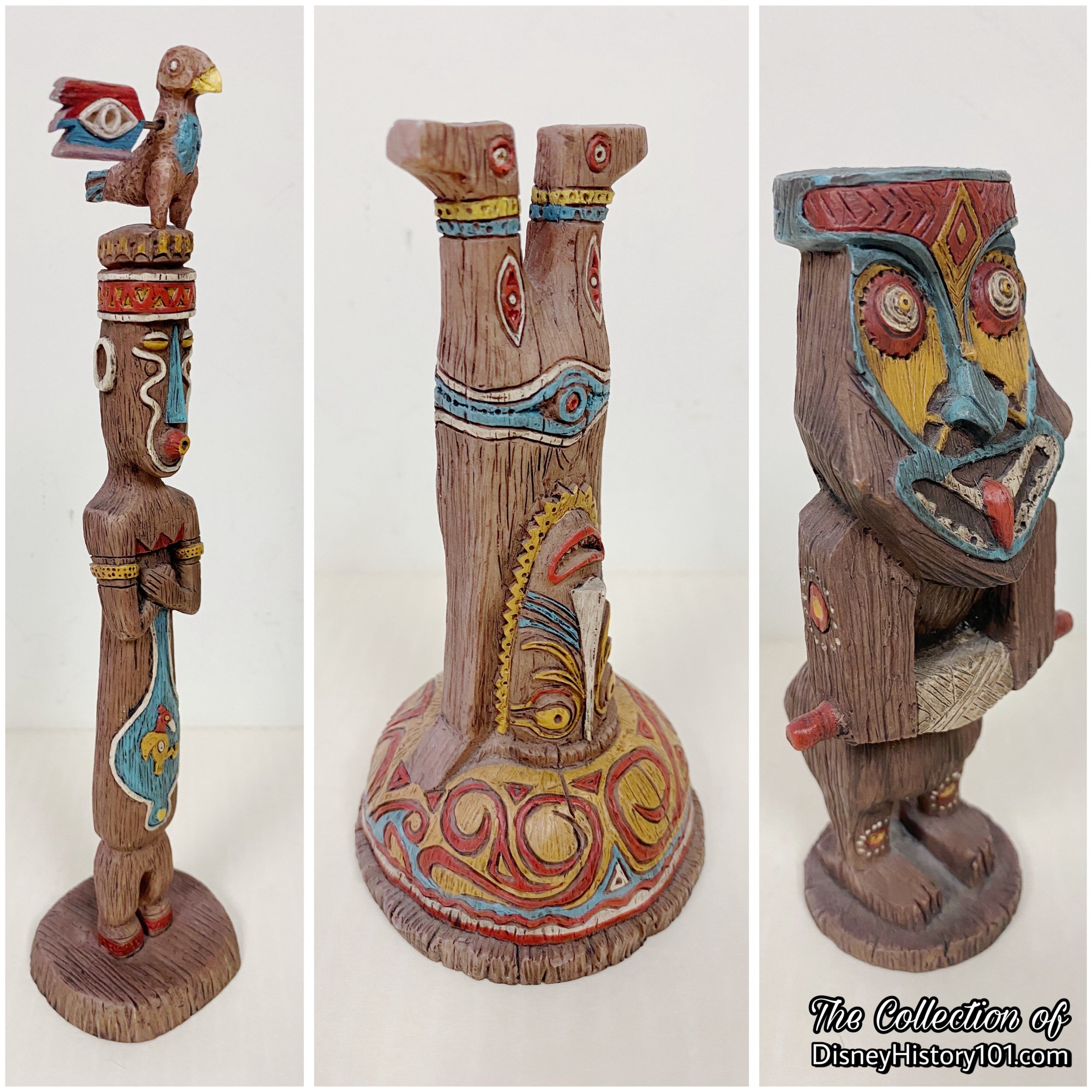
Walt Disney's Enchanted Tiki Room Set designed by Kevin Kidney and Jody Daily.
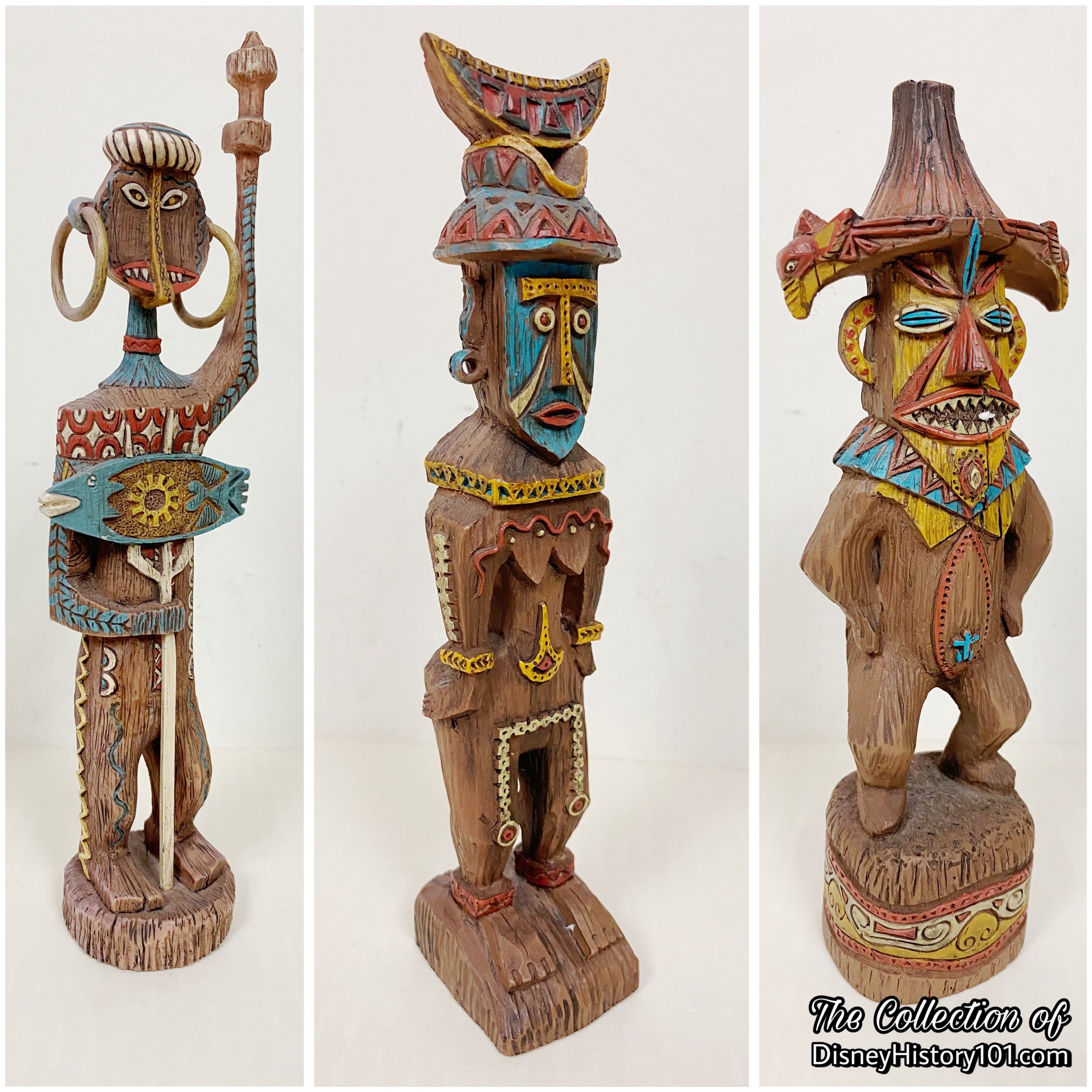
Walt Disney's Enchanted Tiki Room Set designed by Kevin Kidney and Jody Daily.
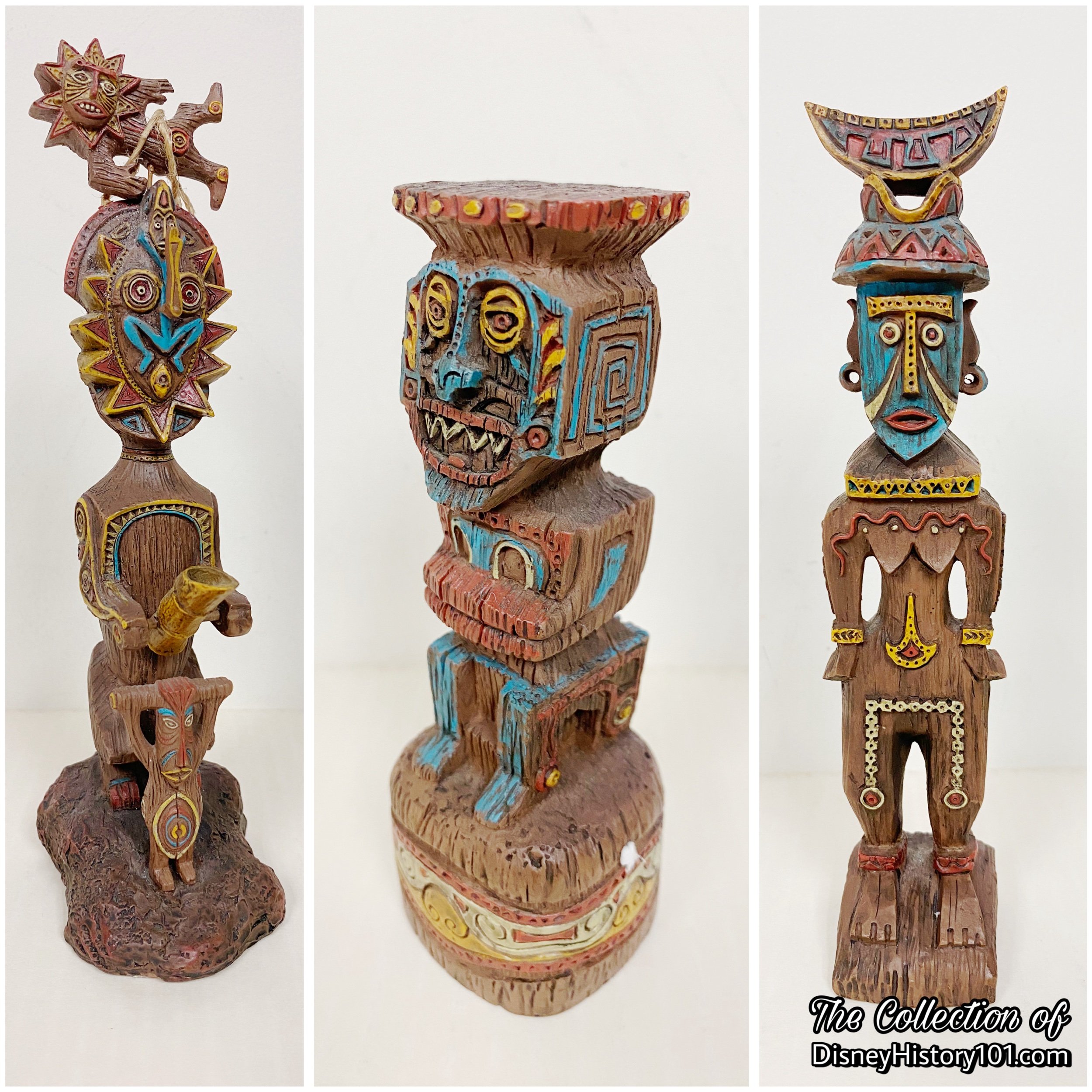
Walt Disney's Enchanted Tiki Room Set designed by Kevin Kidney and Jody Daily.
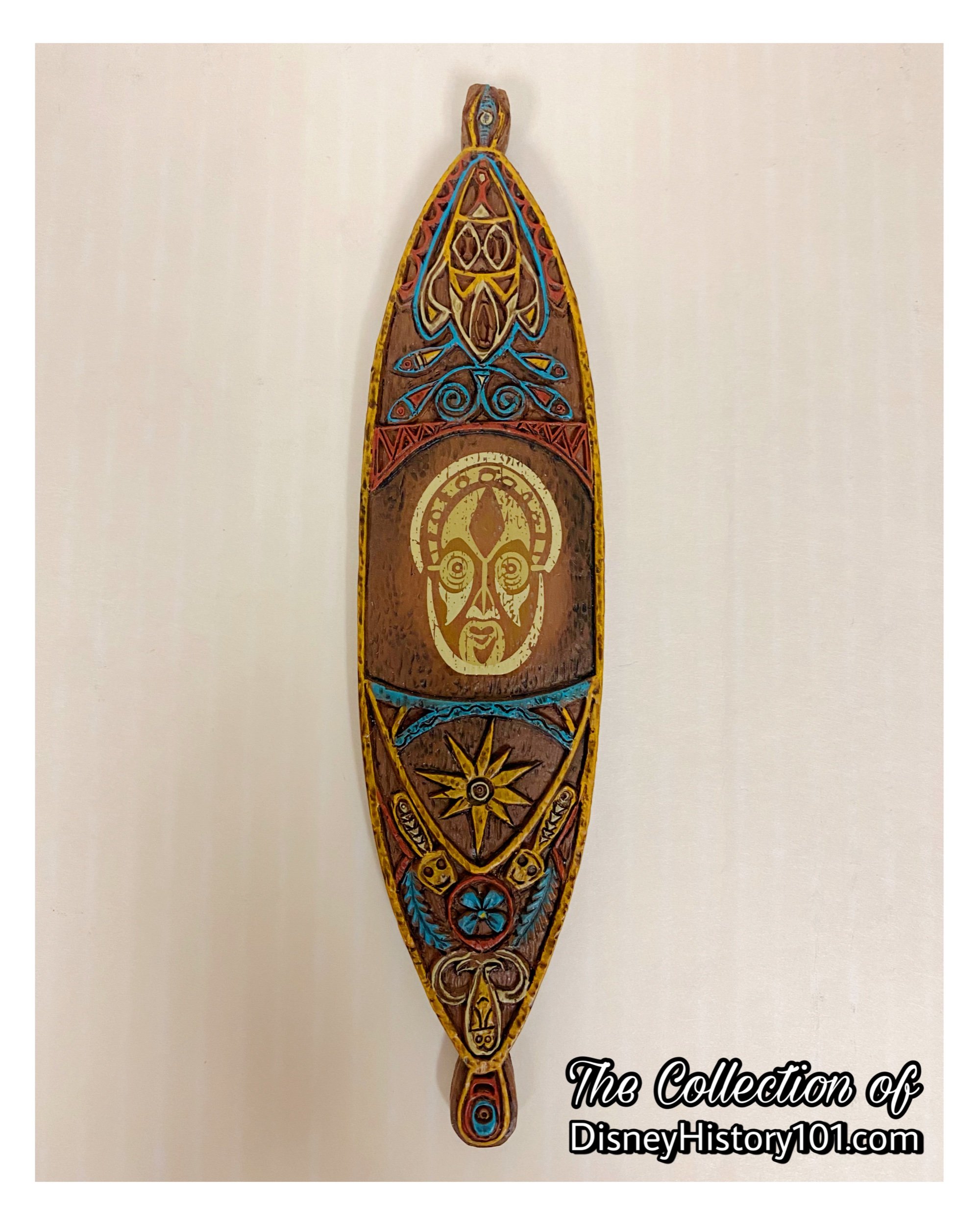
Walt Disney's Enchanted Tiki Room Set designed by Kevin Kidney and Jody Daily.

